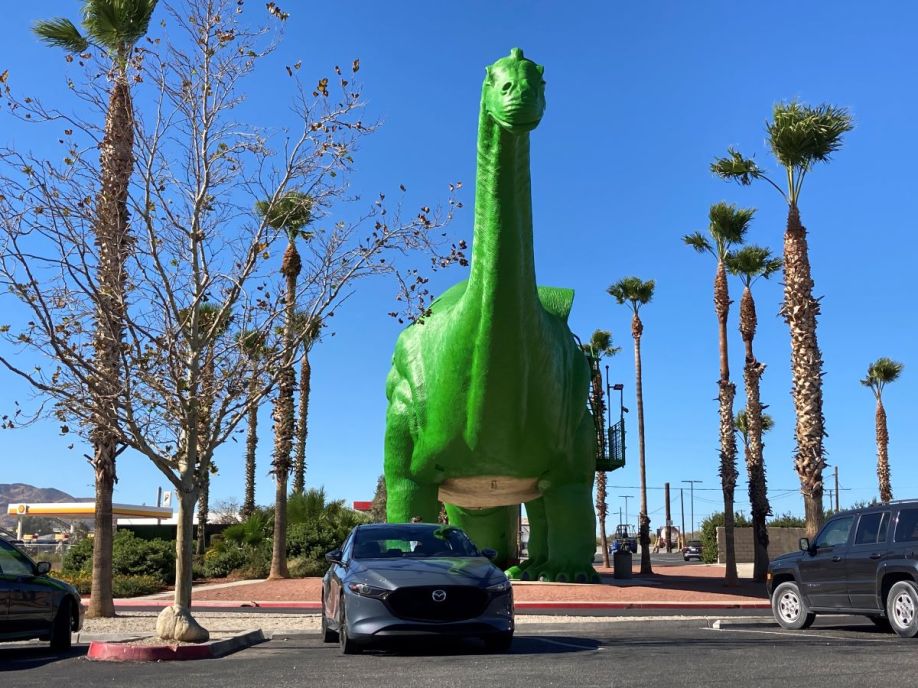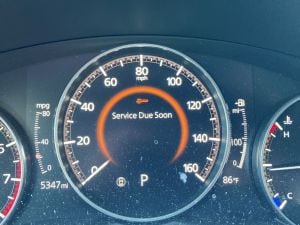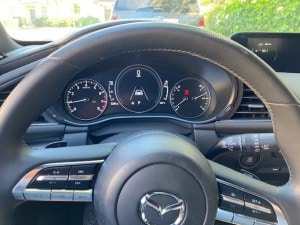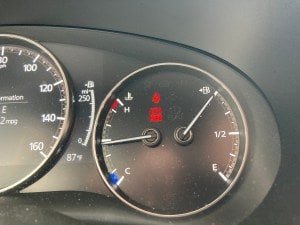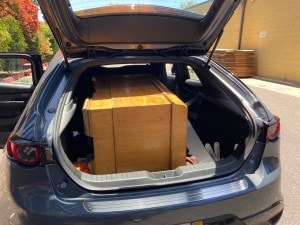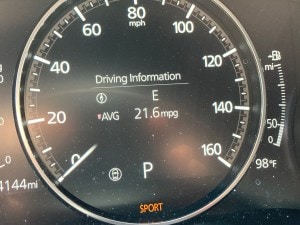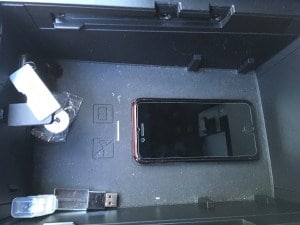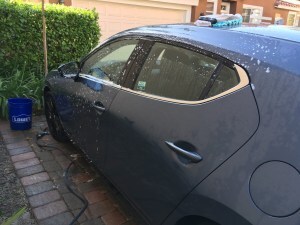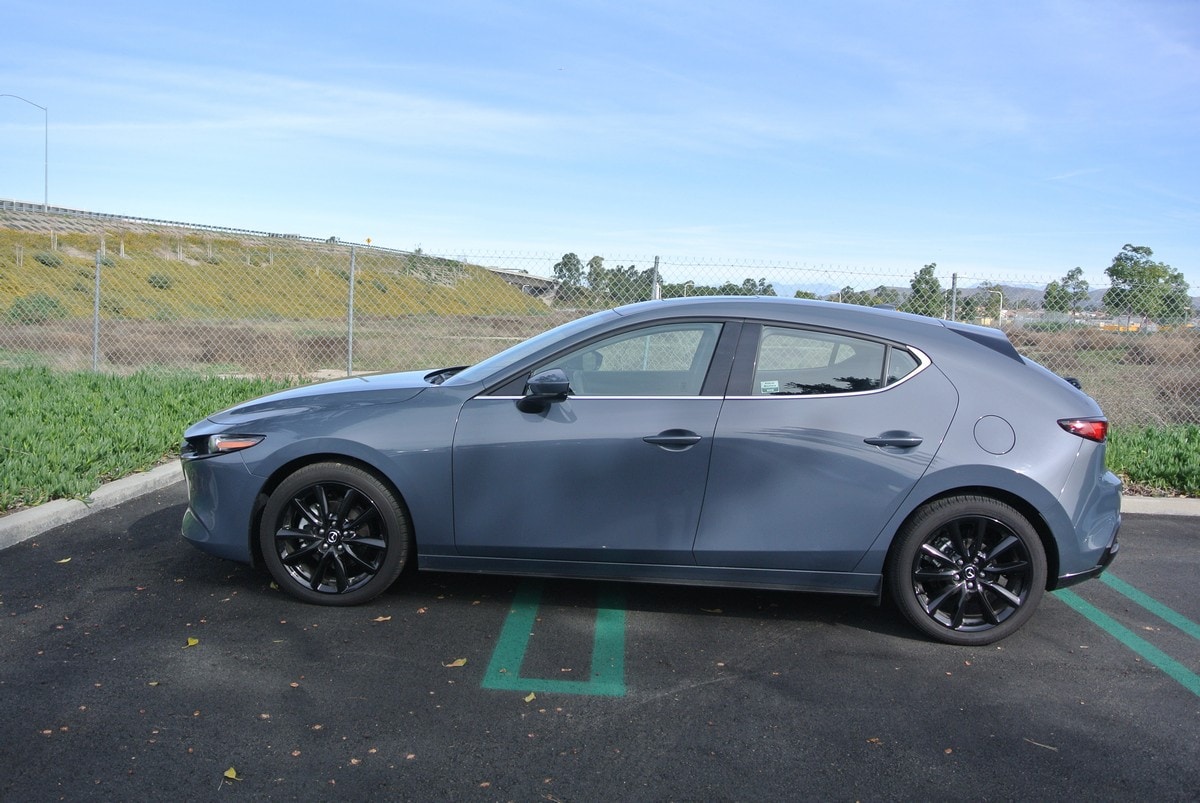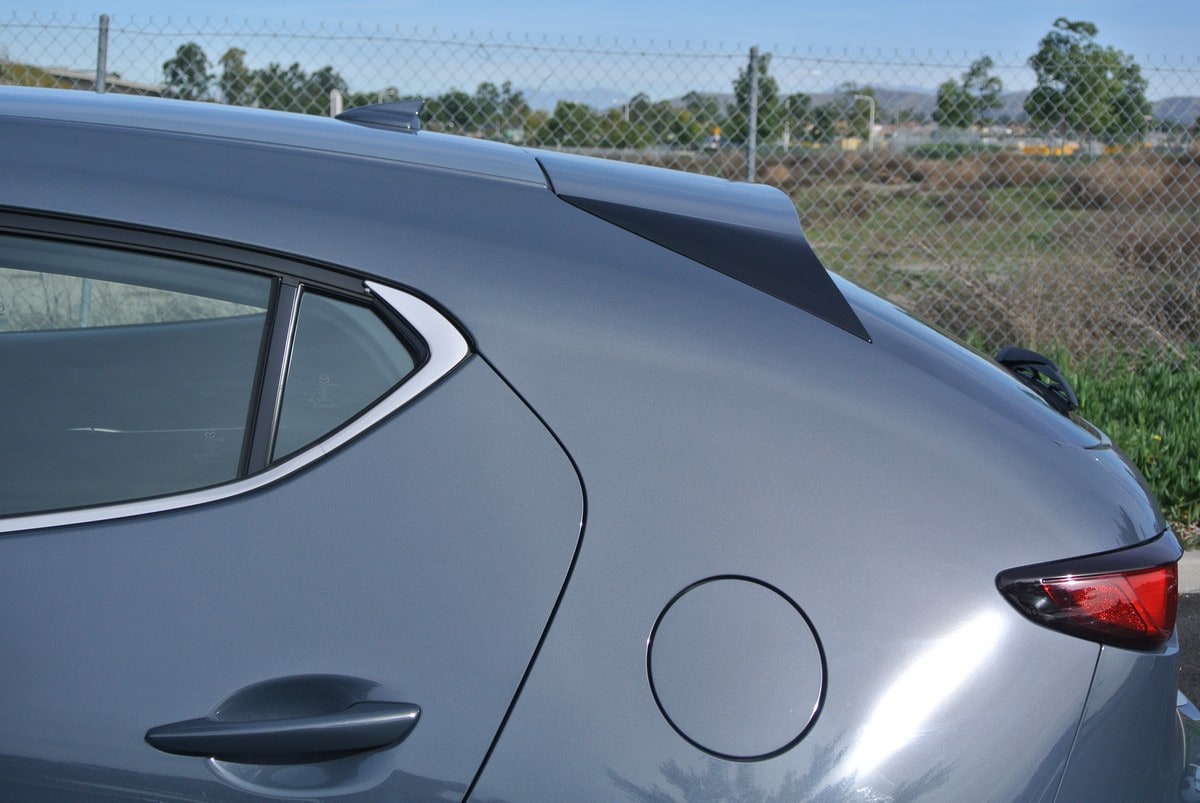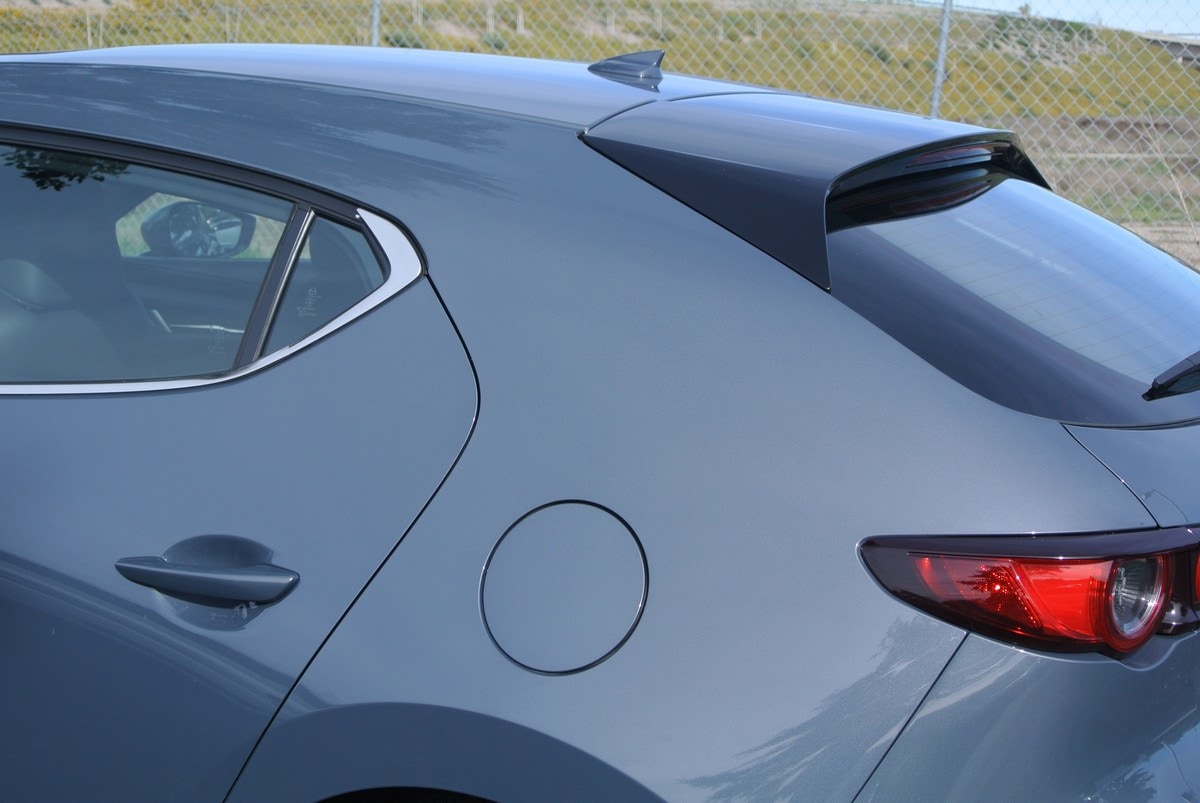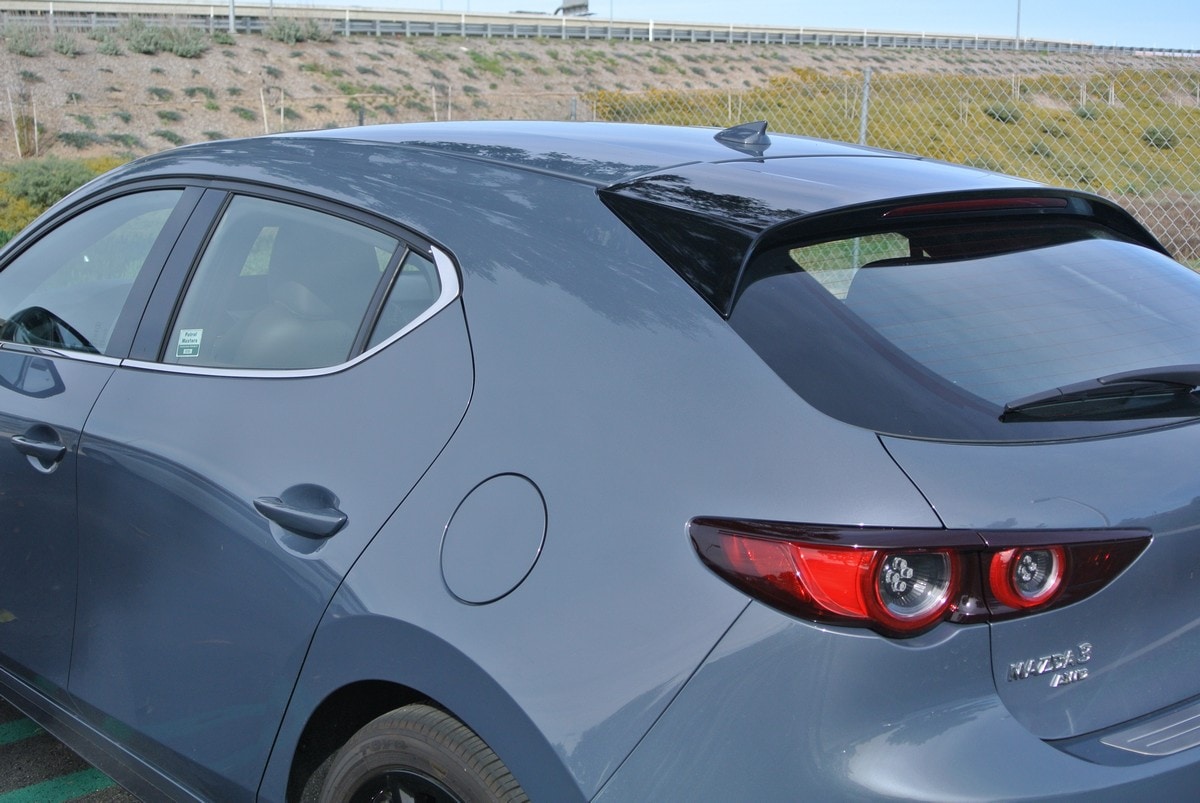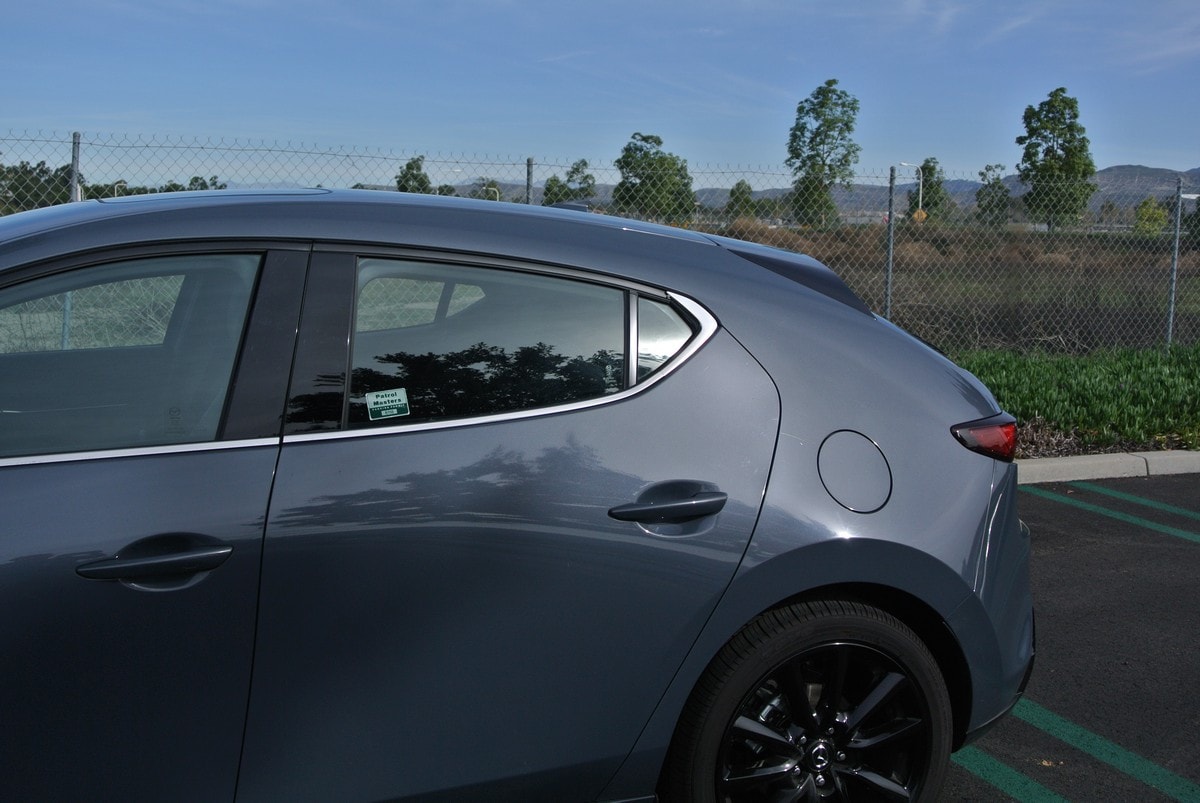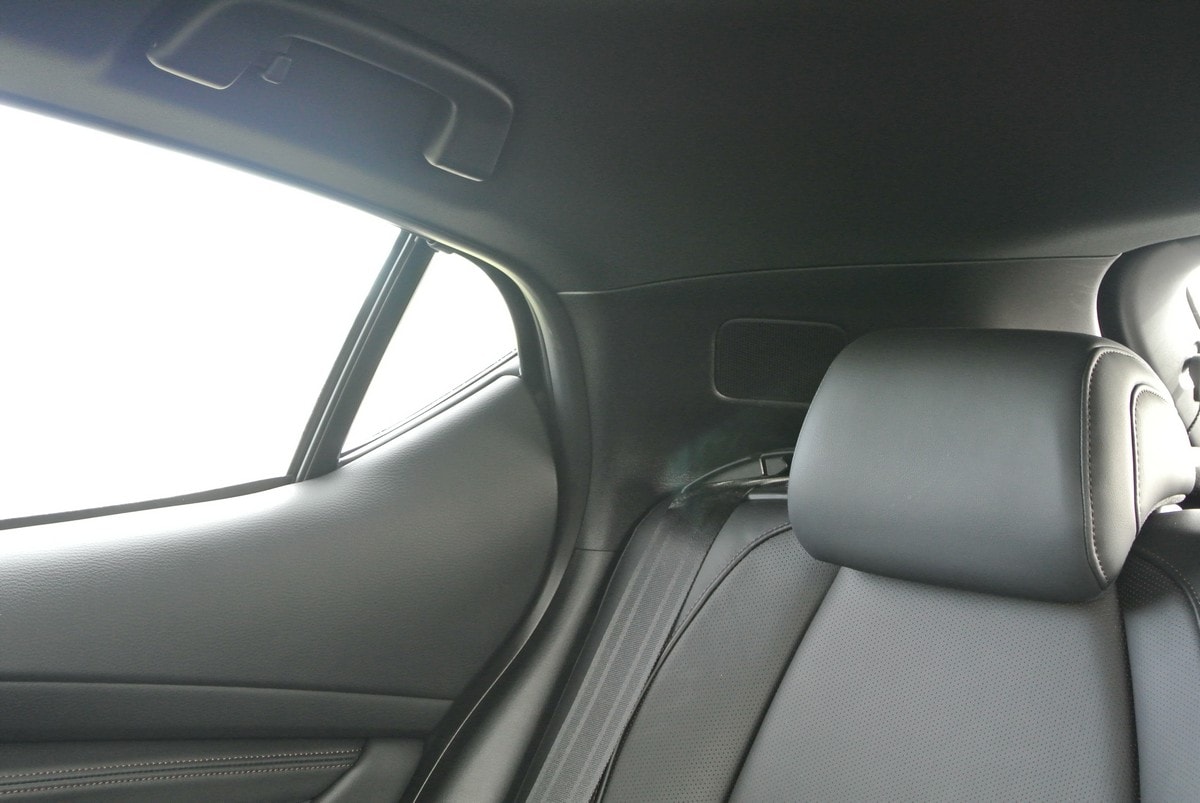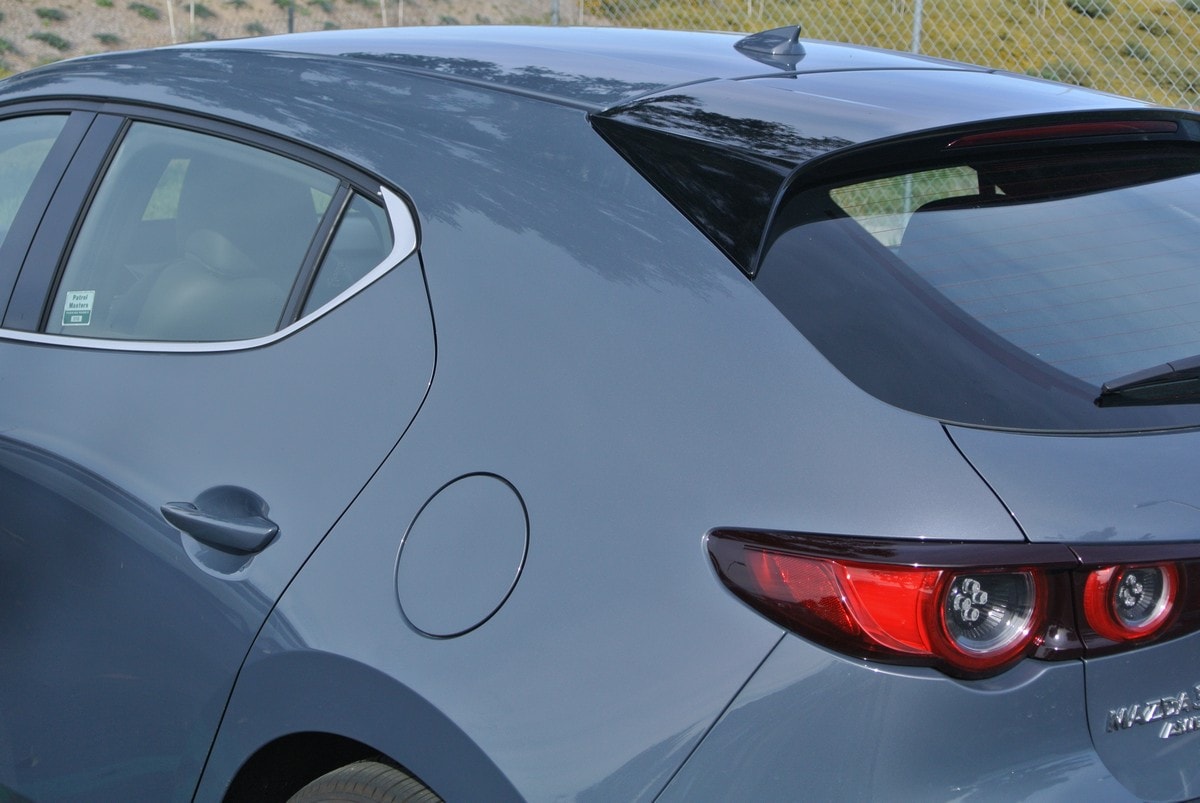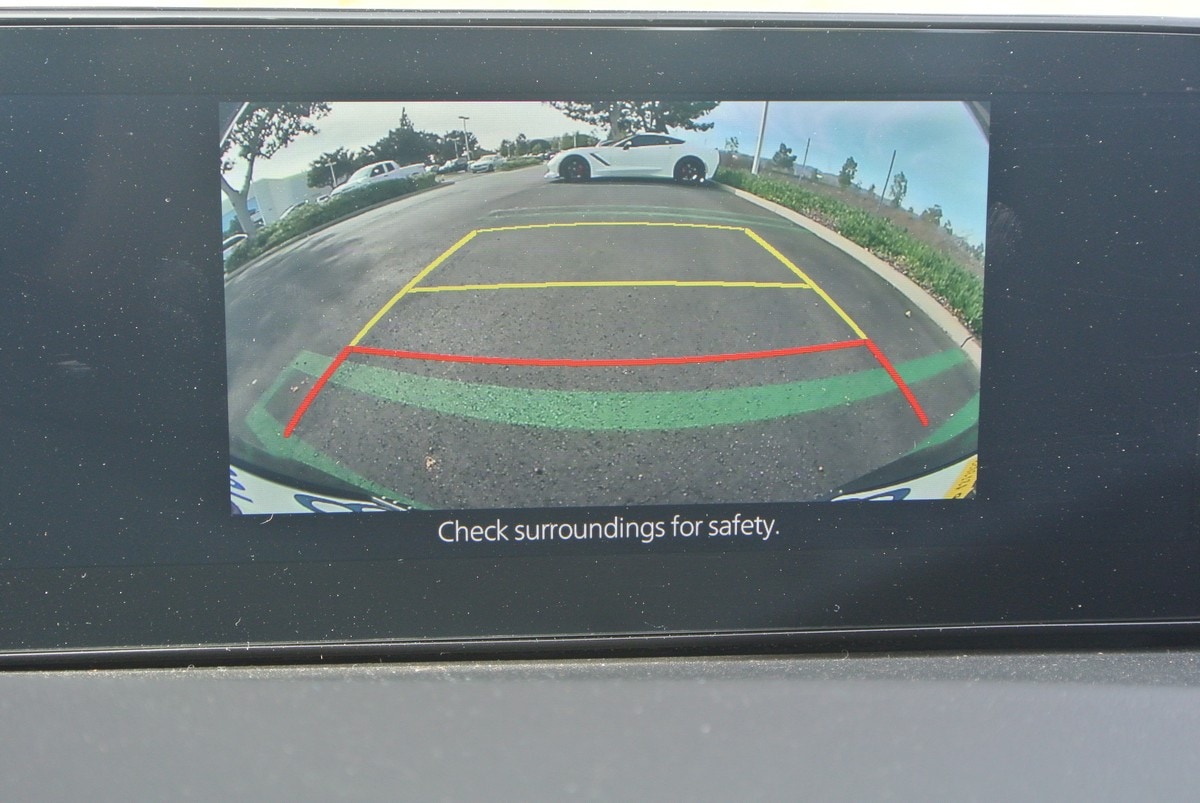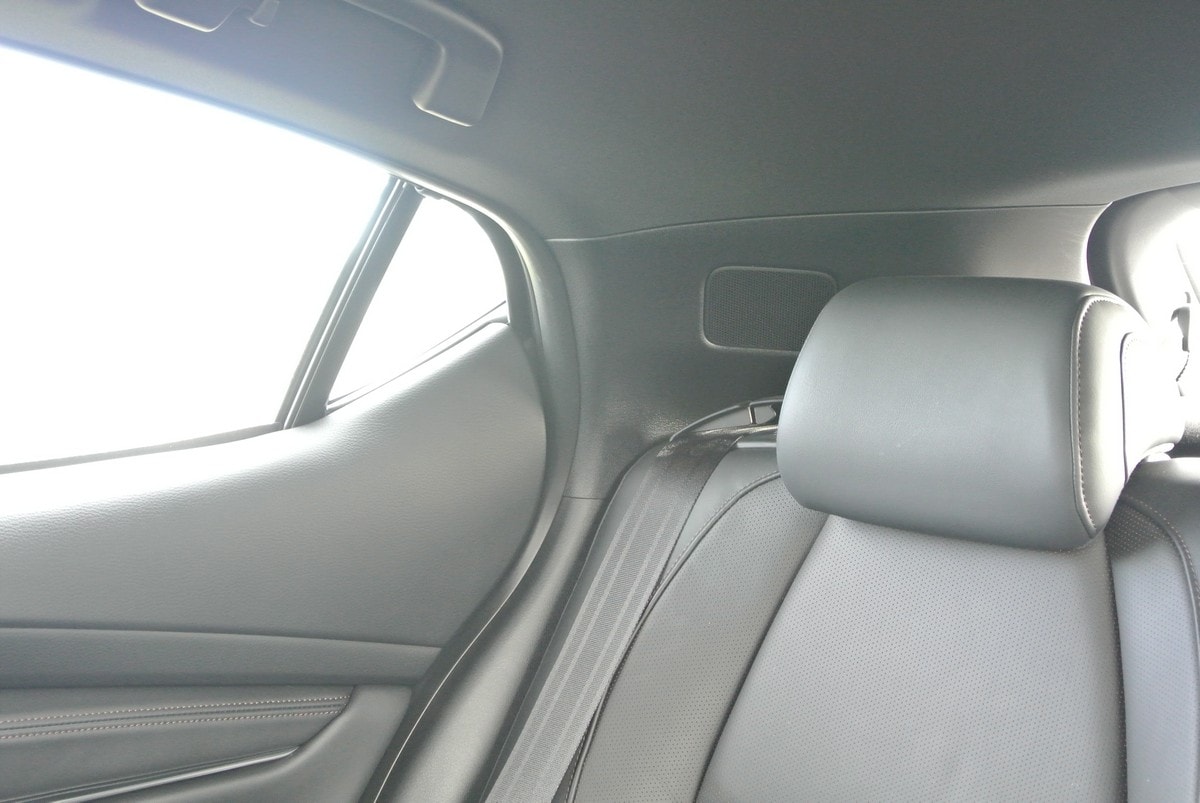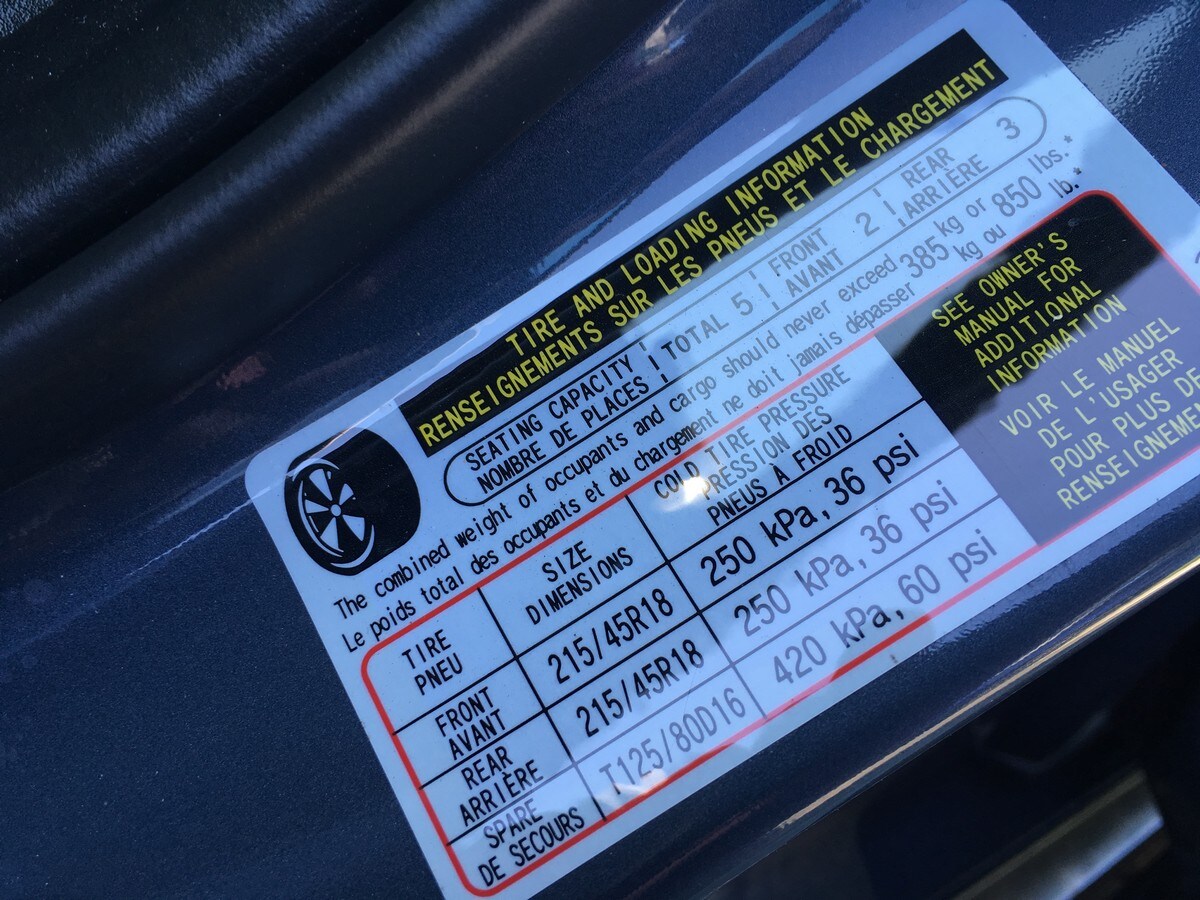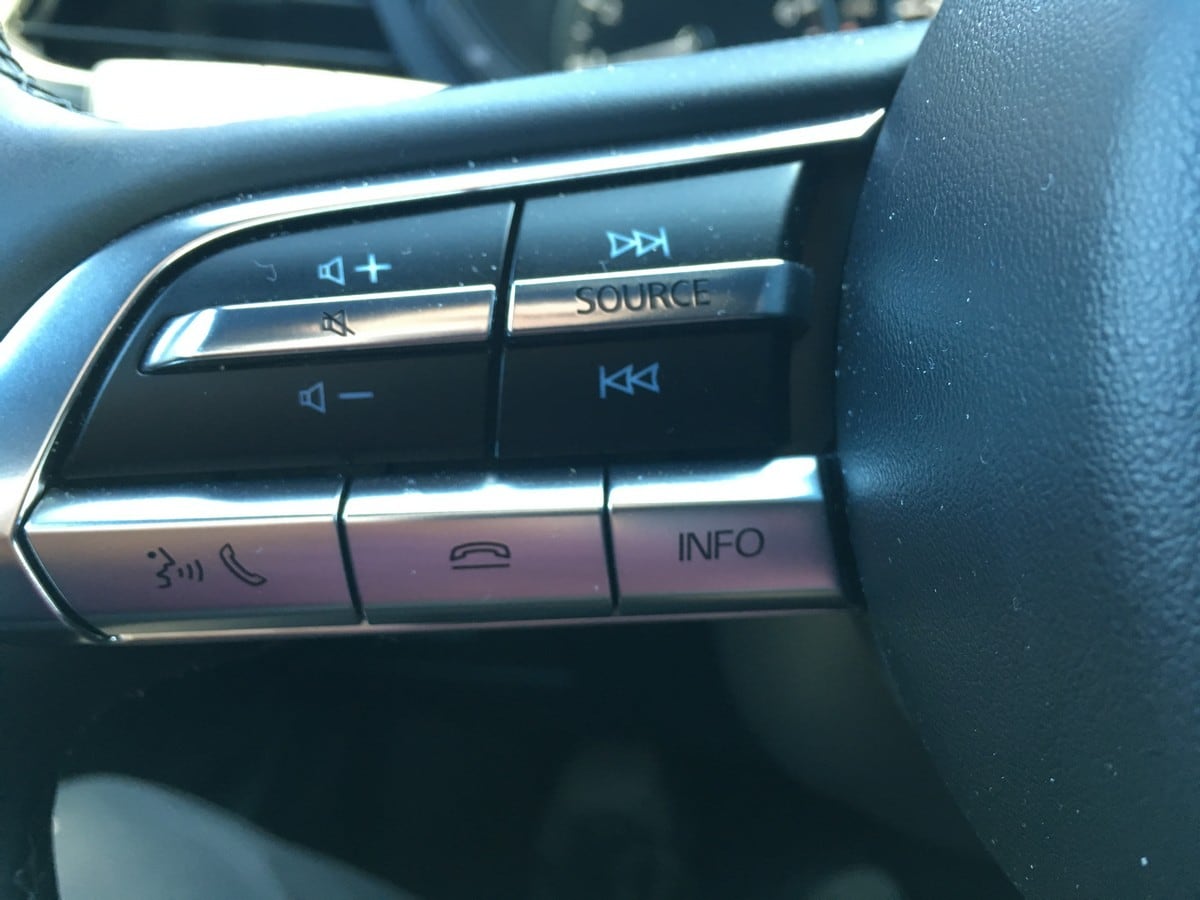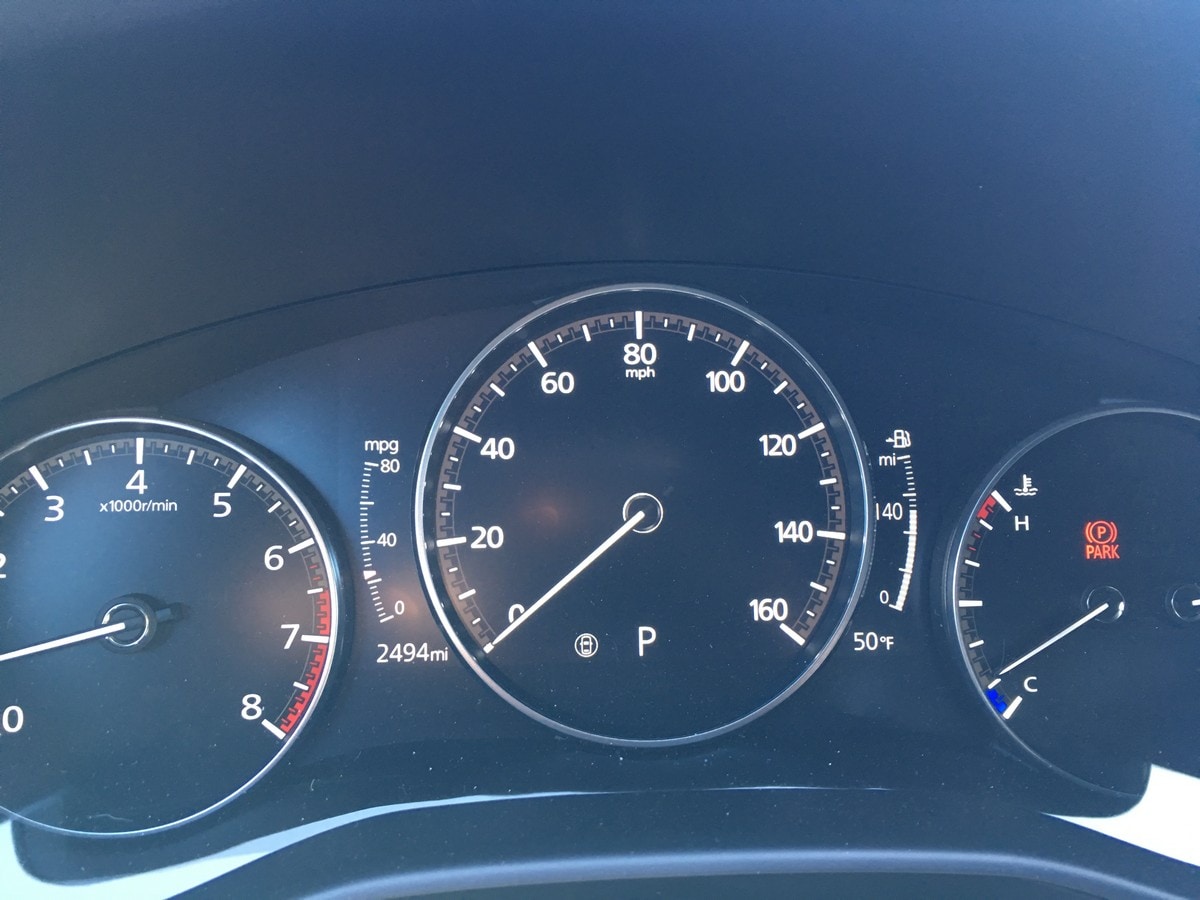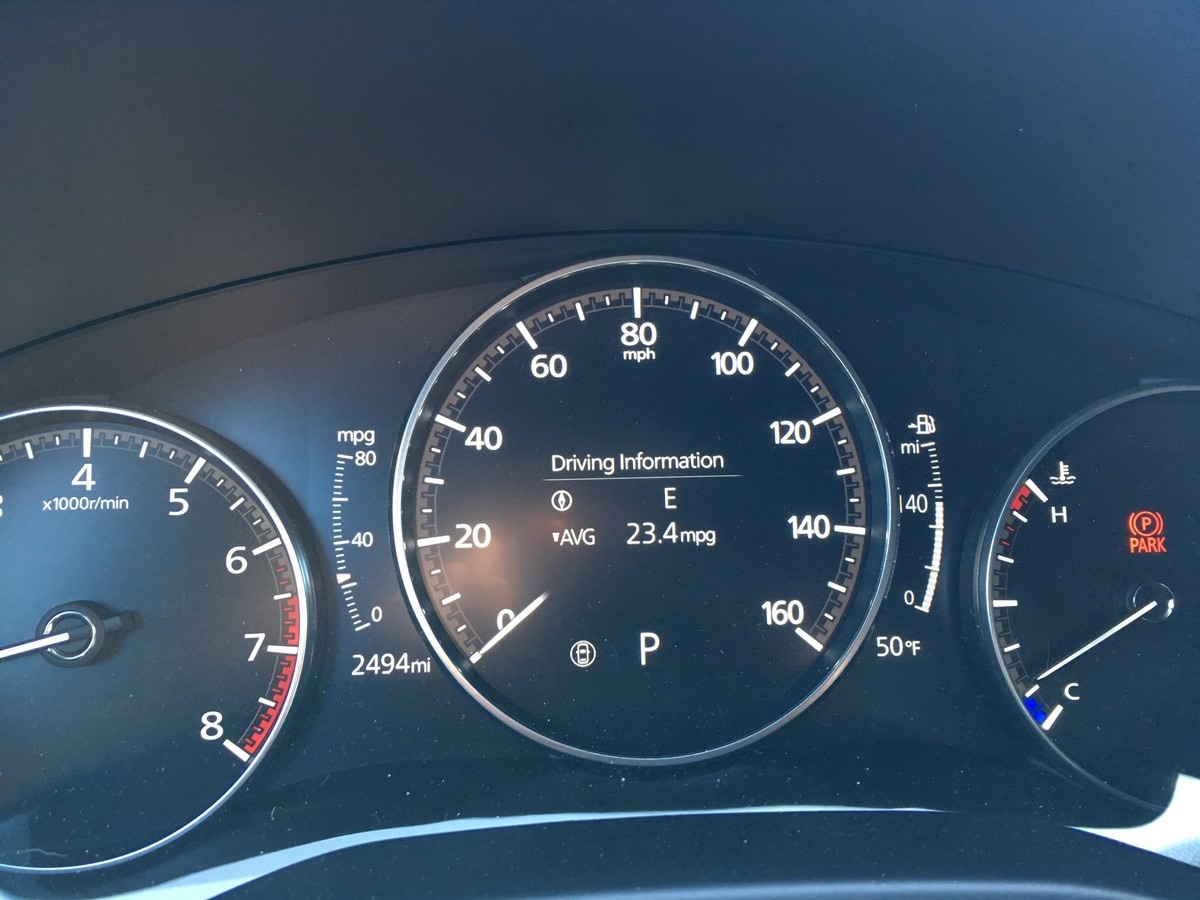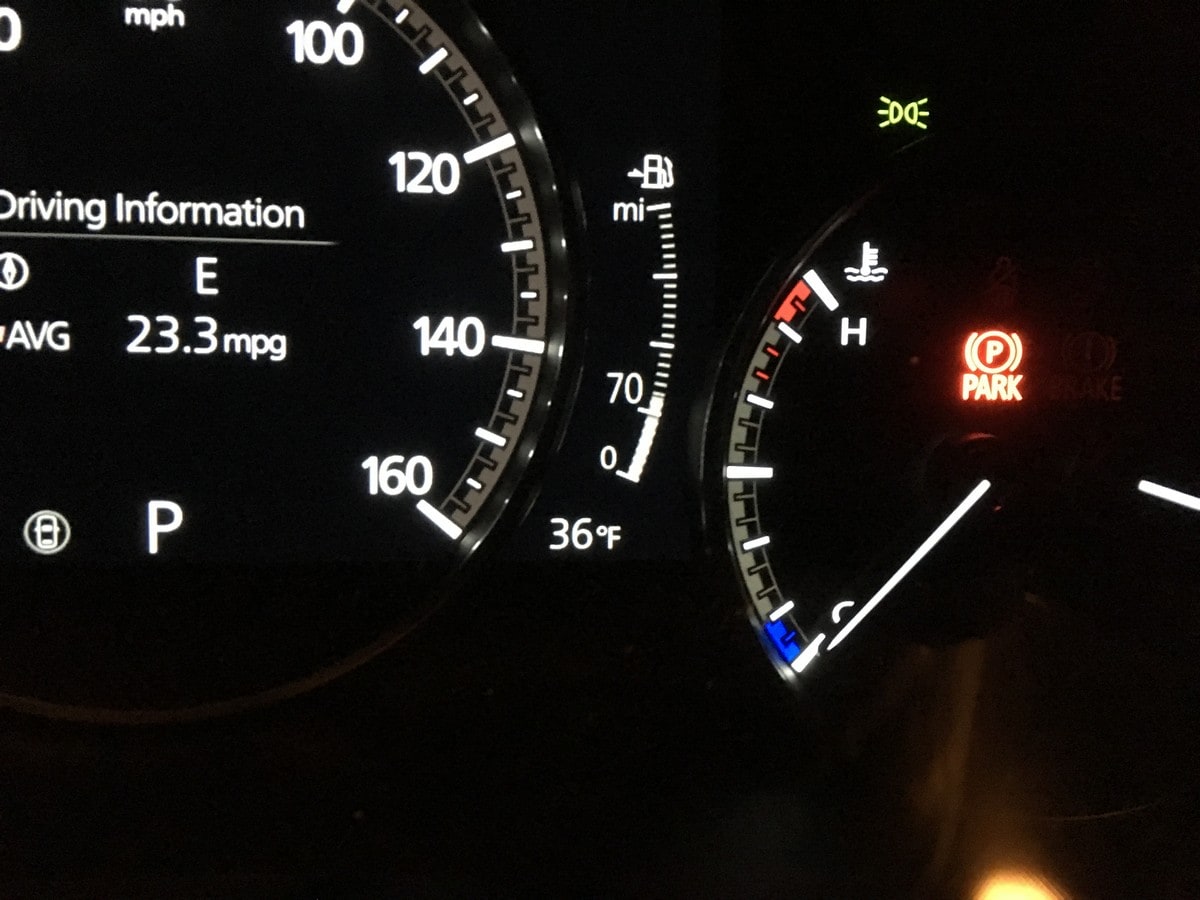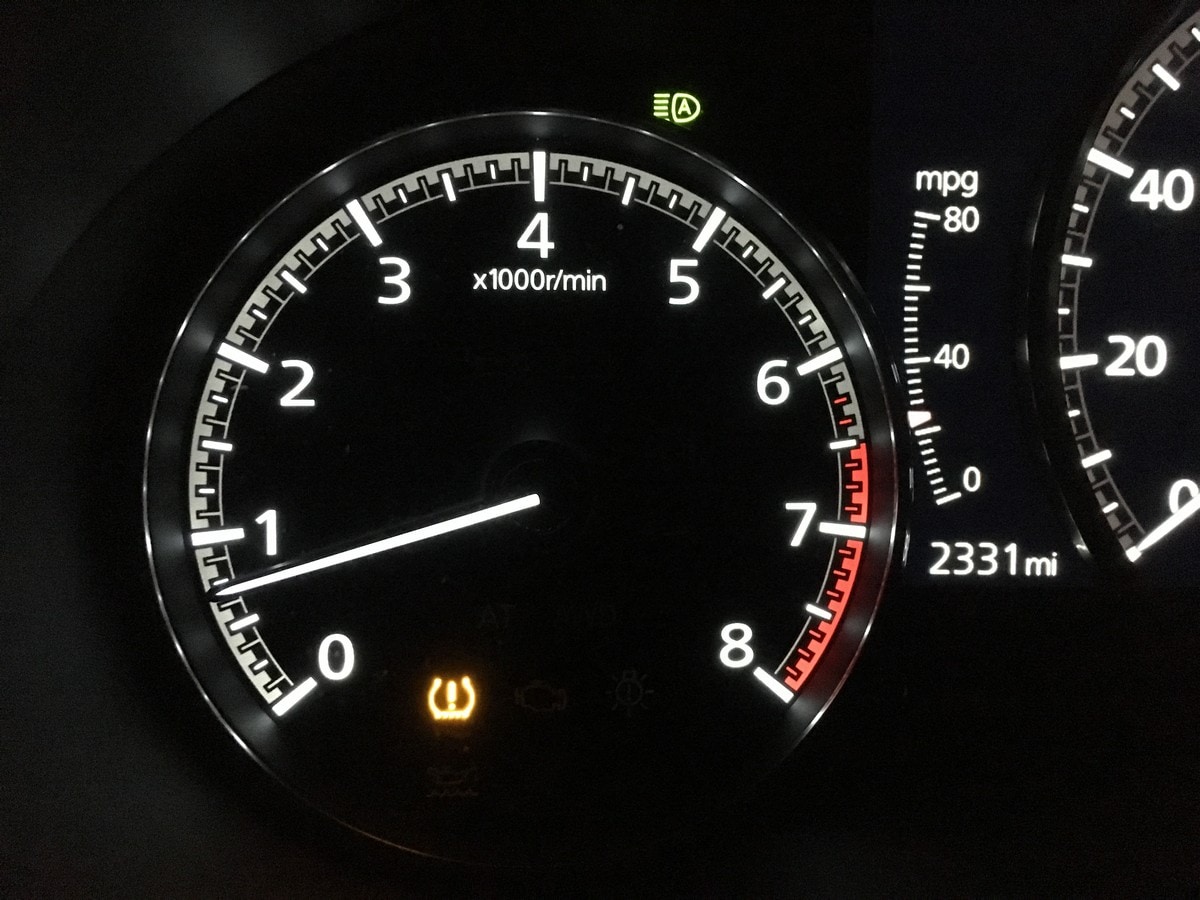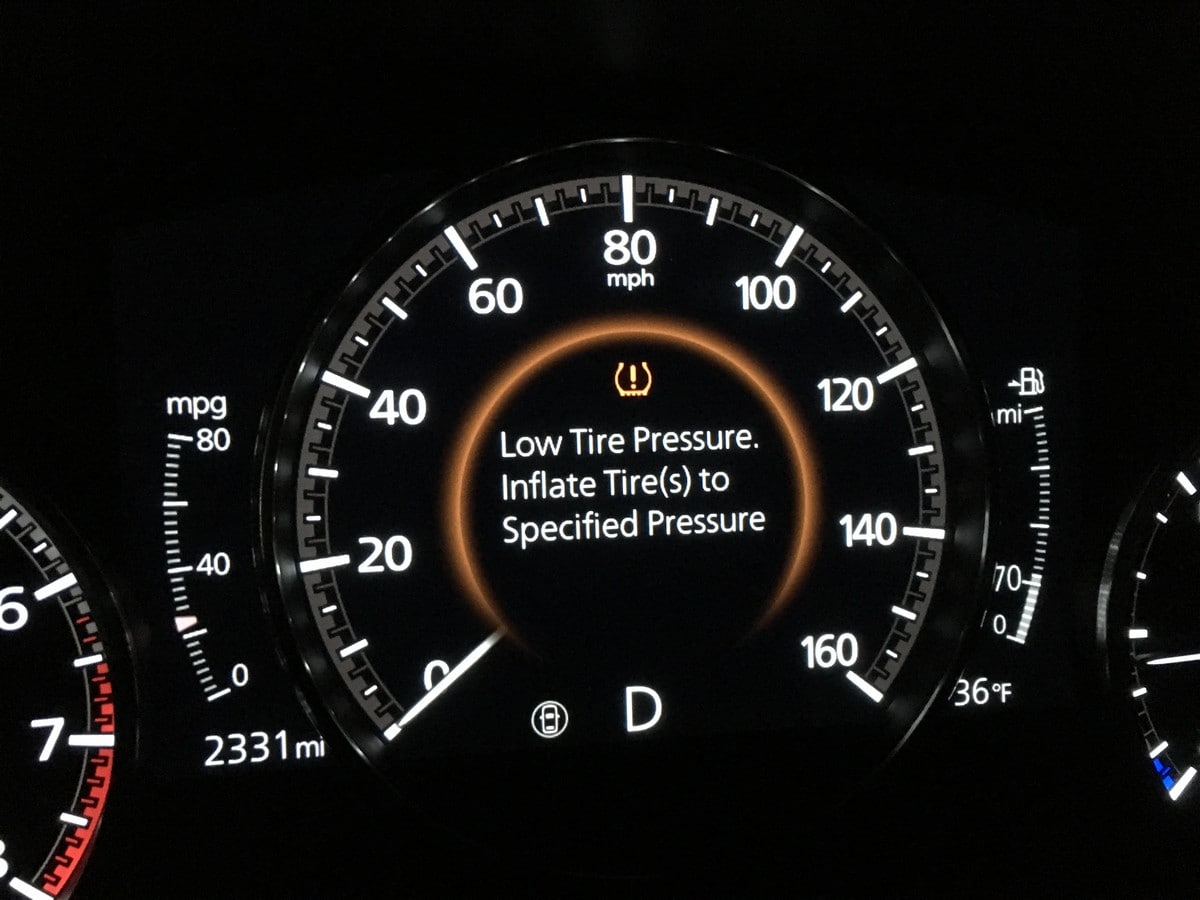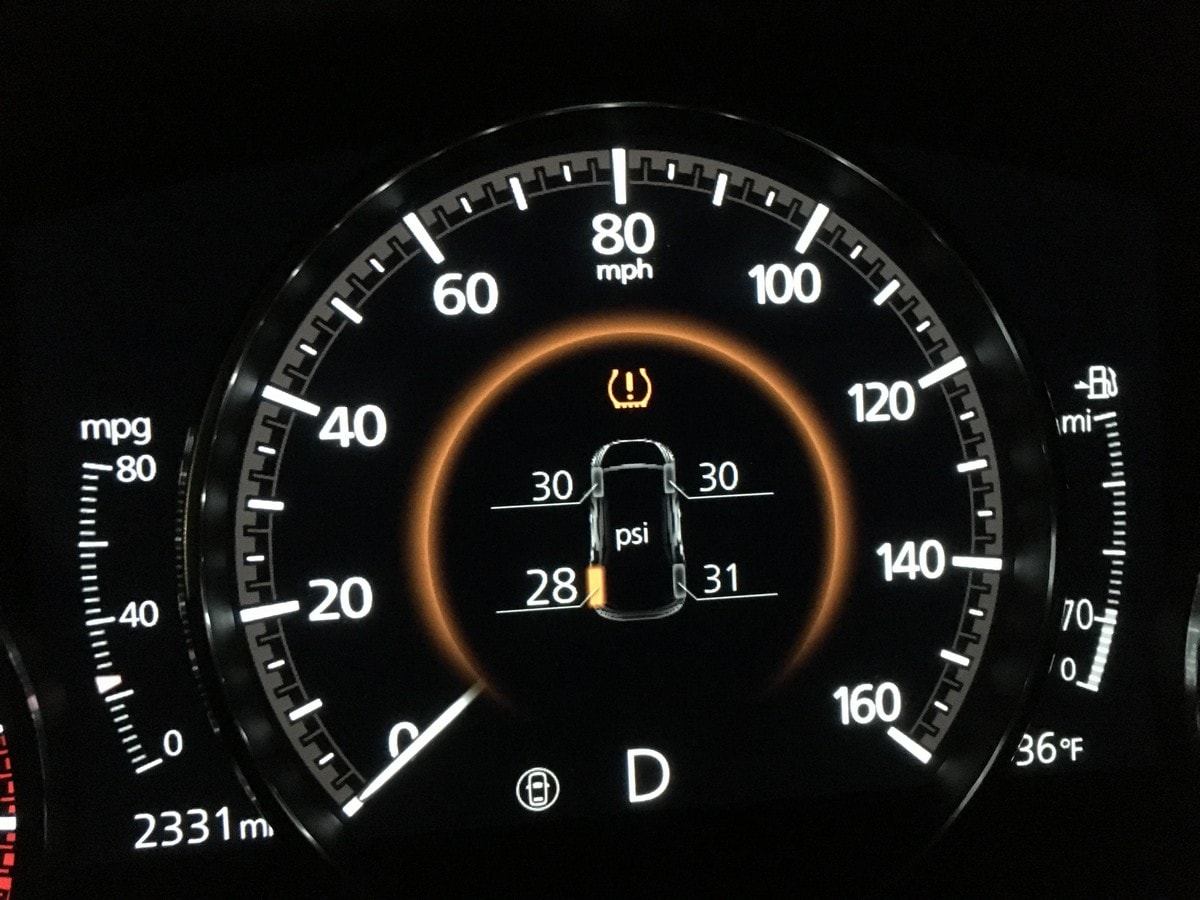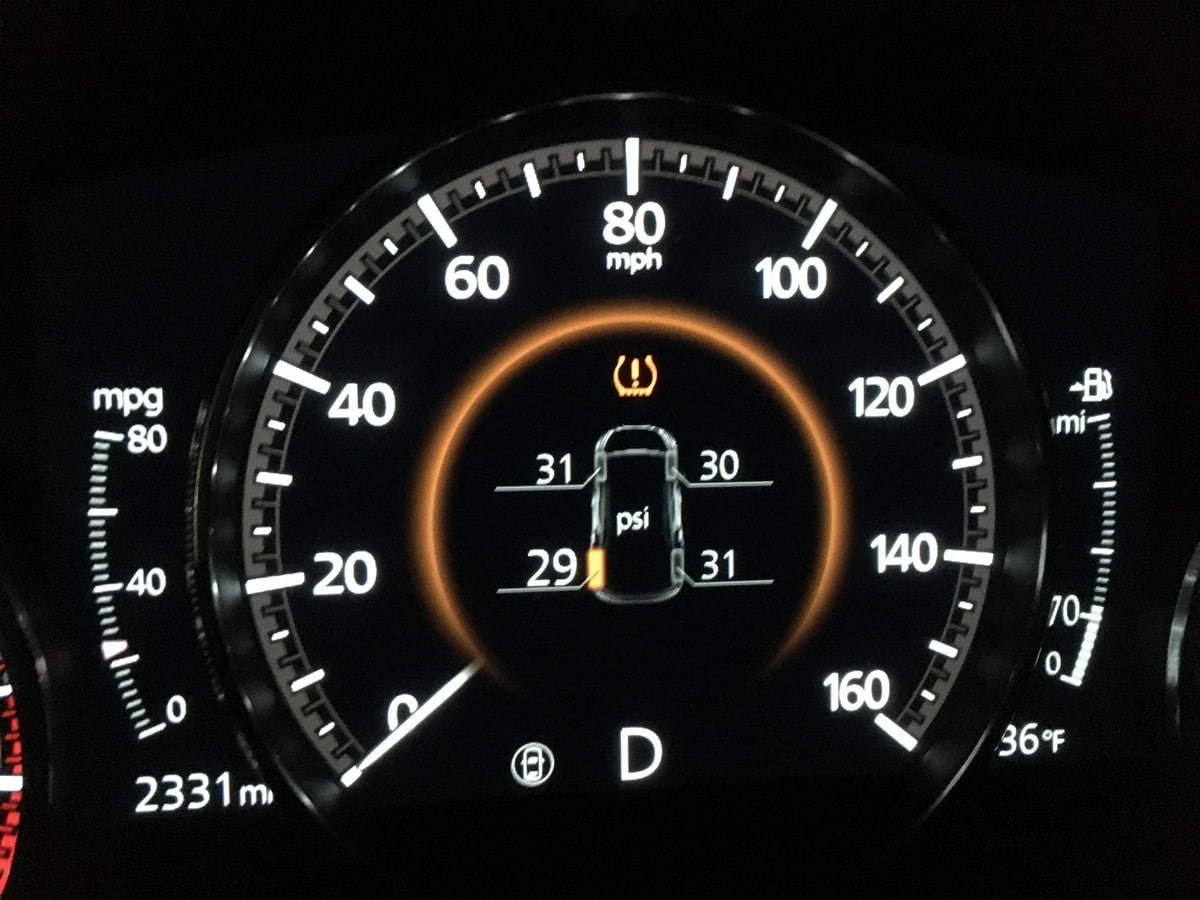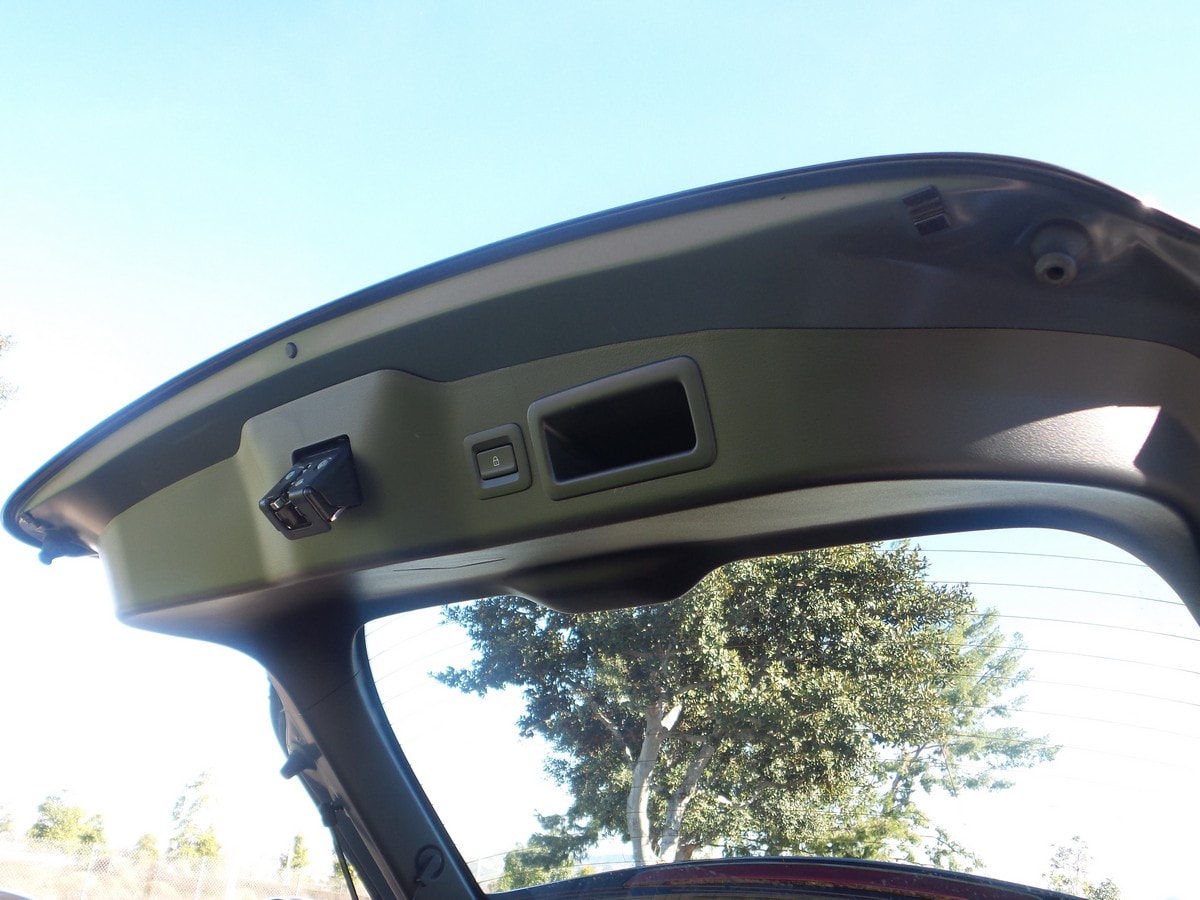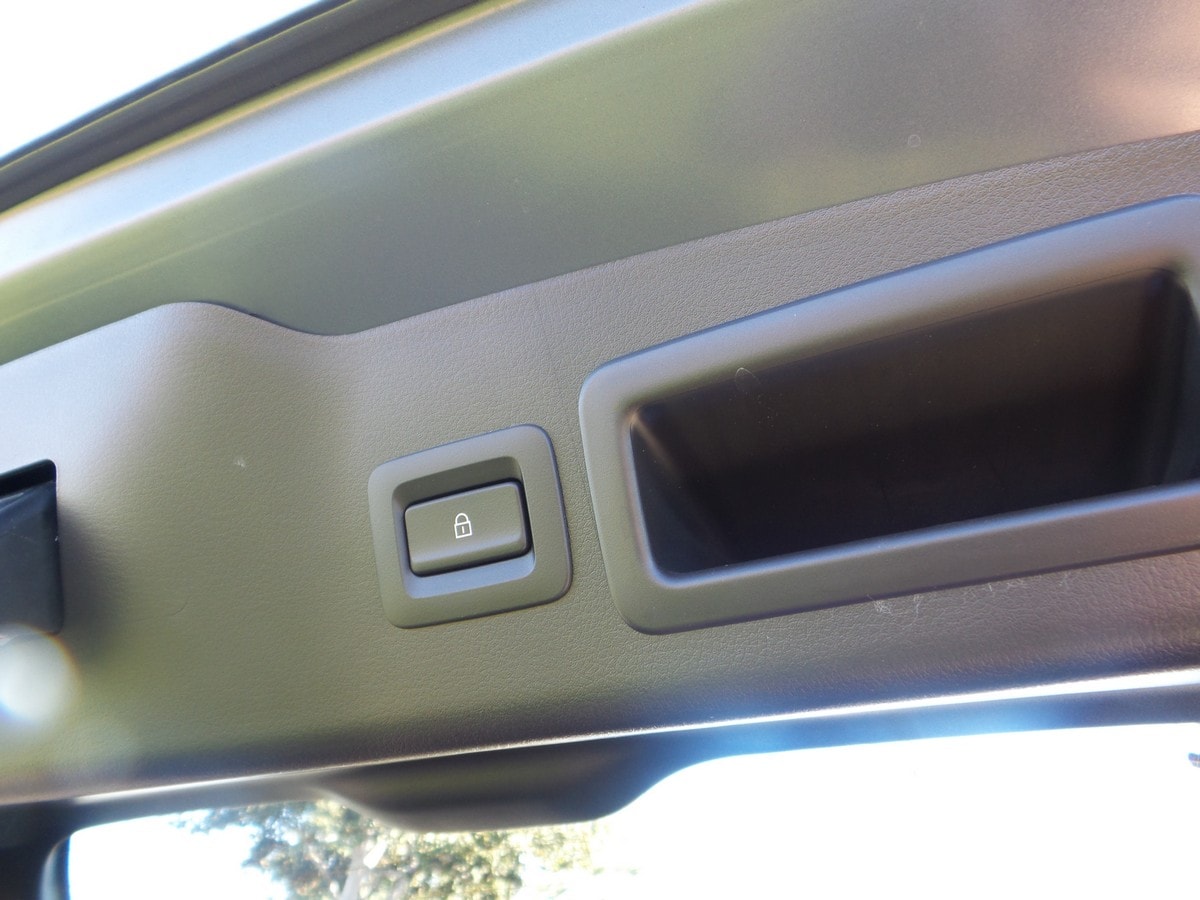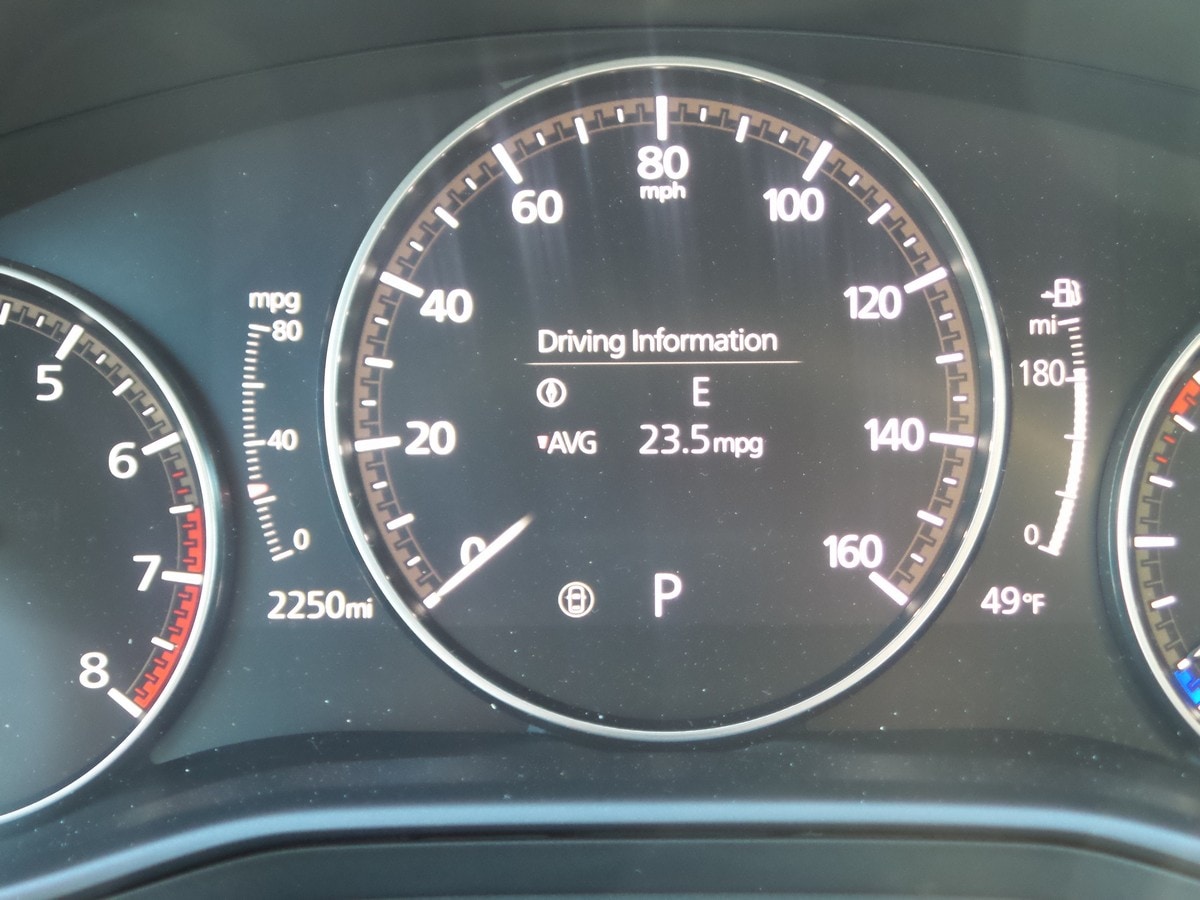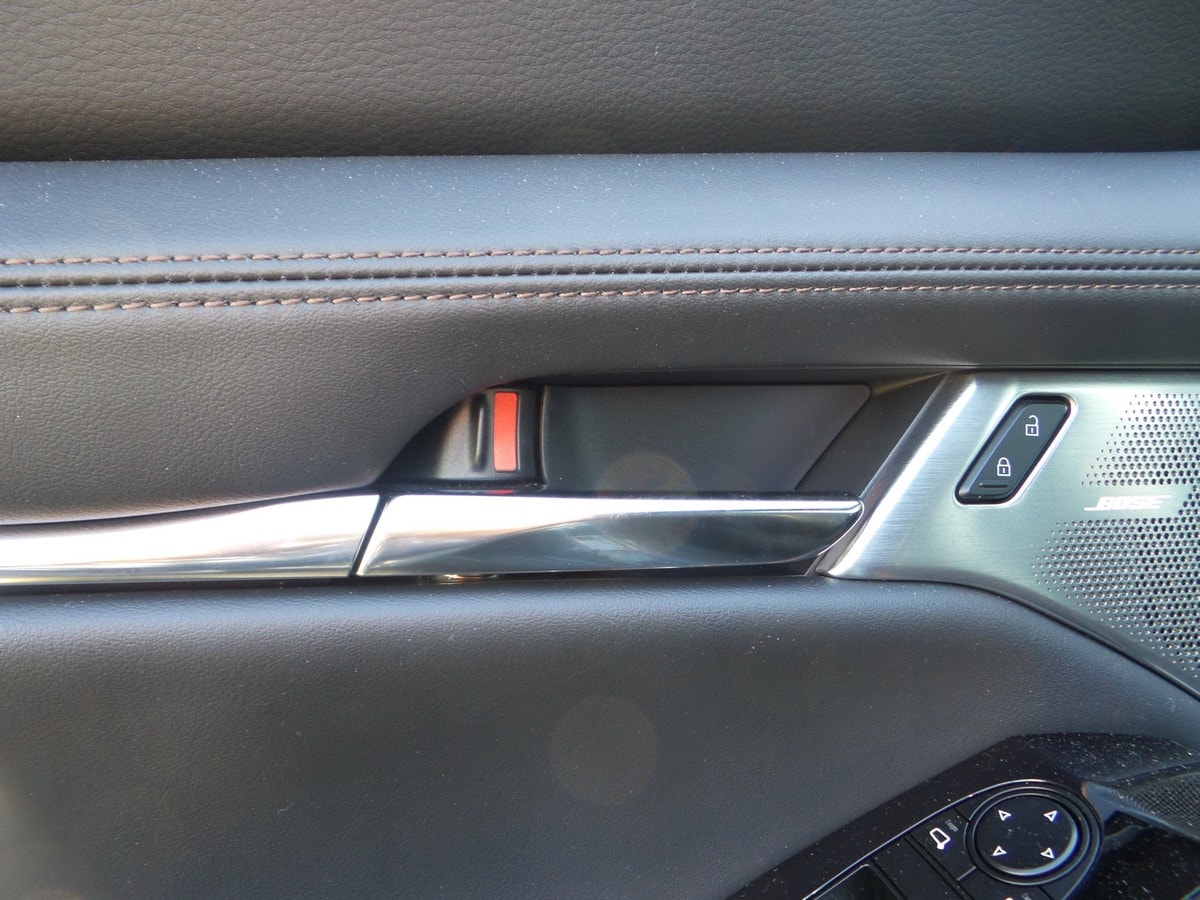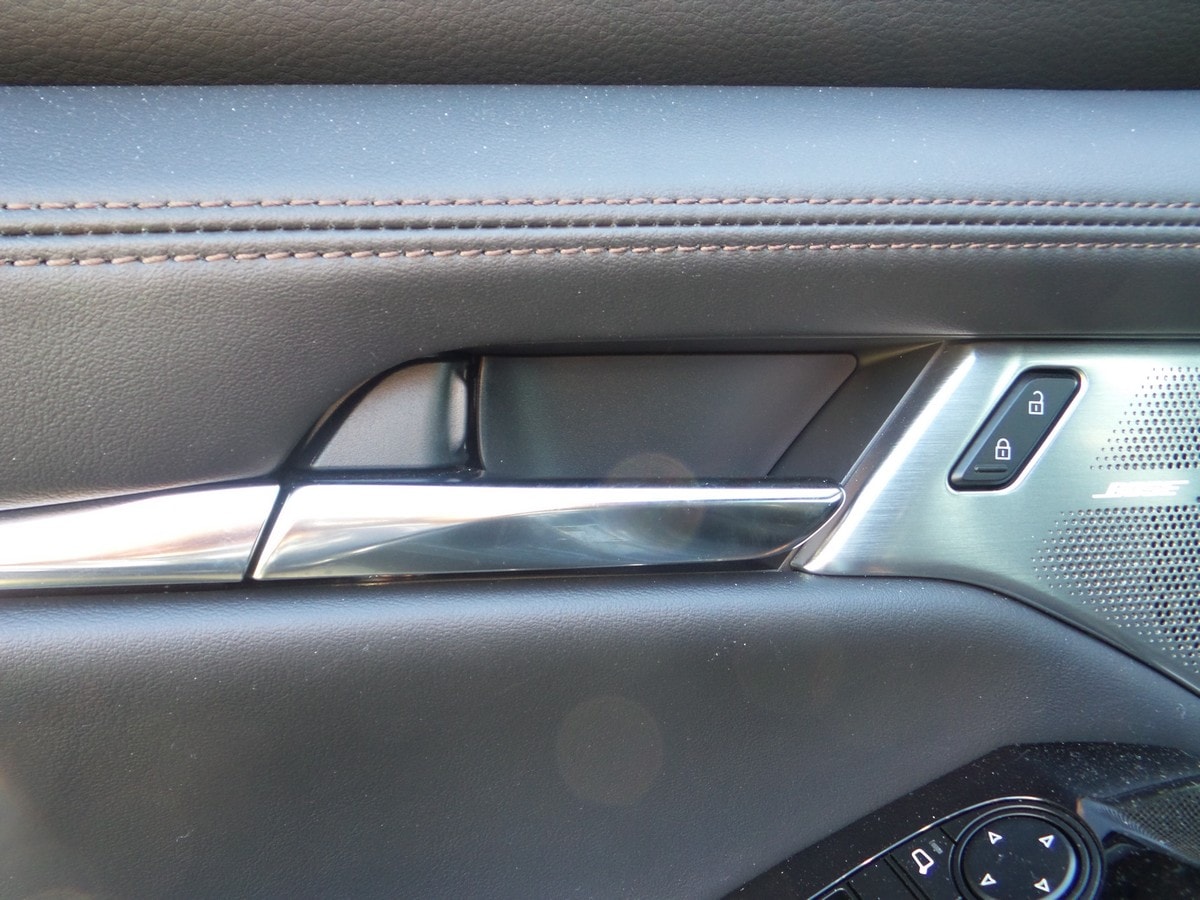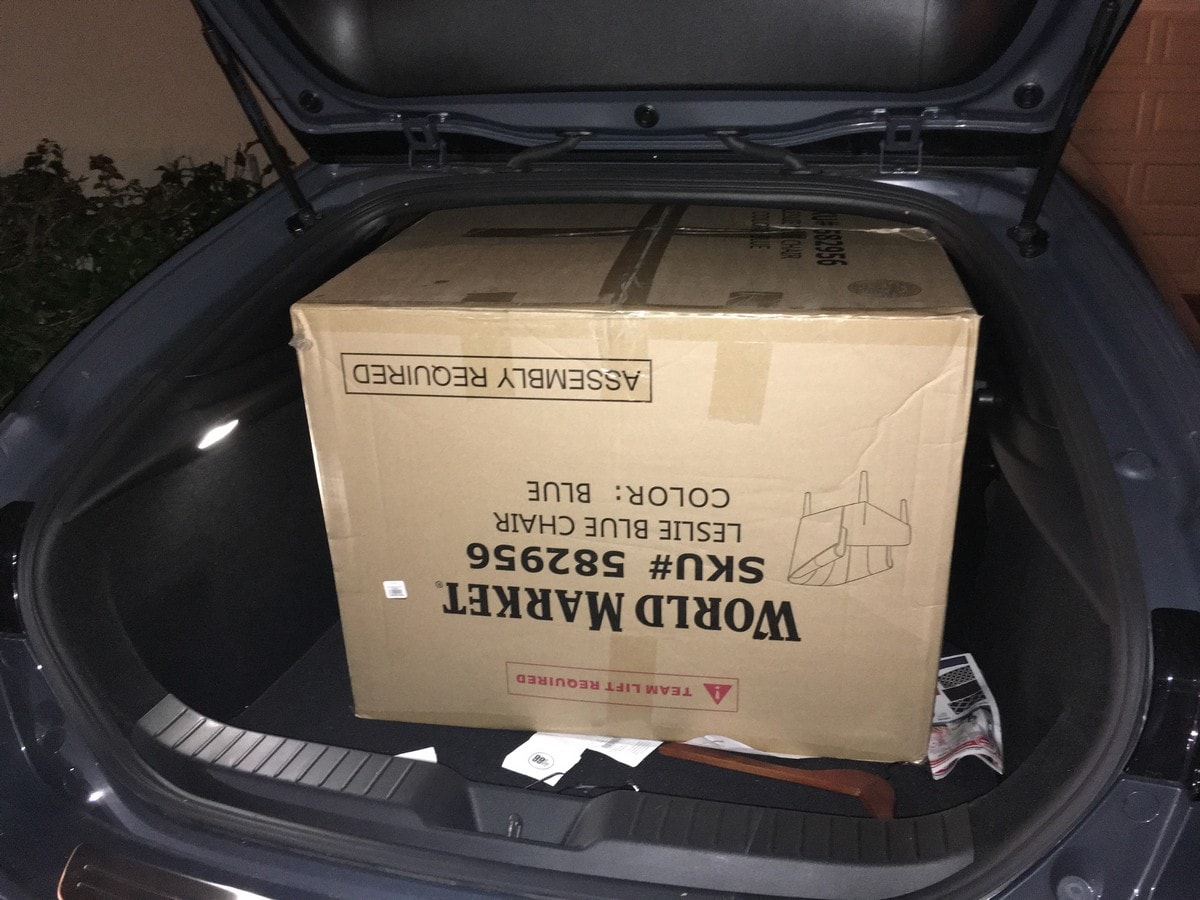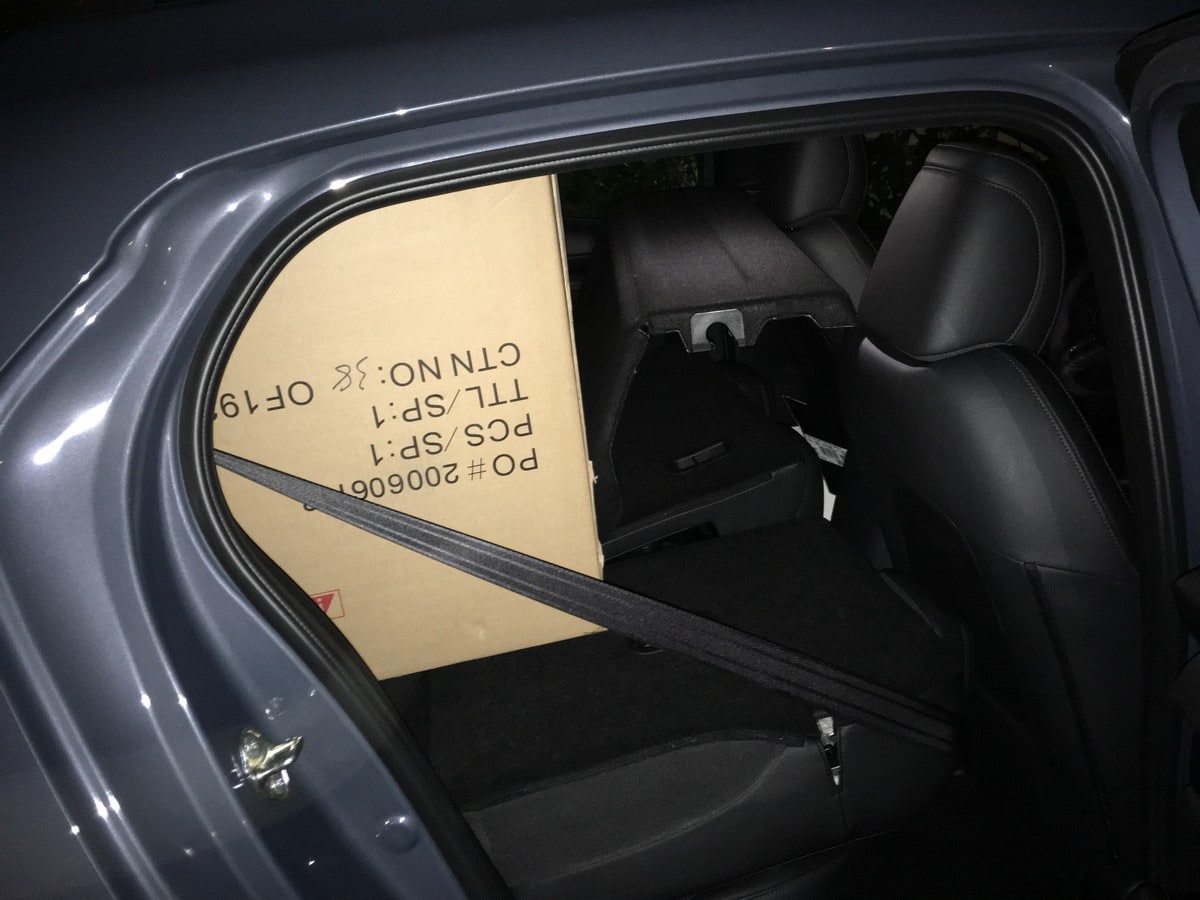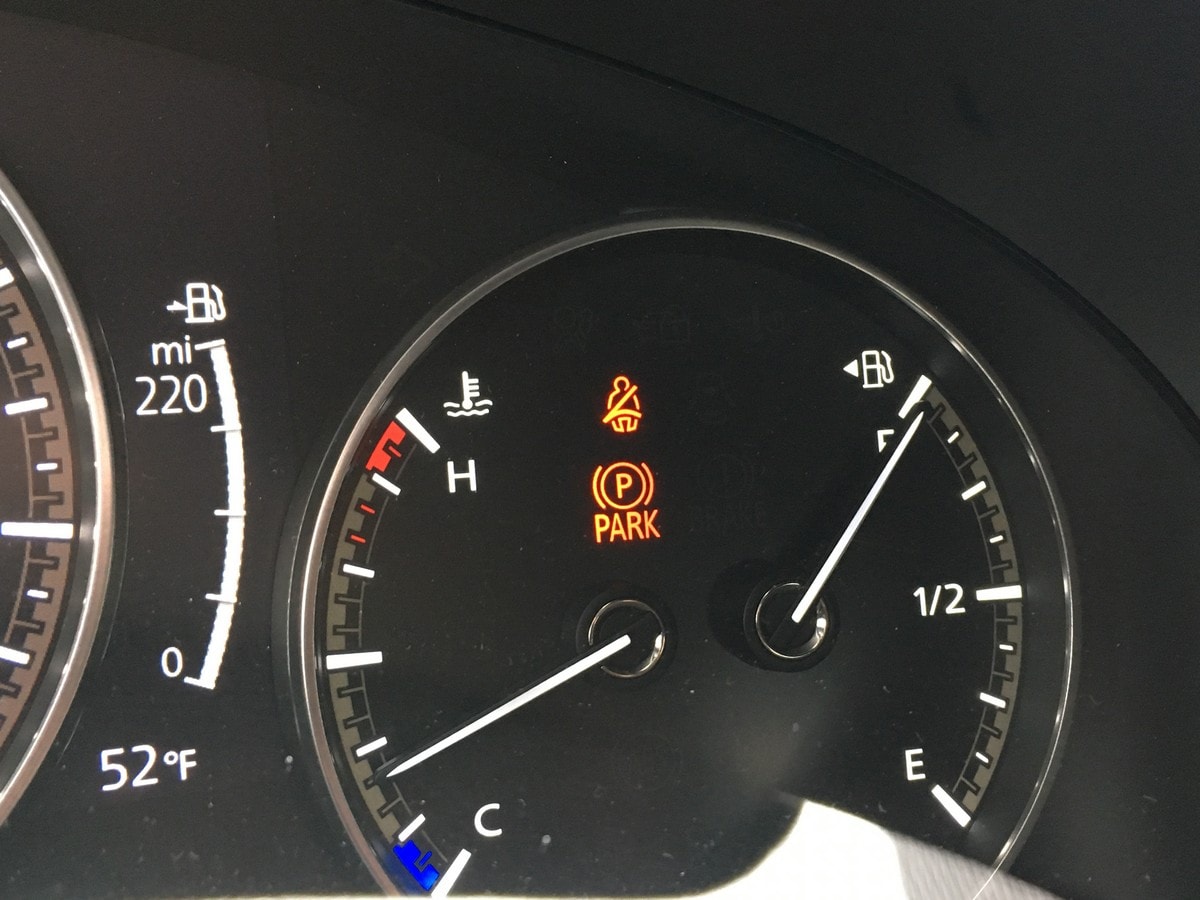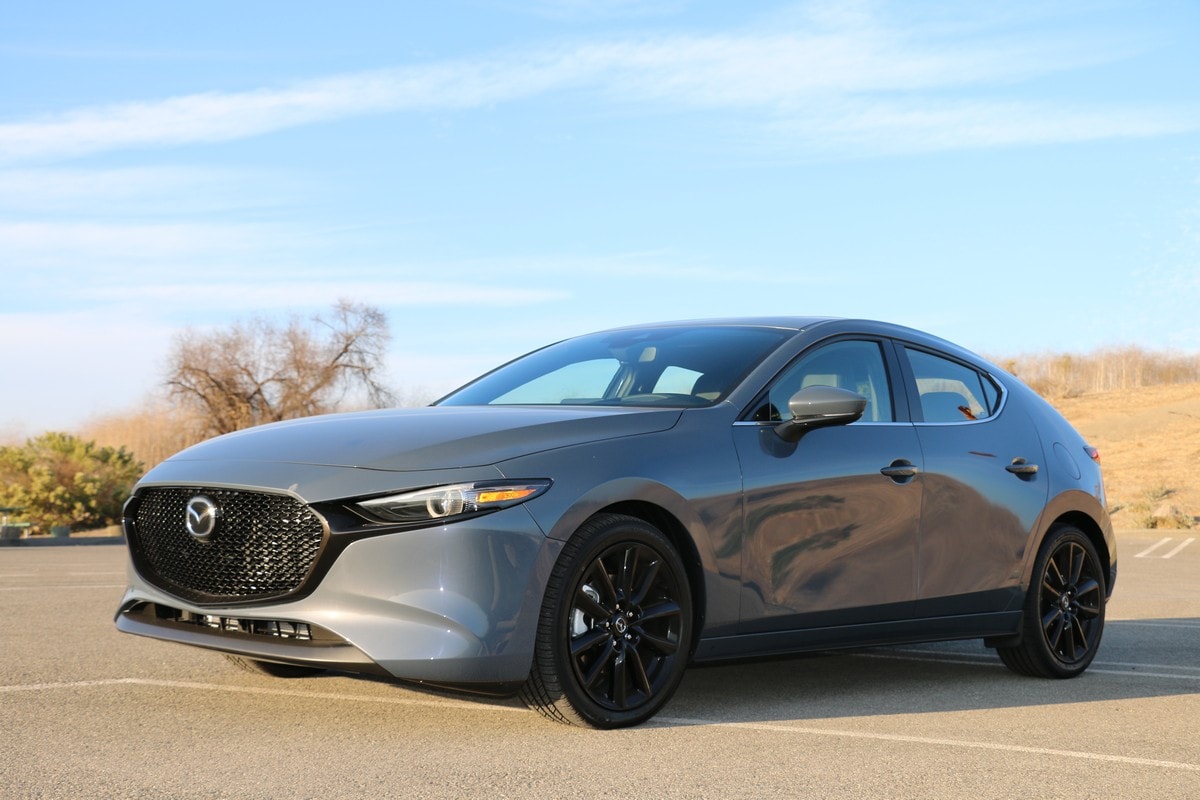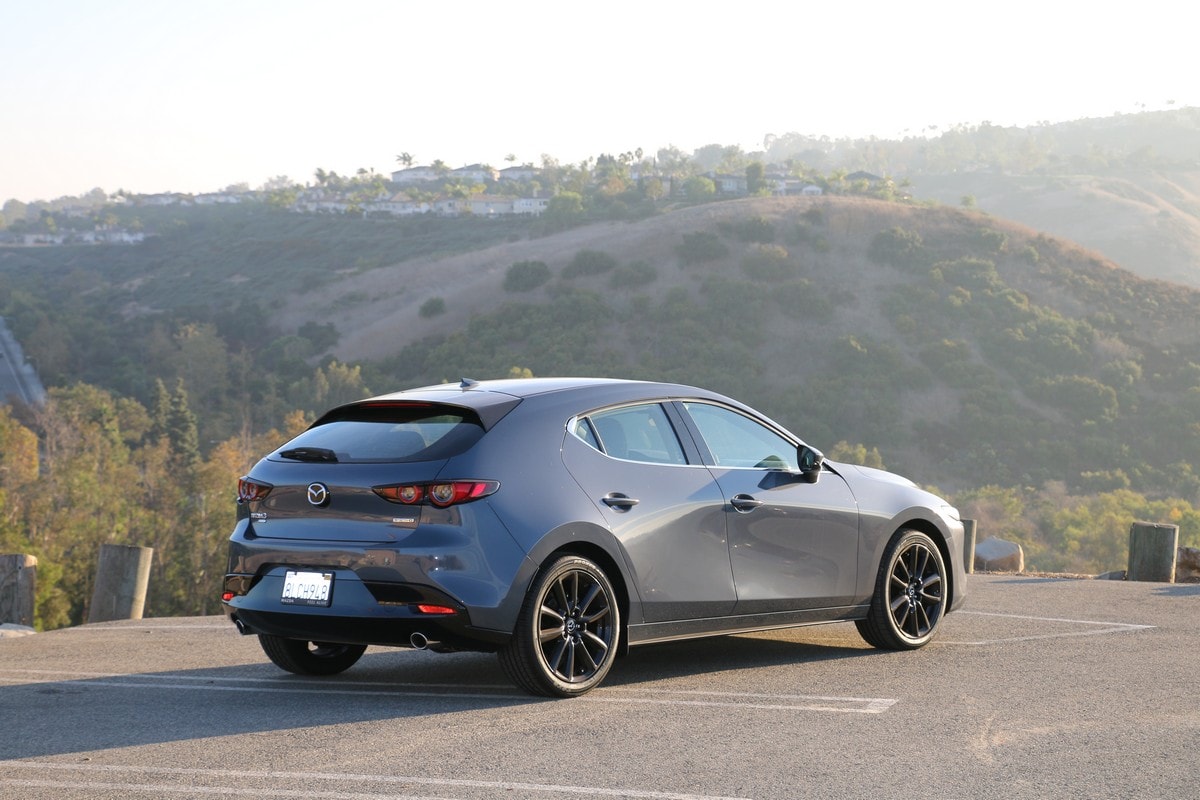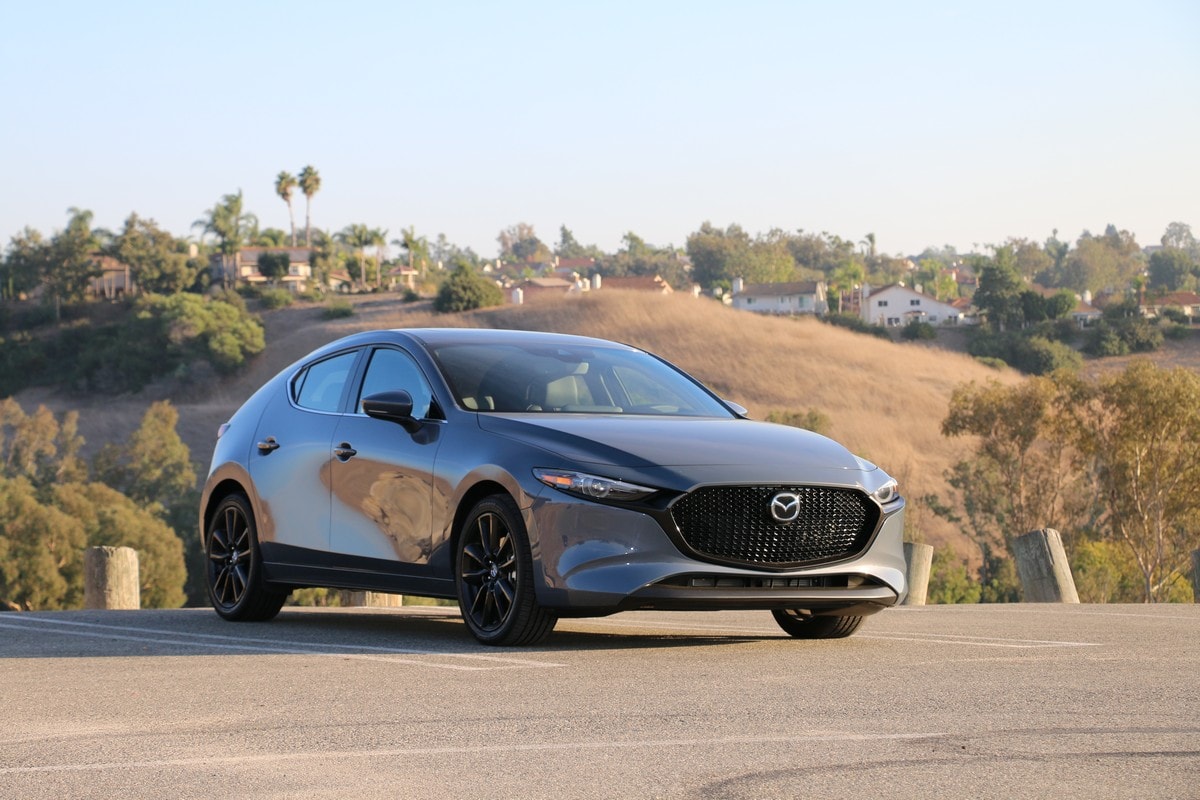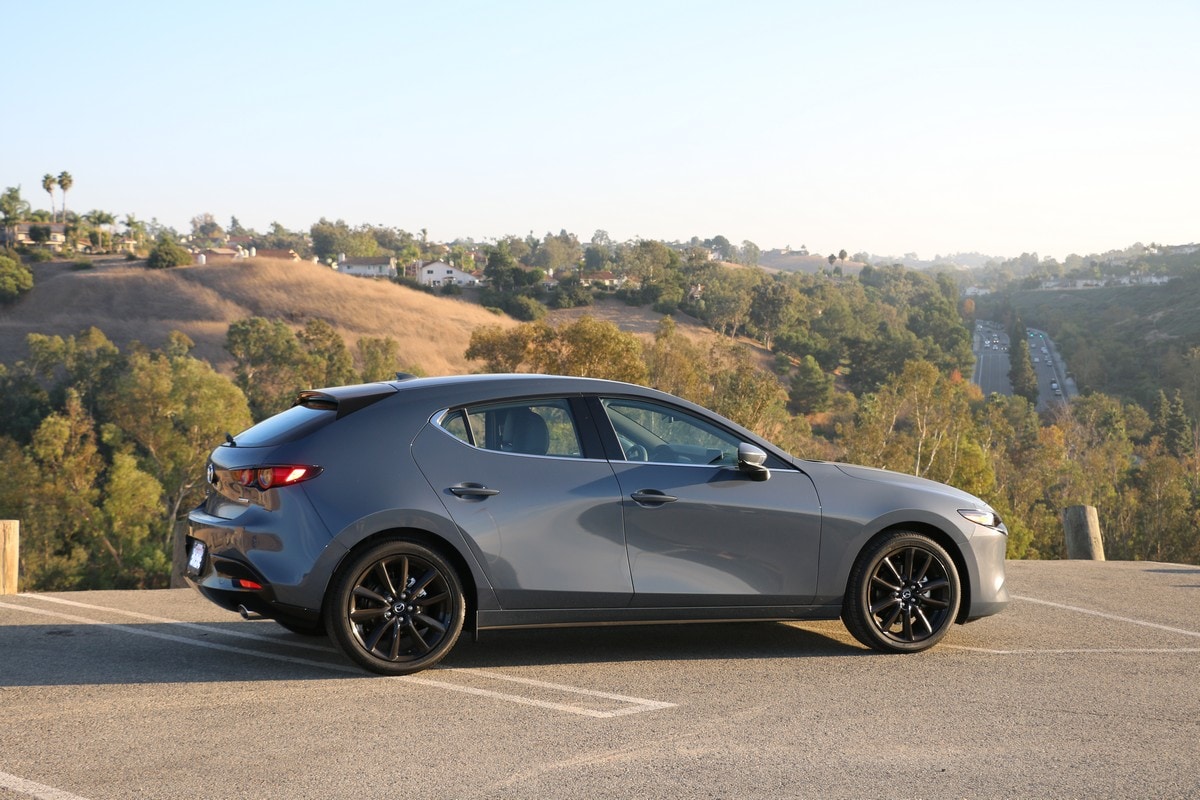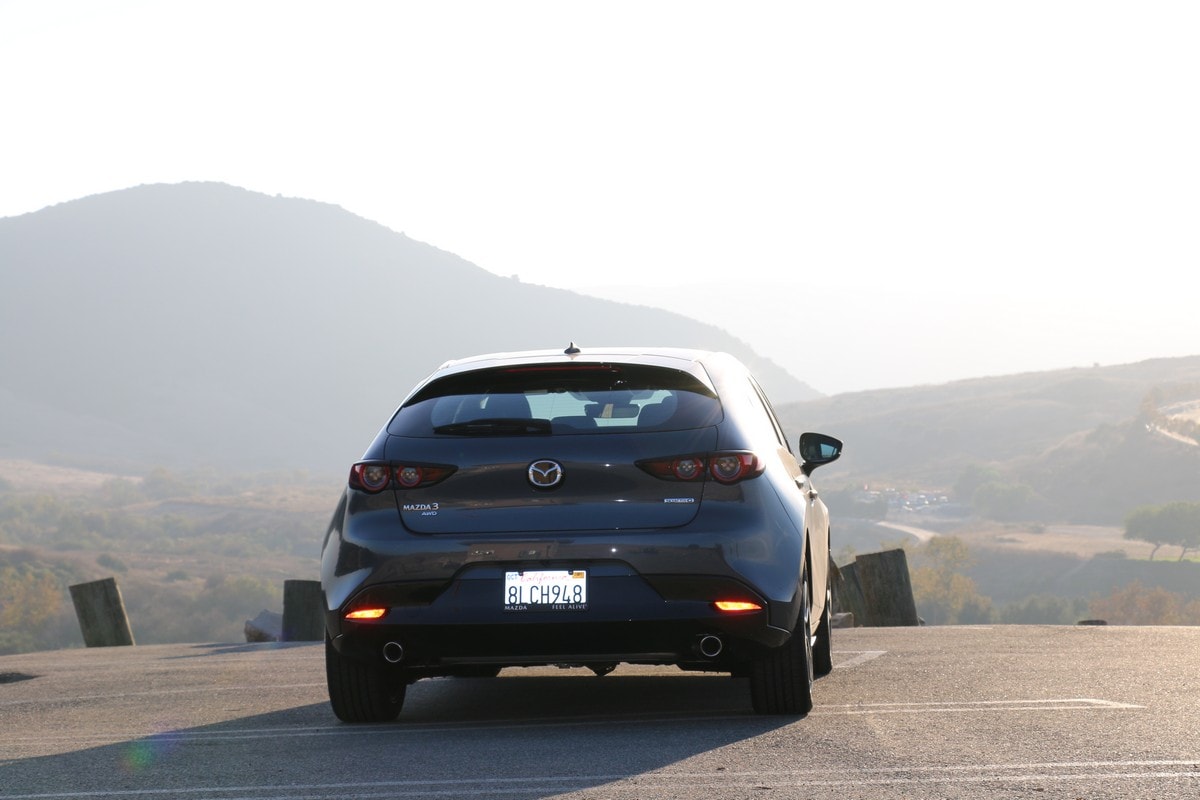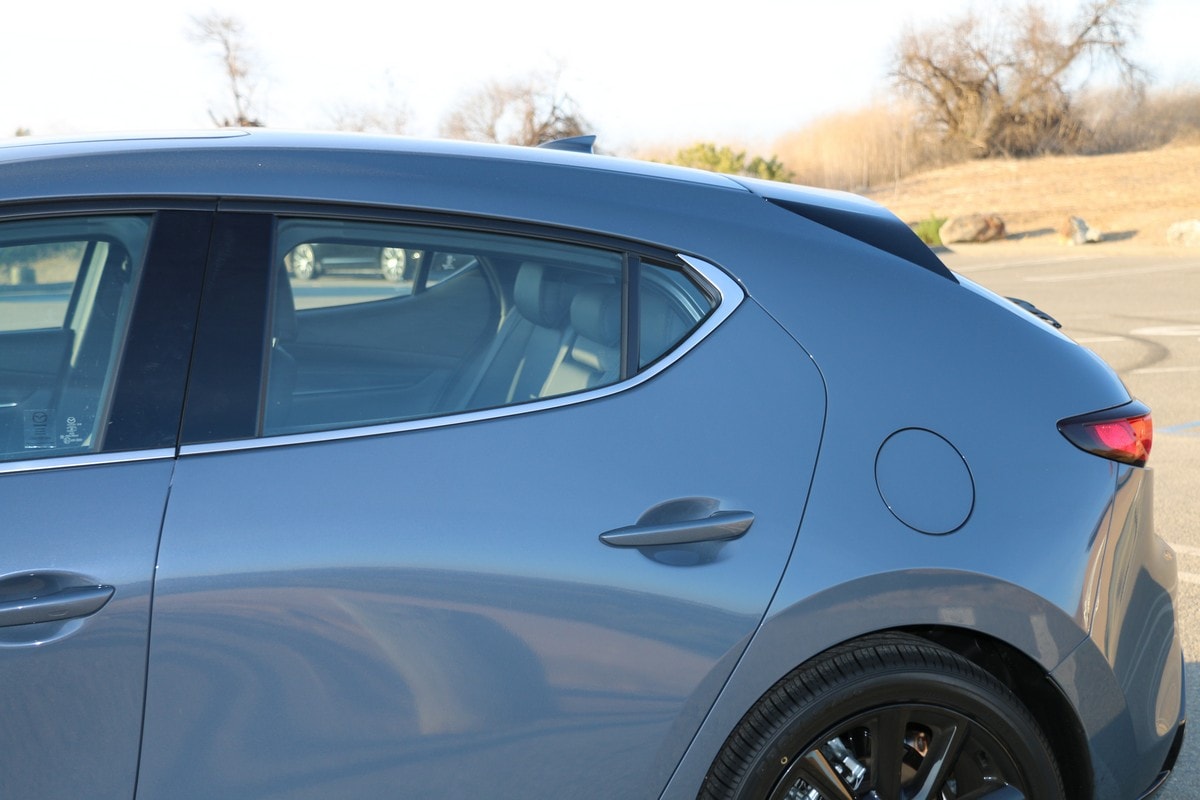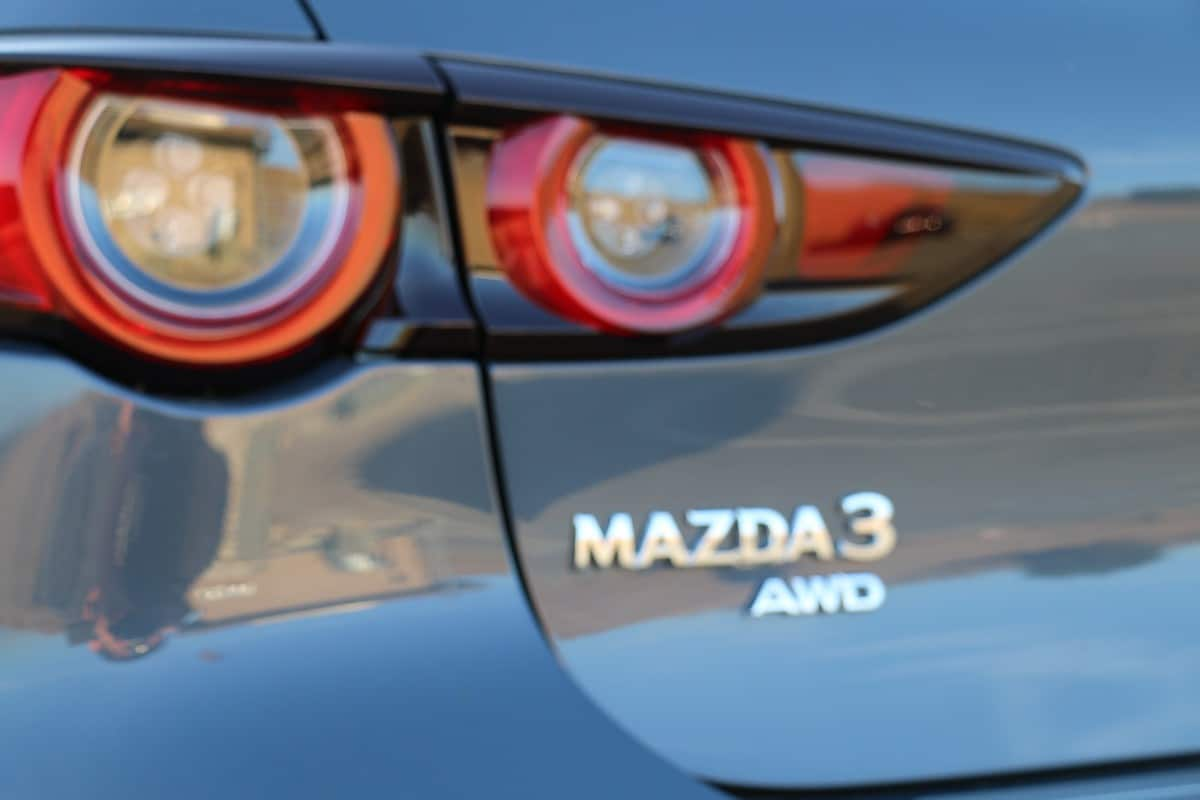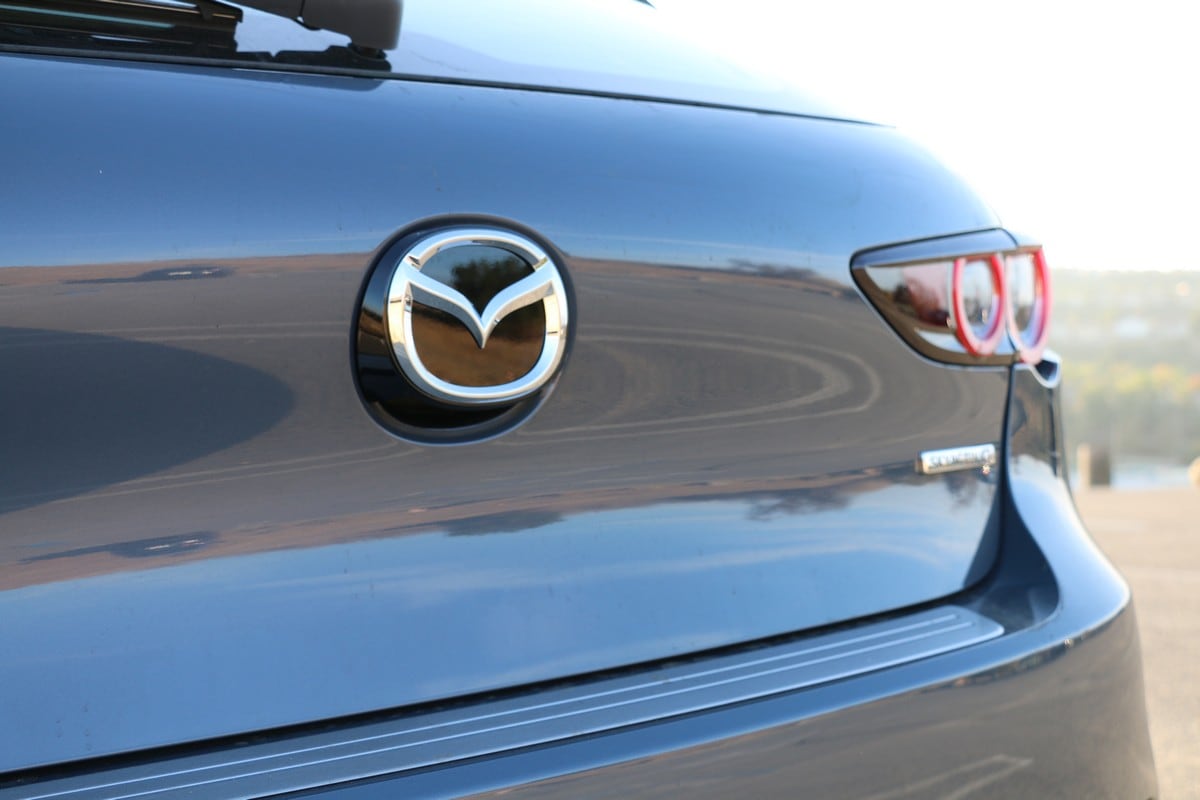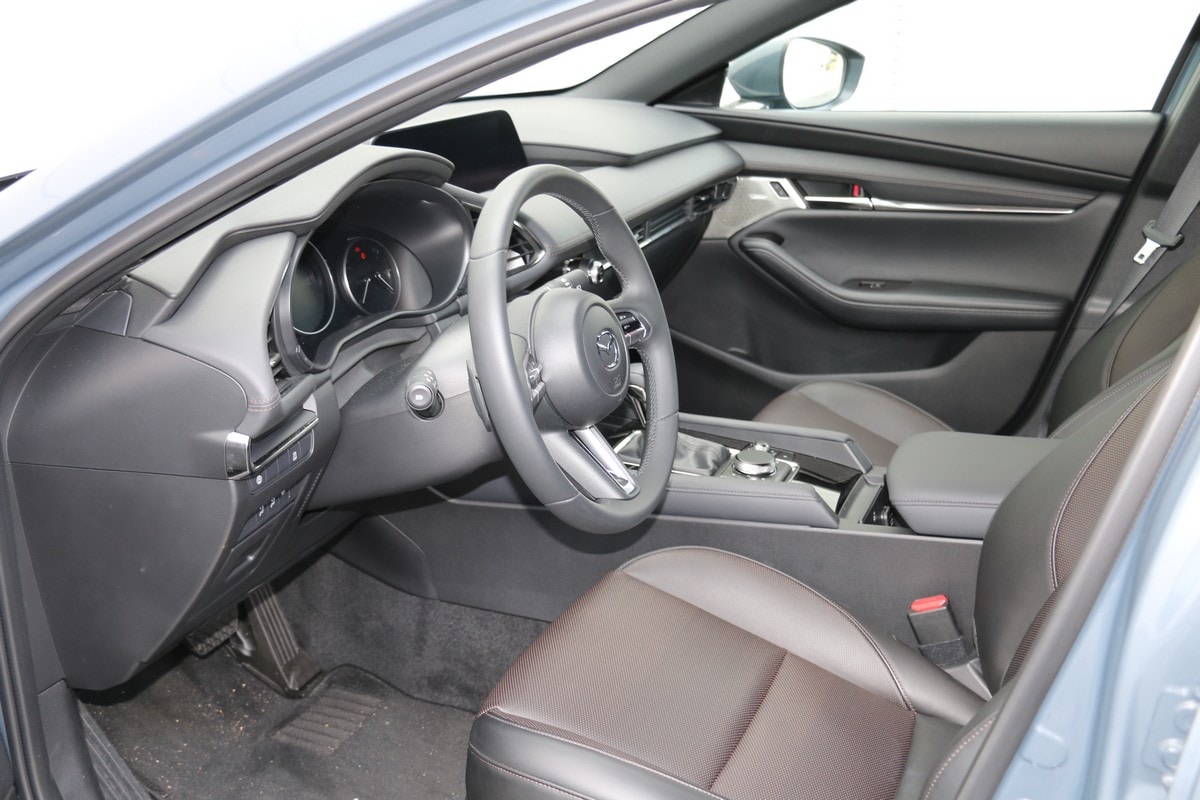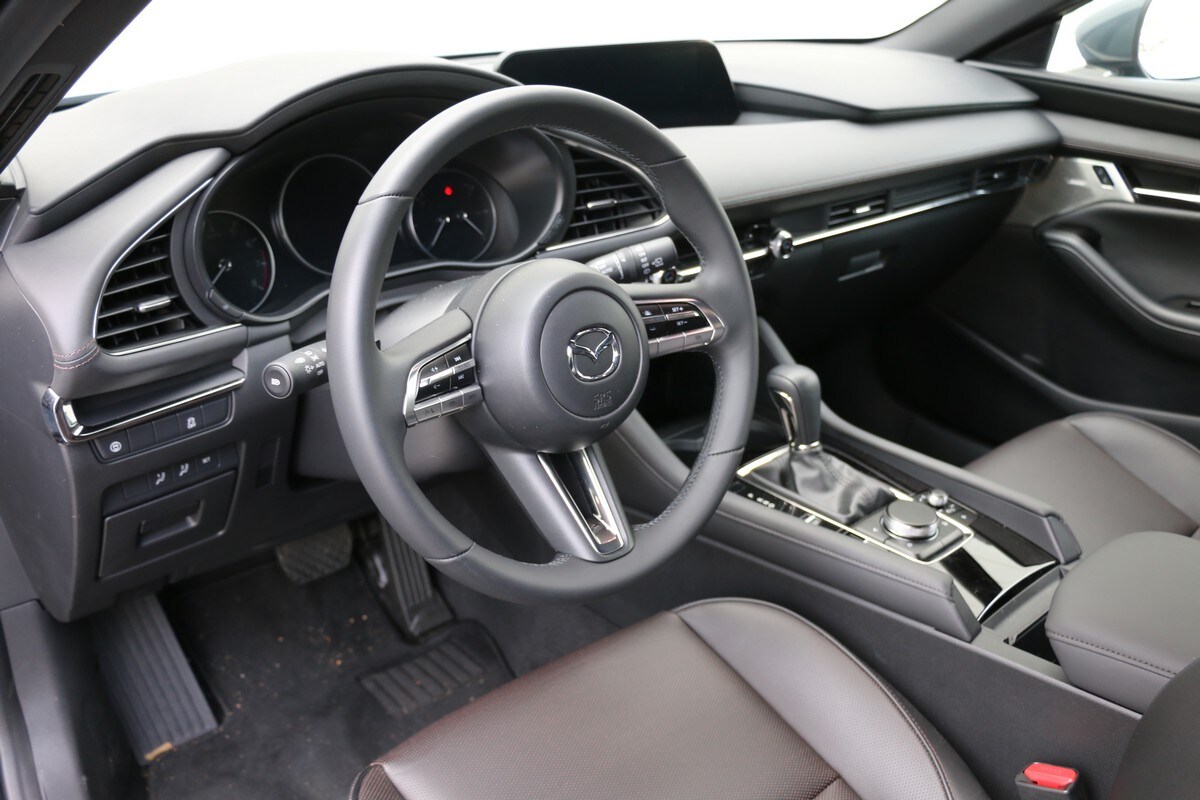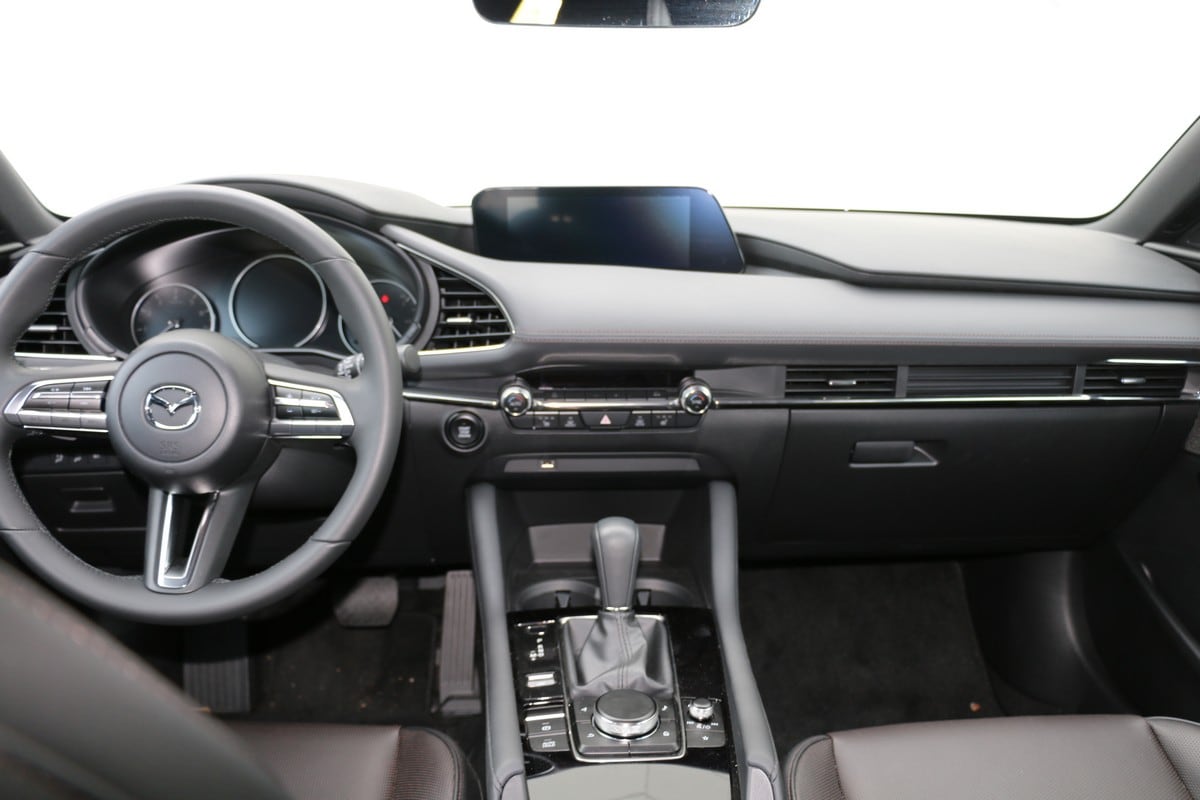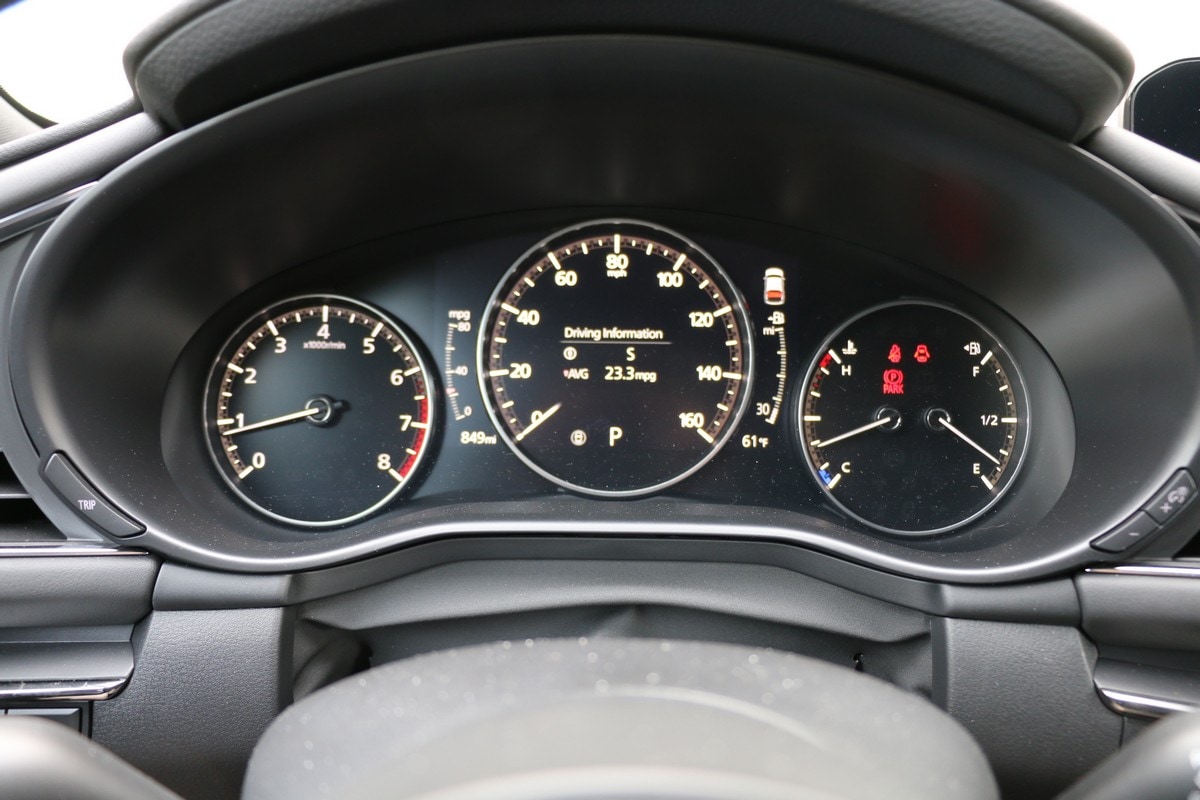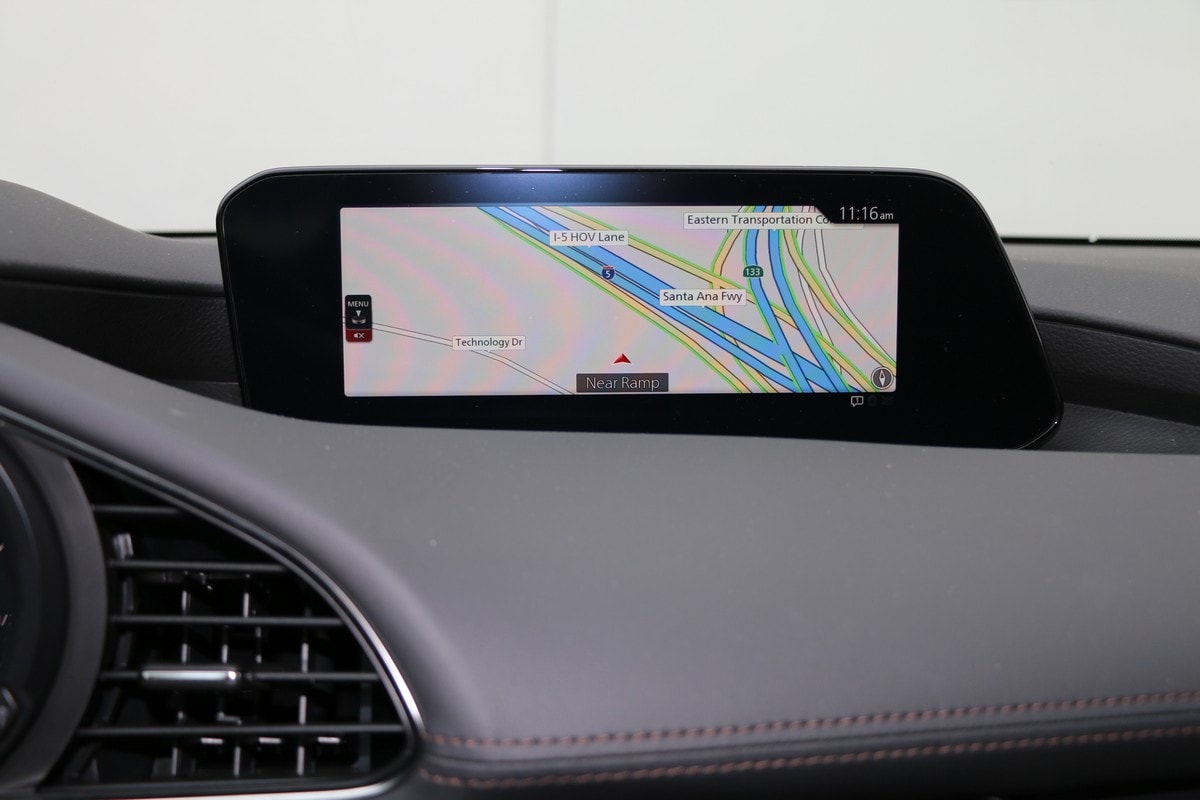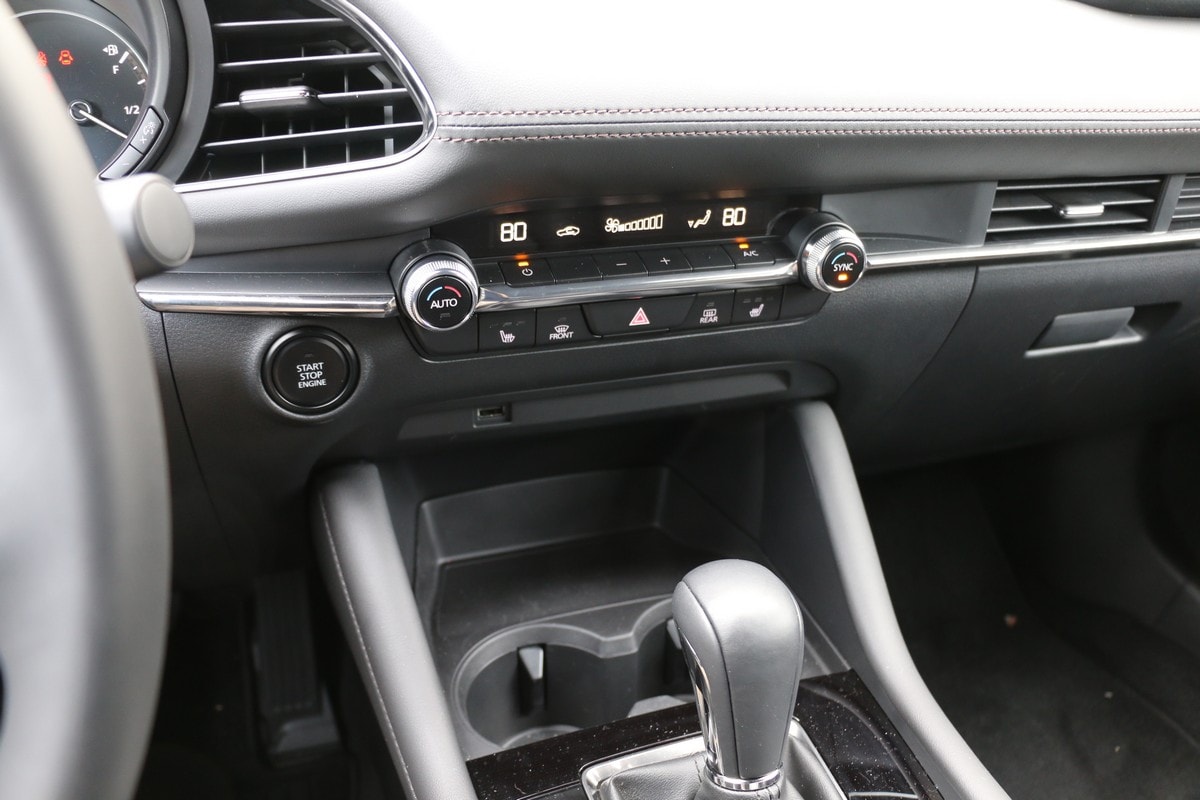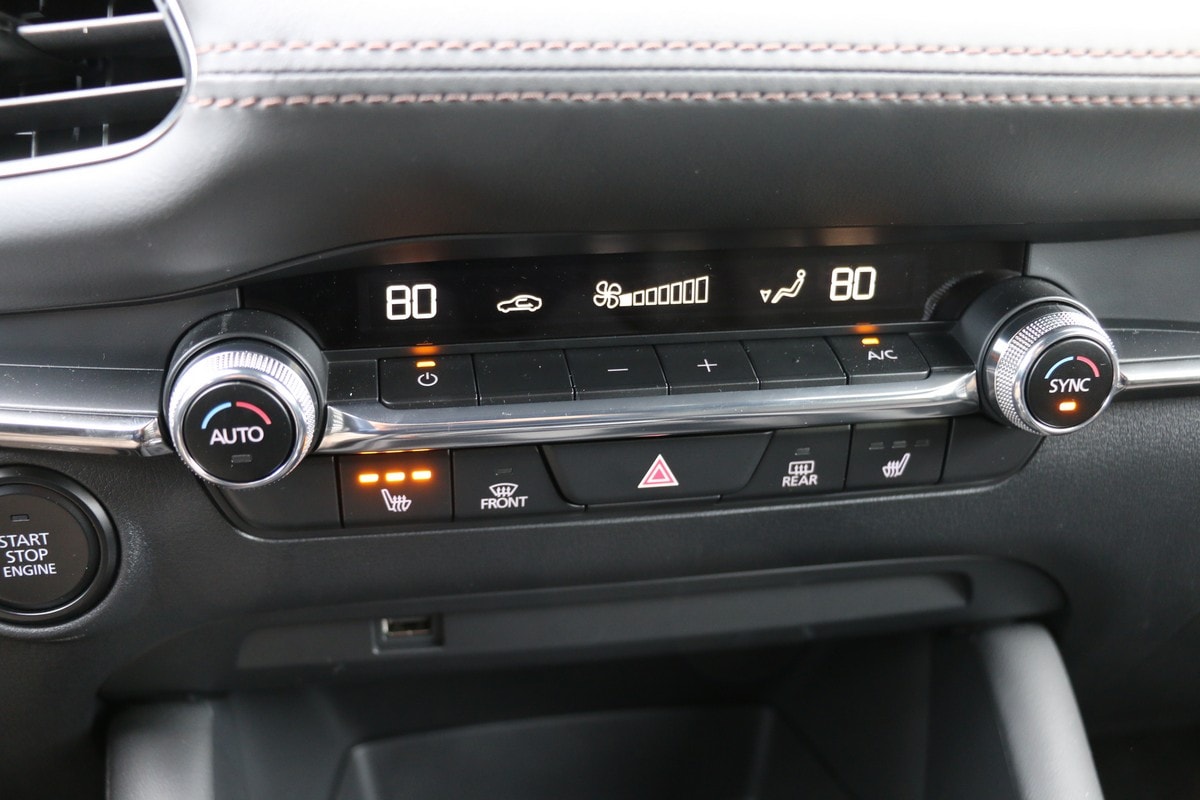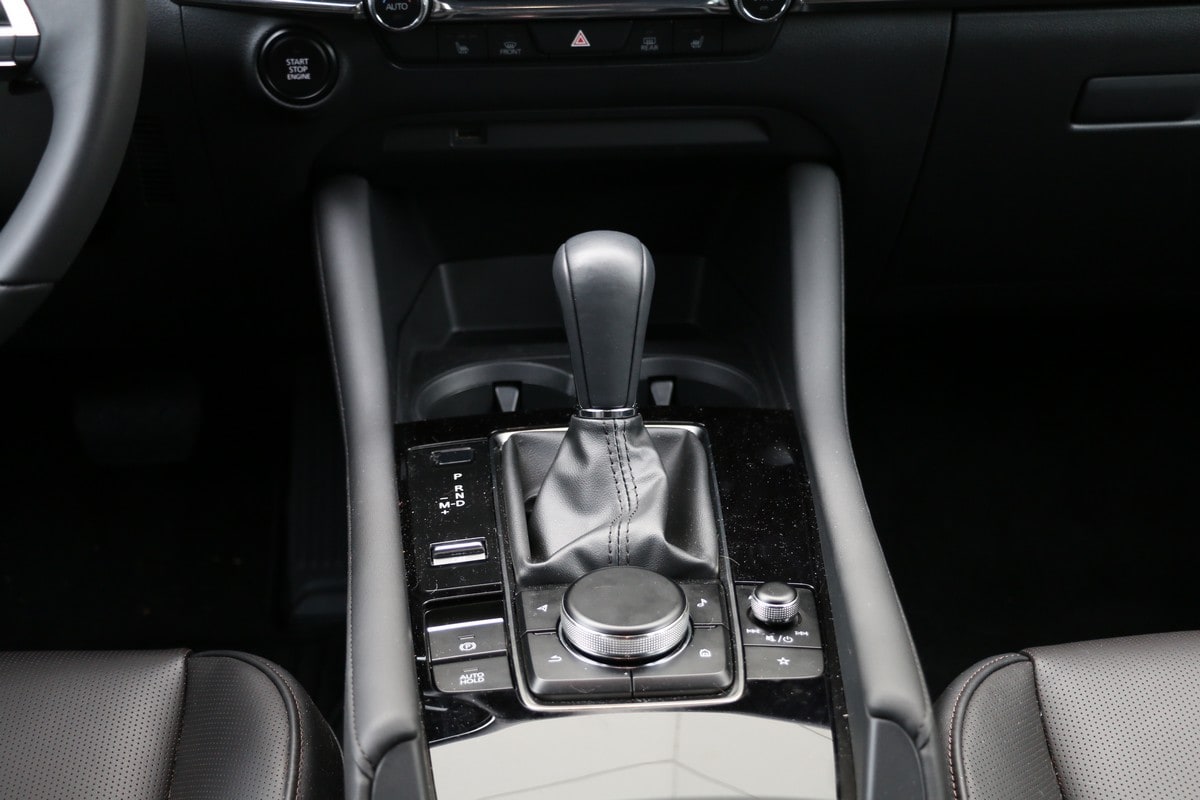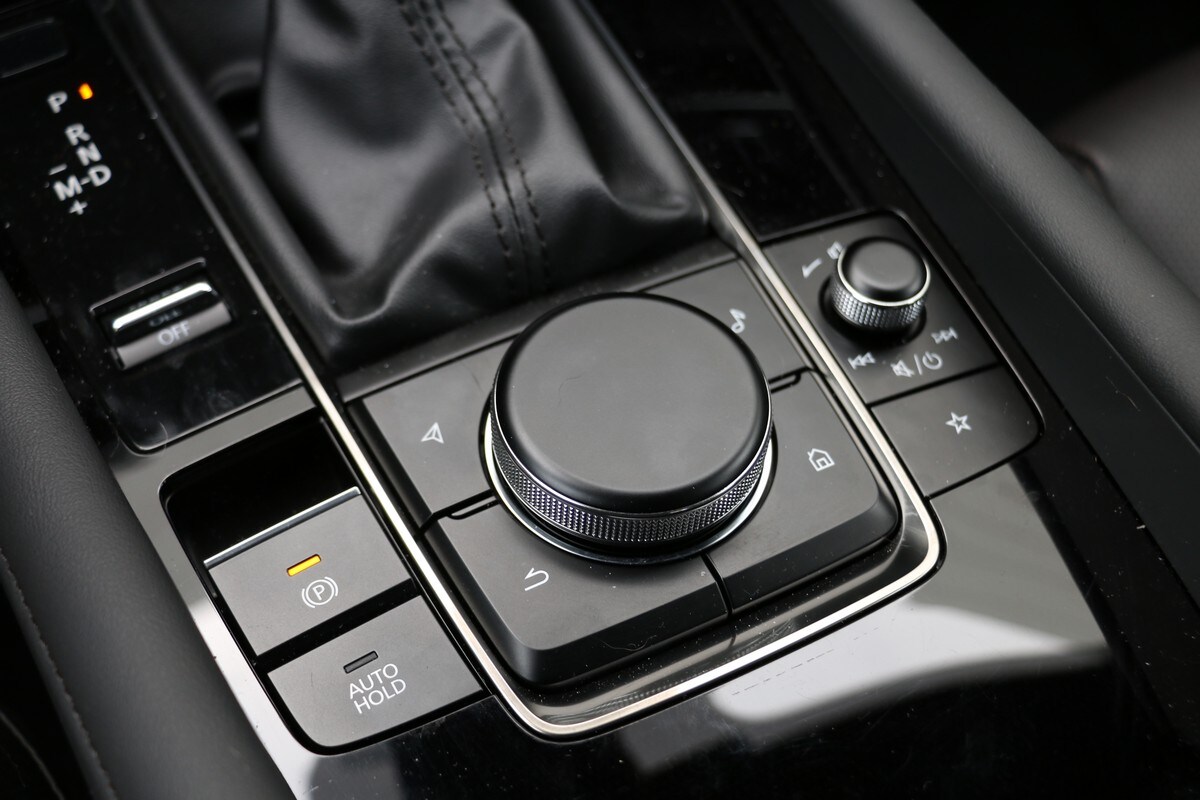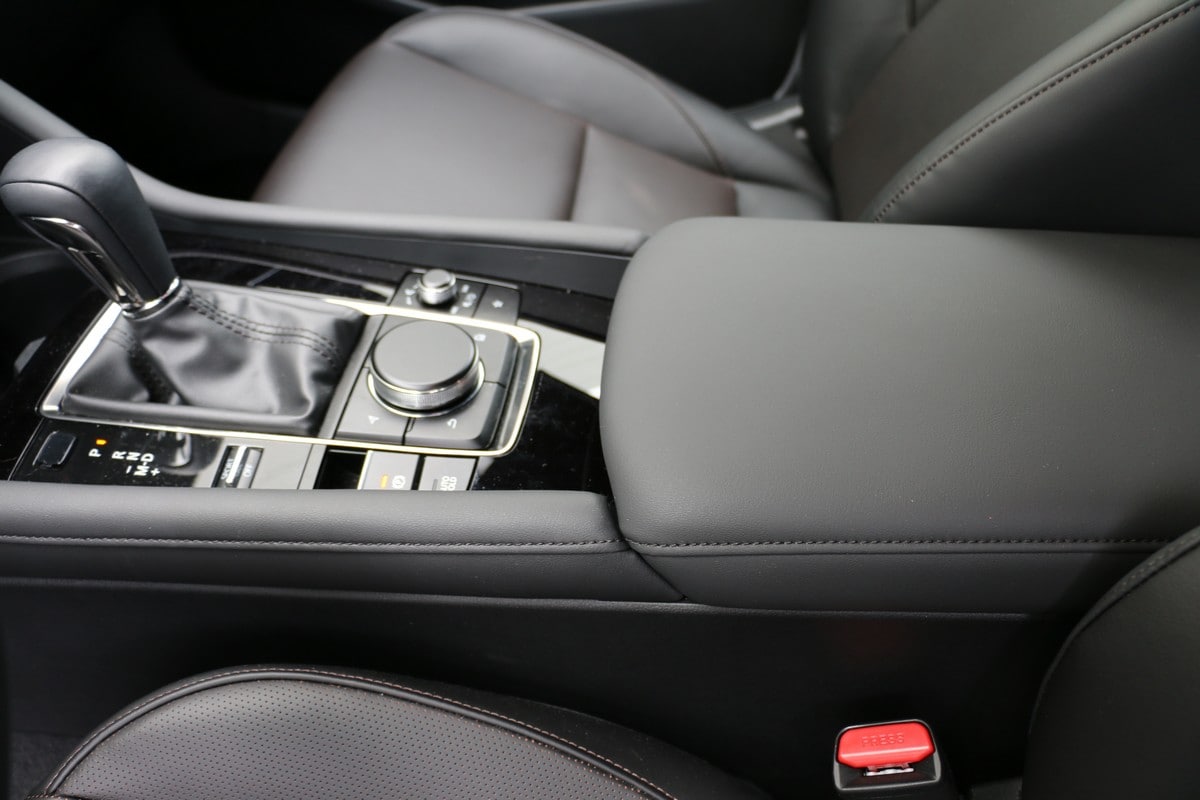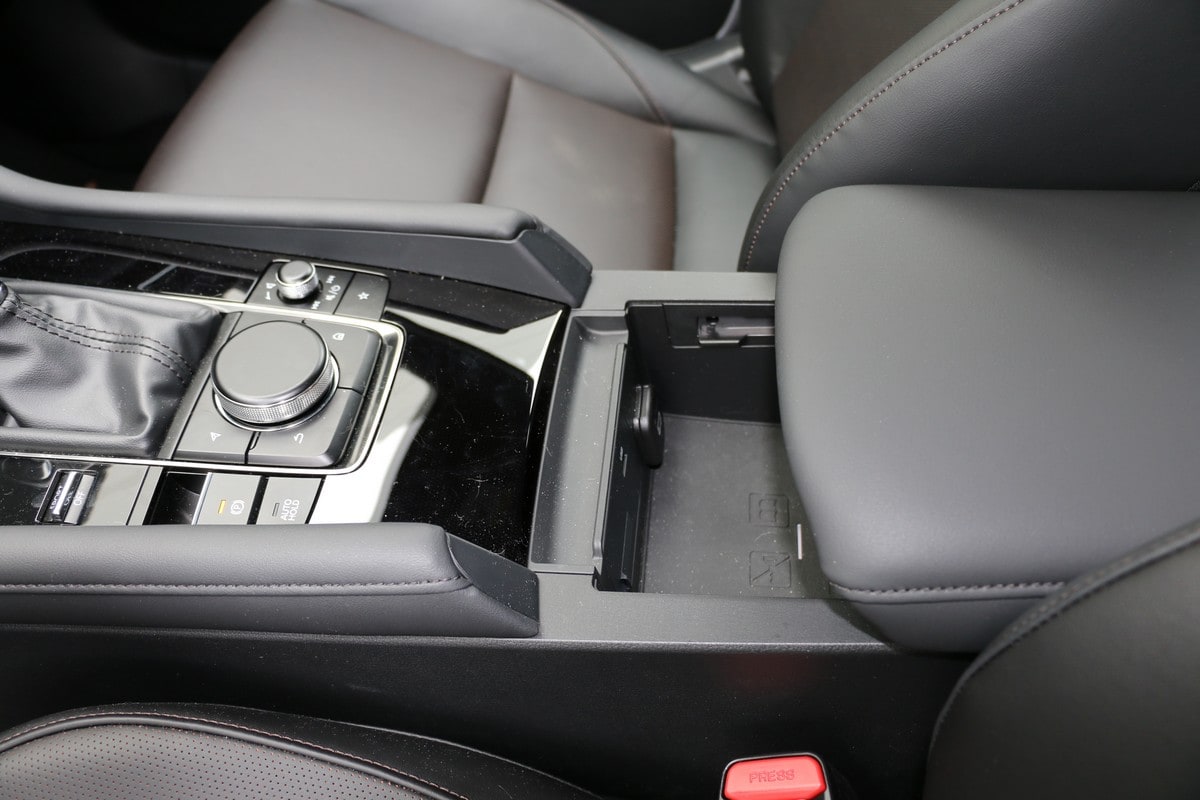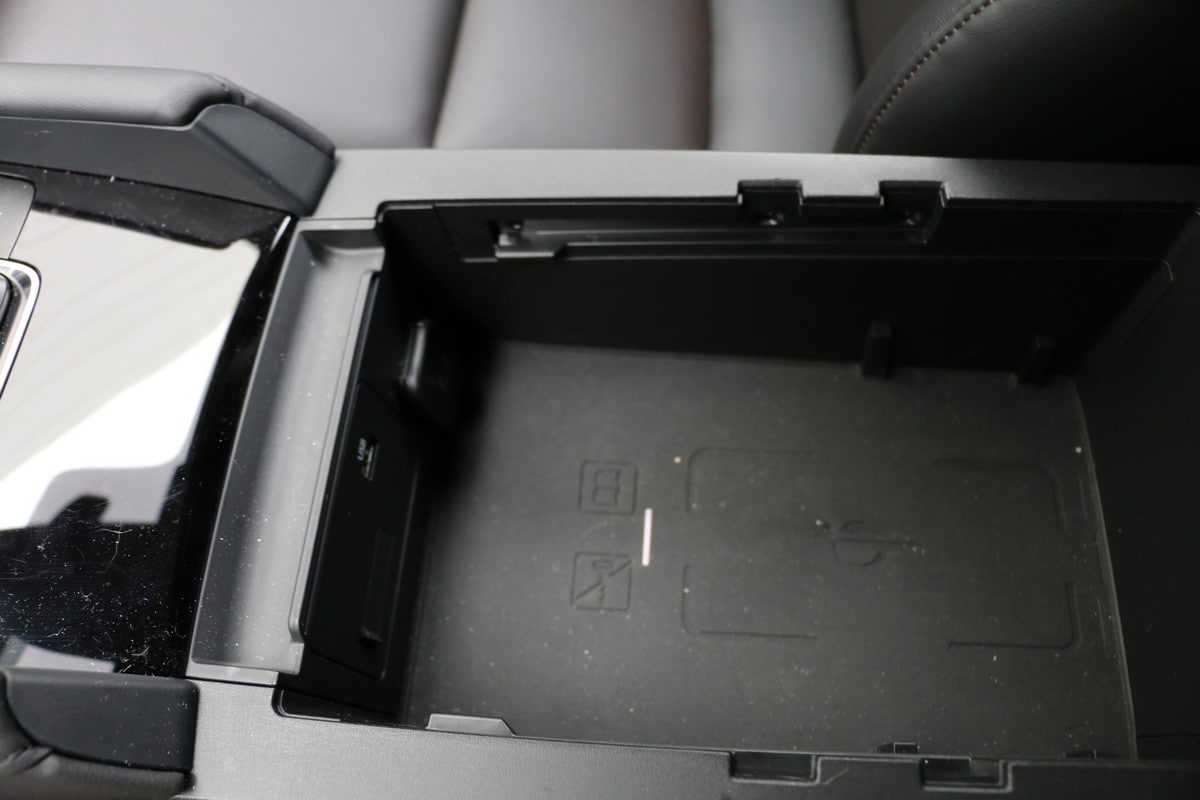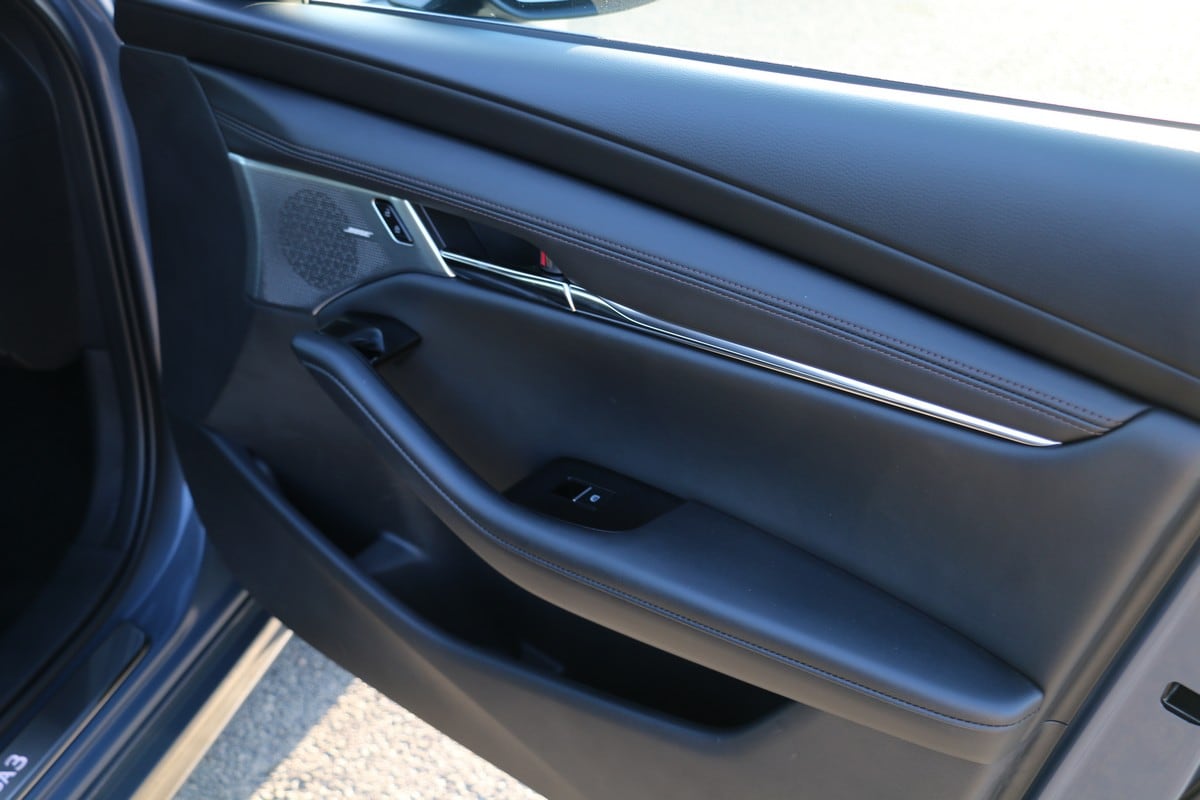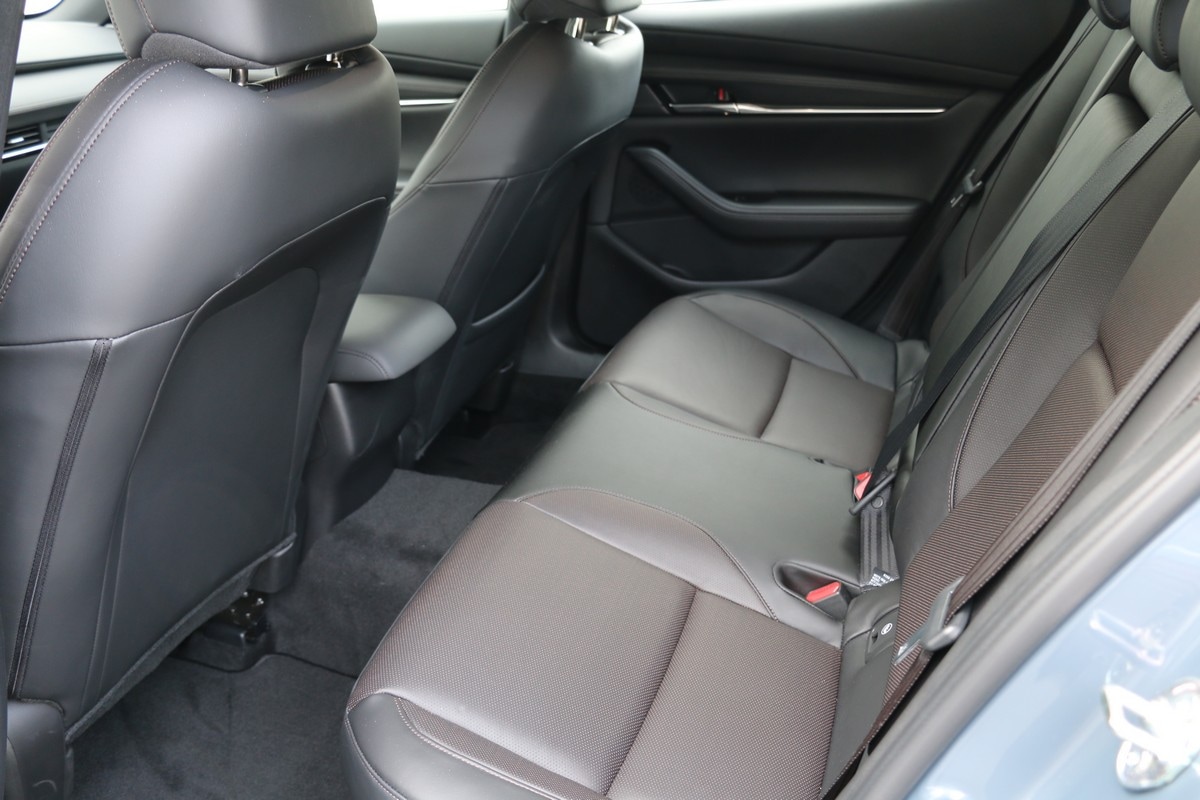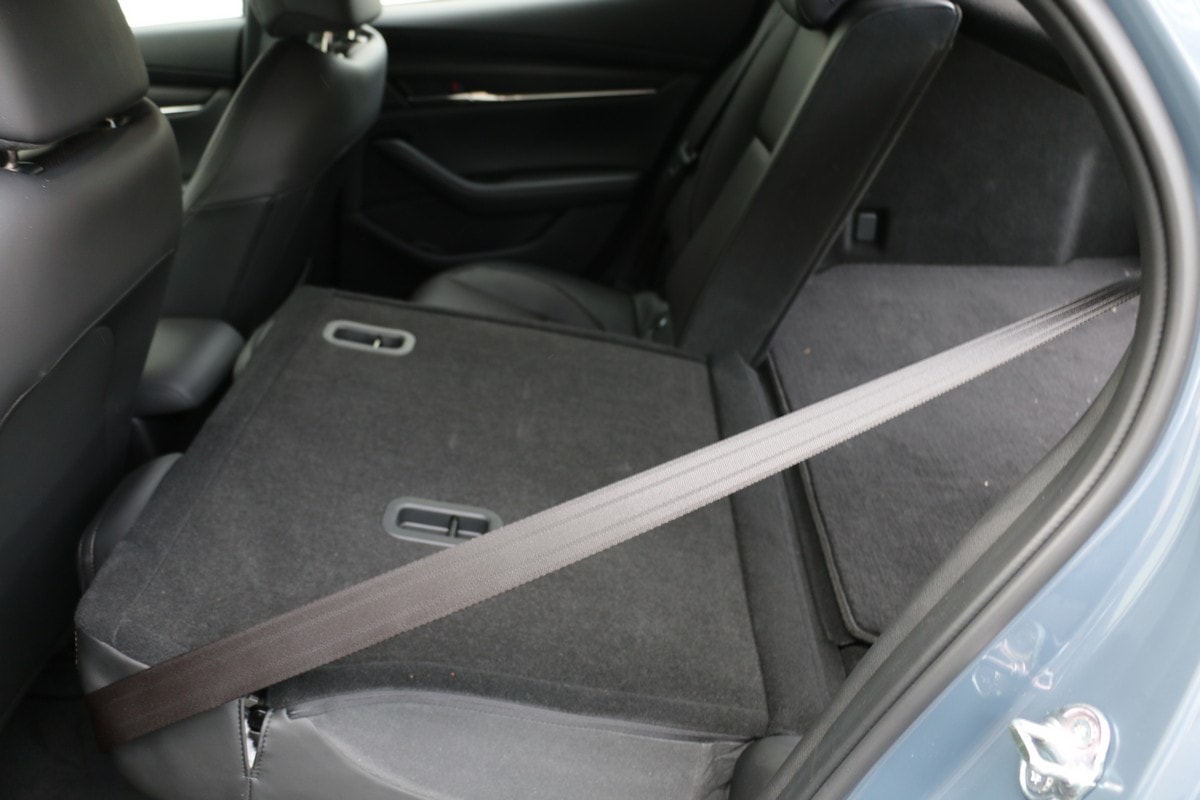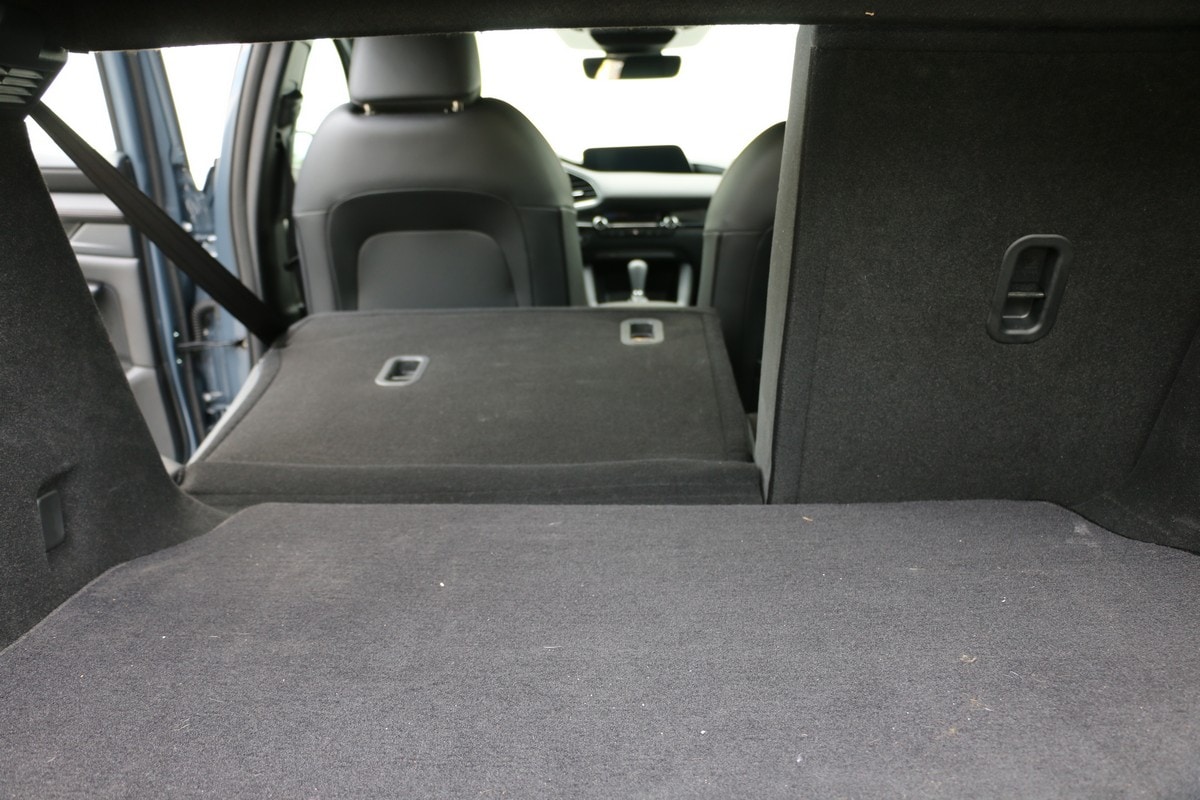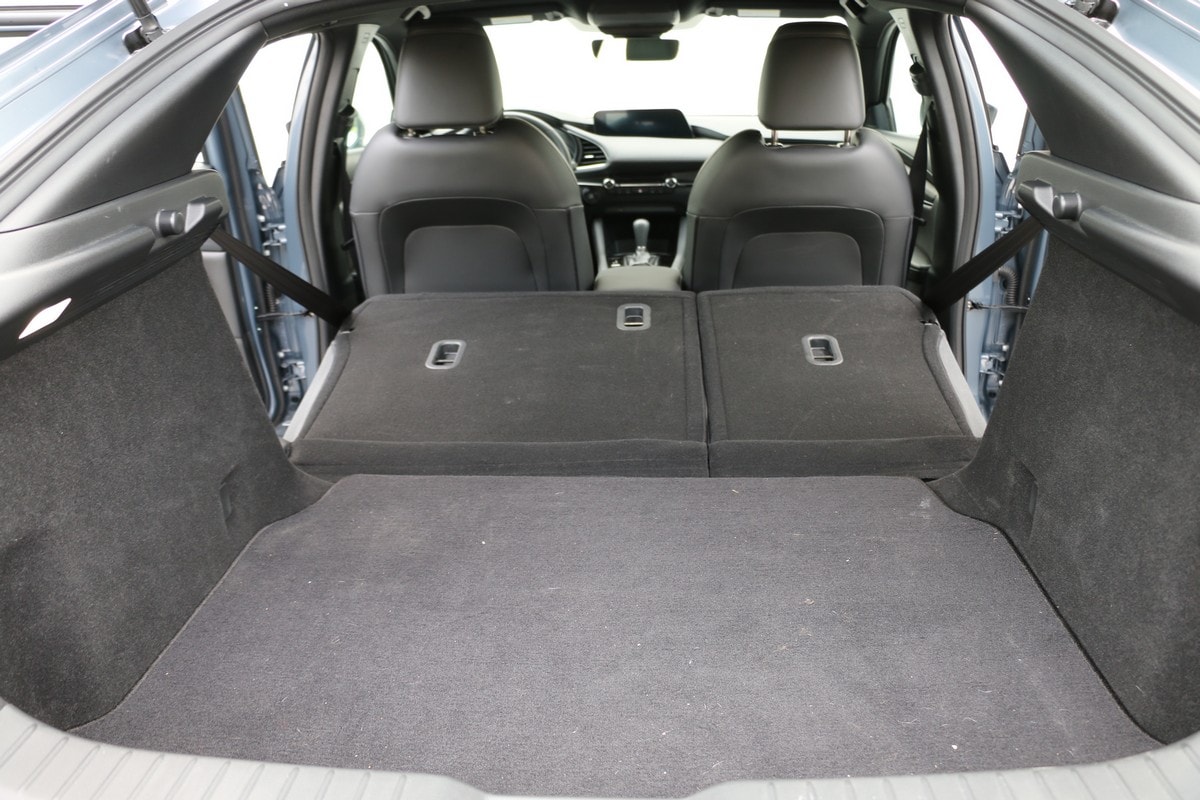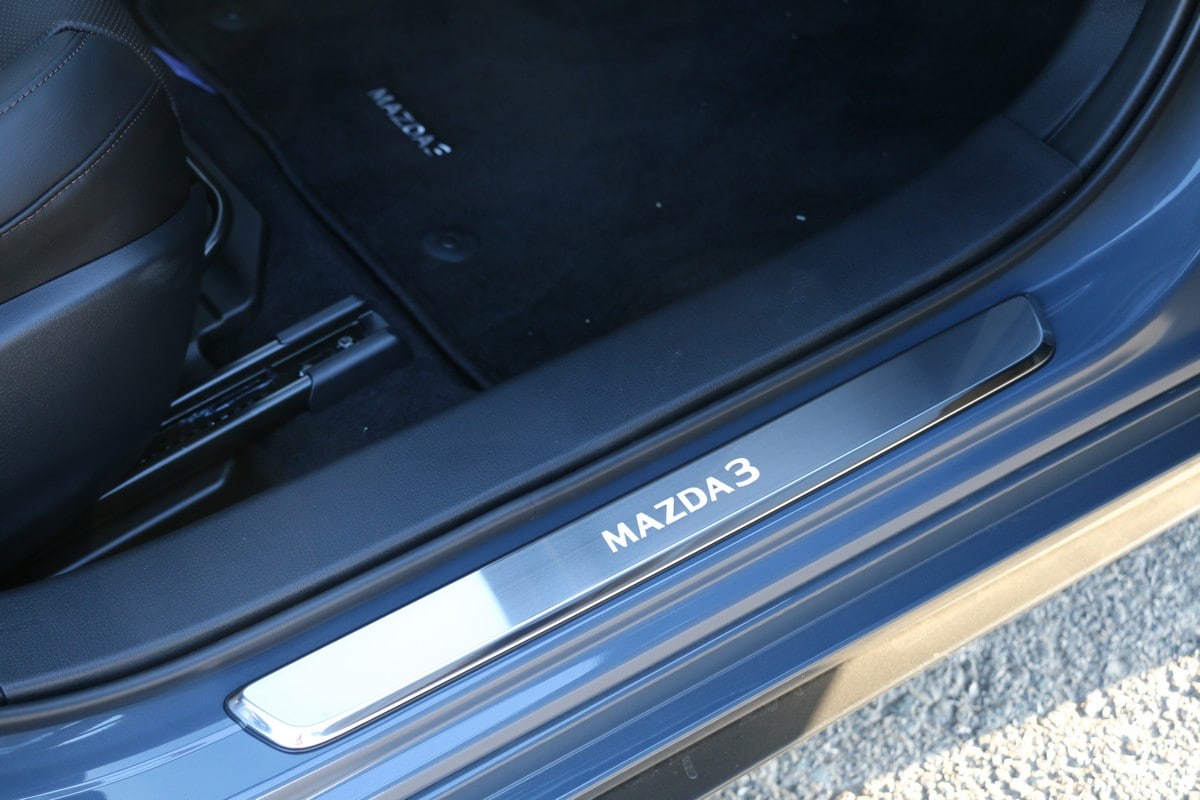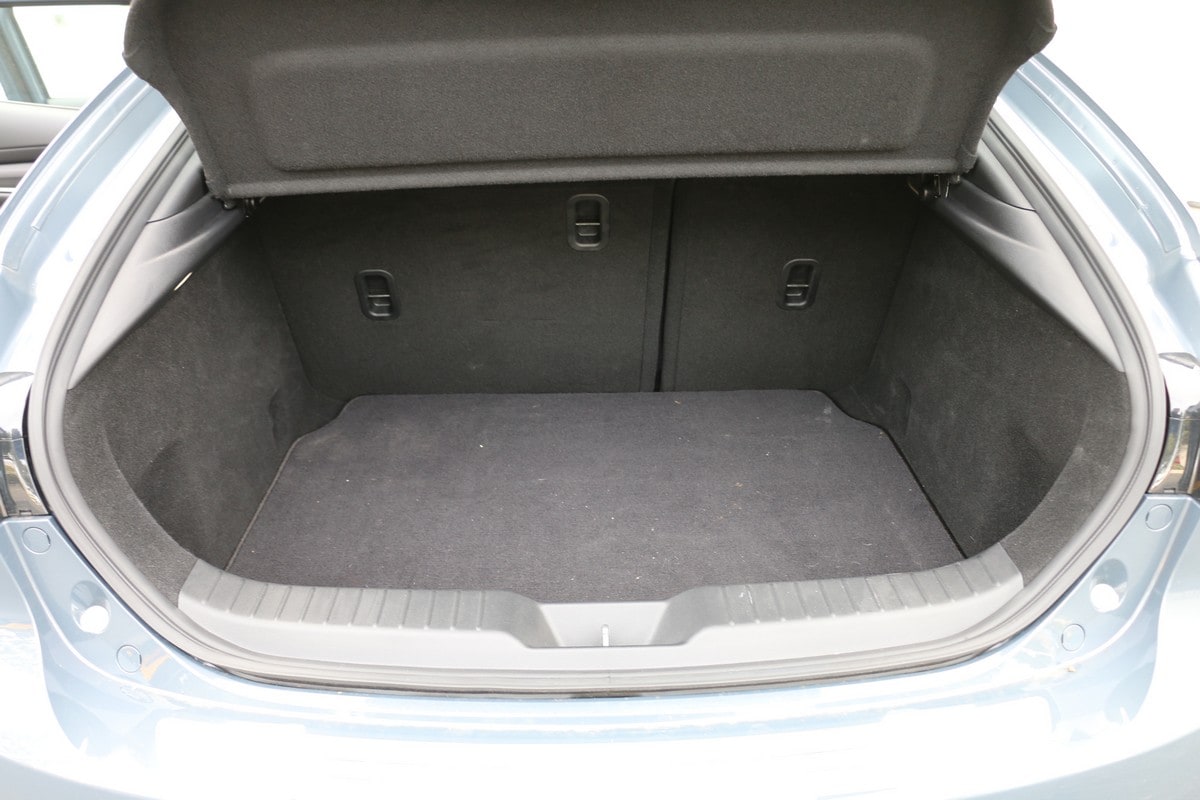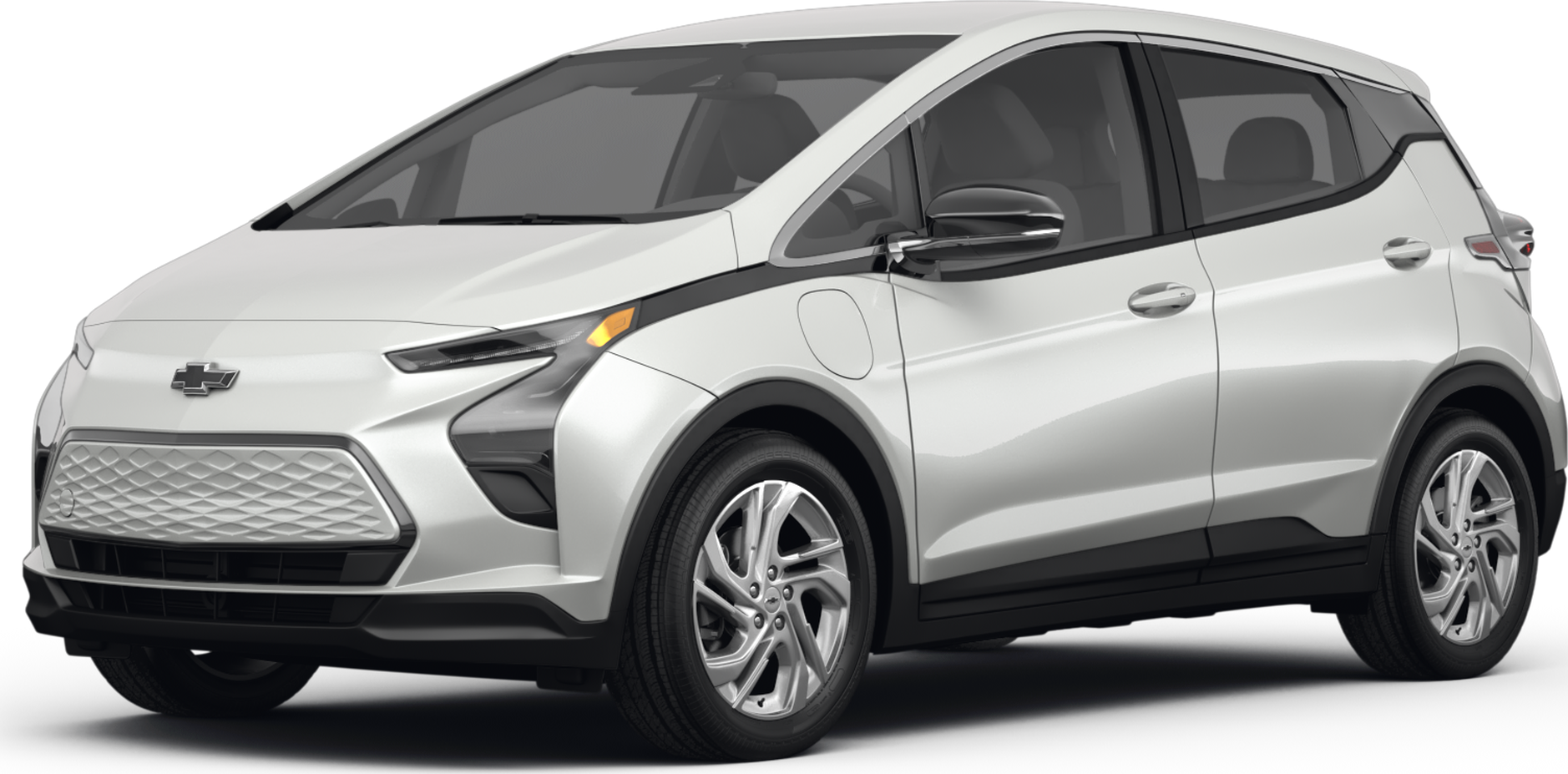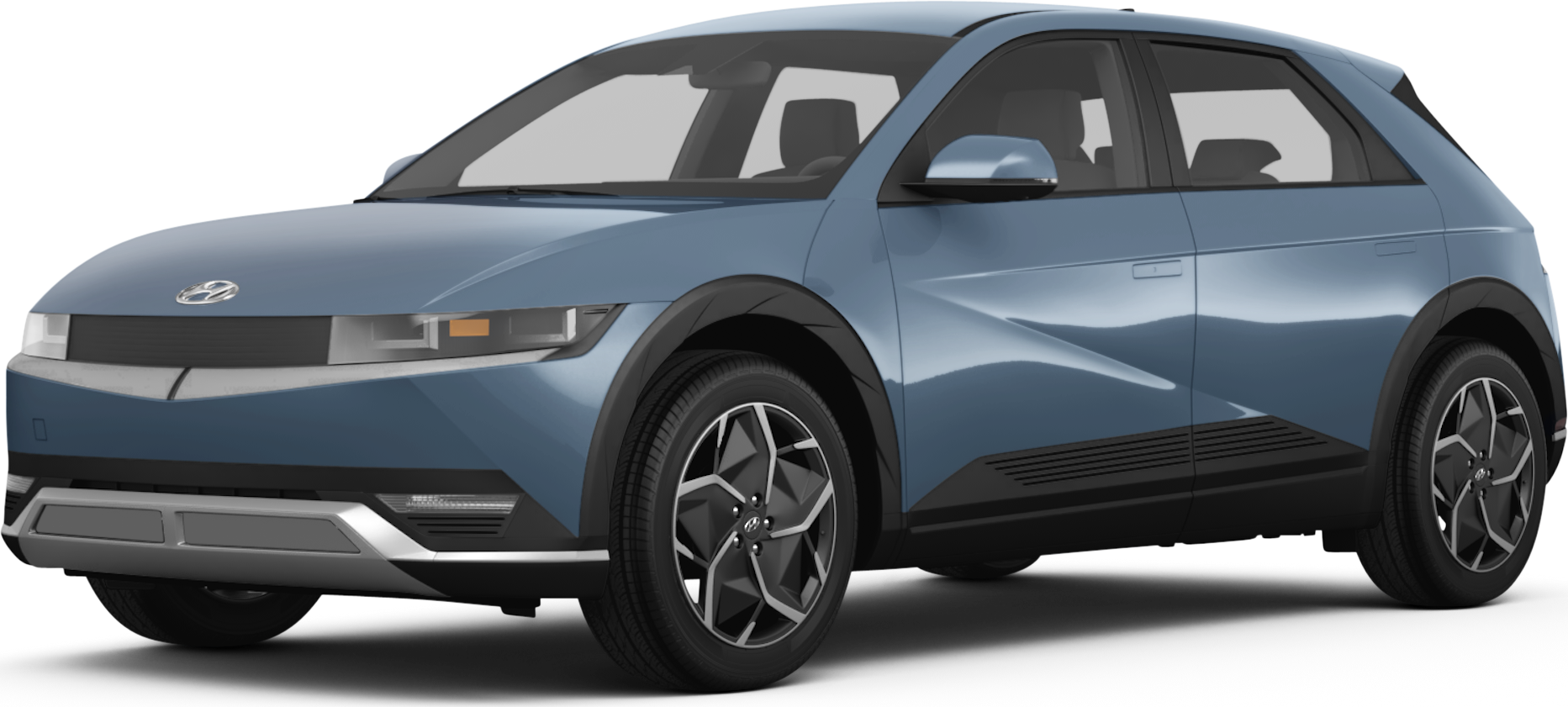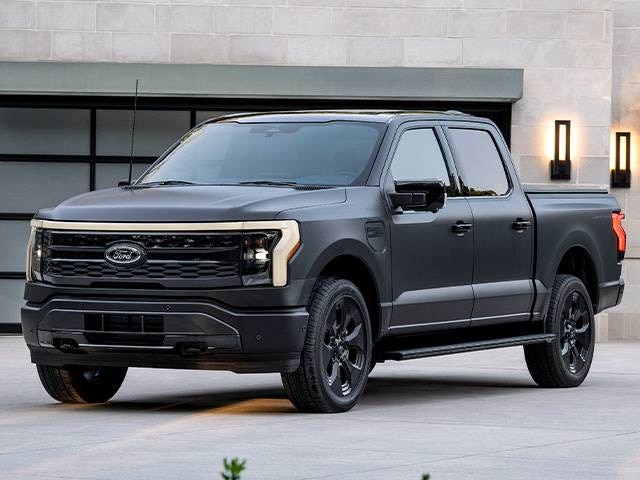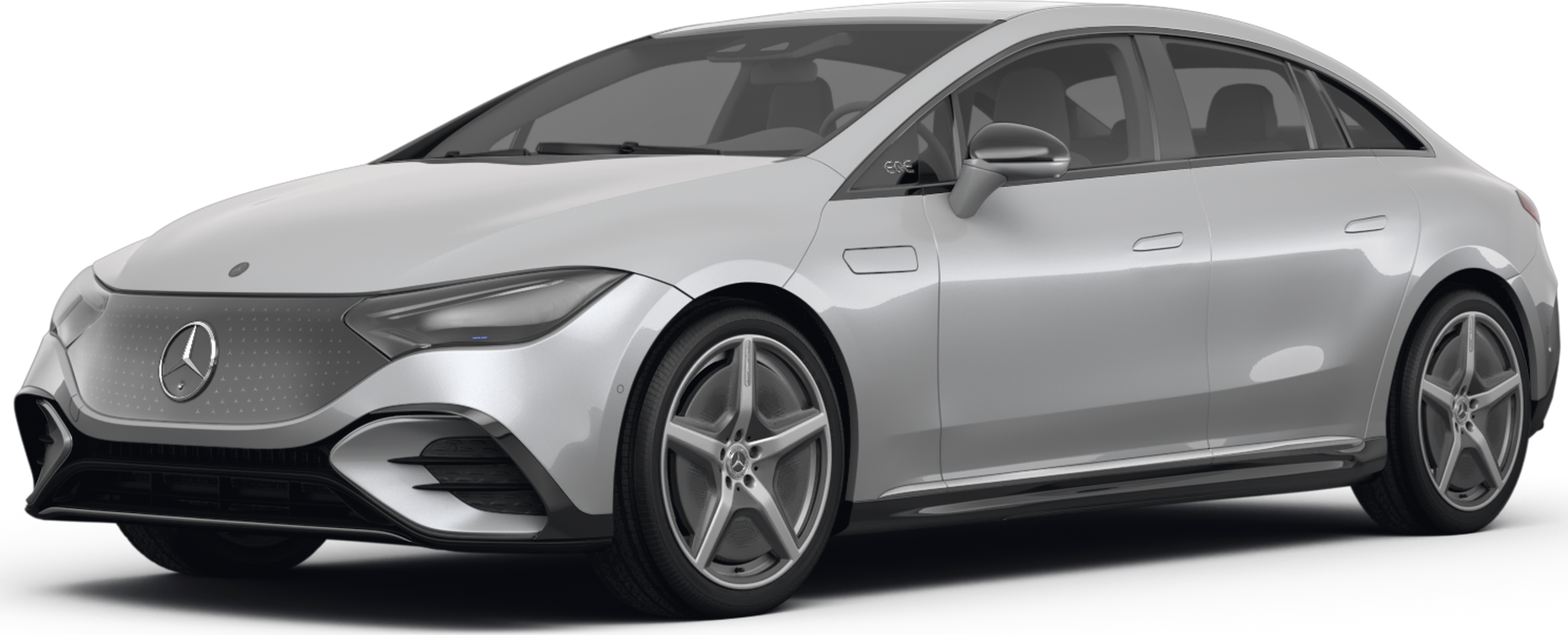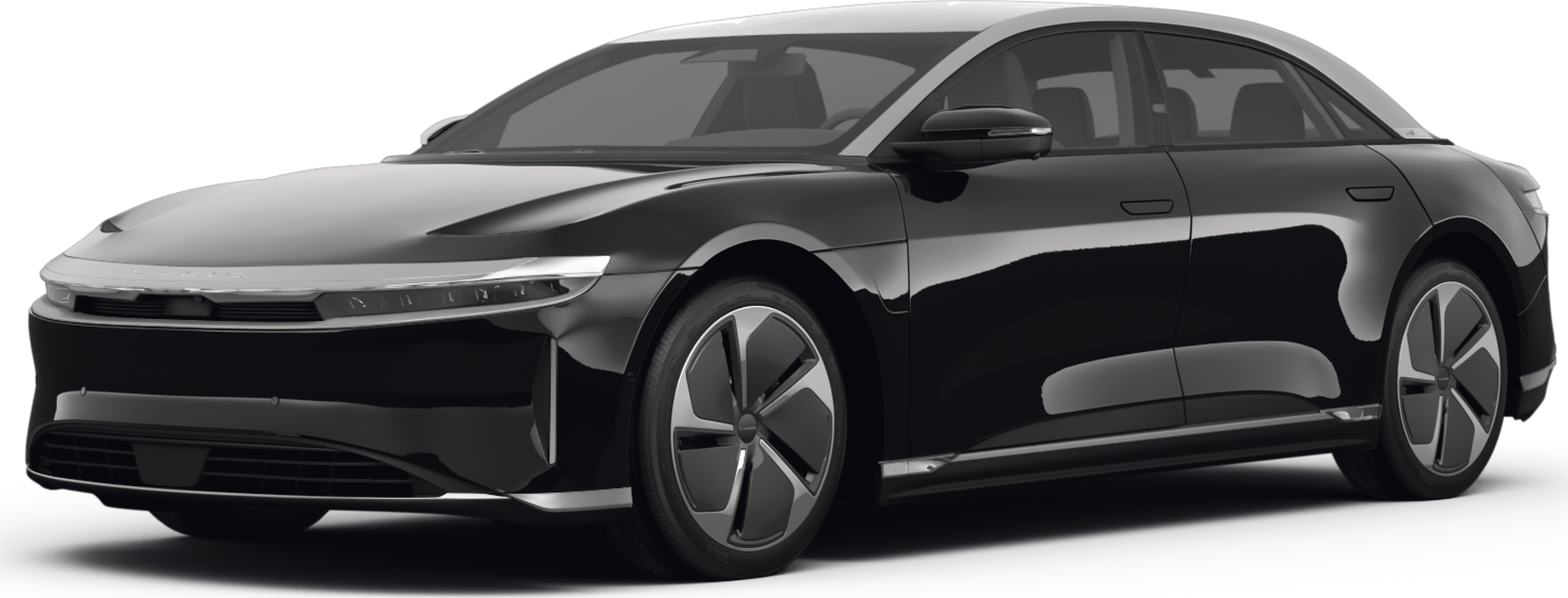We’re spending 12 months with this Mazda3 Hatchback, reviewing the full ownership experience with ongoing updates.
Long-term wrap-up — the good and the bad
By Matt Degen on December 29, 2020
Price: $31,470 | Price yours
Current Odometer: 6,105 miles
Latest MPG: 23.2 mpg
Maintenance/Service Costs: $84.92
Days out of Service: 0
Our time with the Mazda3 long-term test vehicle has come to an end. After 12 months with this new-gen Mazda3 – and its first all-wheel-drive derivative – we saw 6,105 miles on the odometer.
That number is far lower than what we usually would have had, but as with everything else, the pandemic turned things on its head. Weeks and months of safer-at-home mandates simply meant fewer miles logged.
Still, the thousands of miles we put on the Mazda3 proved valuable in assessing its use case, not to mention its sheer practicality as a compact car. As the one who put the vast majority of miles on this Mazda3, I’m summing things up with five aspects I really liked about it, and five that I didn’t.
First, the good:
- Its practicality: Time and time again I found myself loving and using the Mazda3’s hatch area. It’s also the reason I chose the hatch version of Mazda’s compact car vs. the sedan variant. With the hatch, it was simply a more practical car for my needs. From hauling bulky items like portable air conditioners to a vintage cedar chest, to the everyday things like groceries, I relished the extra cargo capacity of the hatch. For a period, I was using it so much that I just left the rear seats folded in preparation for transporting larger items.
- Its driving manners: No big surprise here, but it must be mentioned. Mazdas have some of the most enjoyable driving manners you can get in a car without a luxury badge. By that I mean it’s fun to drive. And by that I mean it has excellent steering feedback, an excellent 6-speed automatic transmission, and an eager engine.
- Its size: Here’s another reason I chose the Mazda3 hatch instead of the sedan. While both are compact, the hatch is shorter. That means it was even easier to park in my garage or in parking spaces. A shorter car with more cargo space is a win-win in my book.
- Its stereo: This Mazda3 had the optional Bose premium audio system. In truth I’m not usually a huge fan of Bose systems, but this one was better than many of the Bose-equipped cars I’ve tested. Moreover, it played high-res FLAC audio files that I had copied to a thumb drive from compact discs (there is no CD player in the Mazda3, as is the case with most cars now). With a good-quality source material, the Bose system sounded good. Not excellent, but certainly good.
- Its safety features: From forward-collision alerts and lane-keeping assist, I appreciate the Mazda3 comes standard with active safety systems. Moreover, I appreciate that this one includes blind-spot monitoring. It really needs it. Which brings me to some of the lesser points in this Mazda.
The not-so-good
- That rear hump: One of my biggest questions when I first received the 2020 Mazda3 hatch was whether its bulbous design would grow on me. In the end, I still have mixed feelings. I do like the overall design that is sporty and slightly aggressive. But I never could get over the Mazda3’s bulbous rear end. And subjectivity aside, its rear pillars meant big blind spots.
- The constant chiming: If you don’t put your seatbelt on before starting the car, the Mazda3 just chimes and chimes and chimes in a high-pitched, annoying manner. Now don’t get me wrong: I always, always wear a seatbelt. But sometimes I like to start the car and get settled before putting it on and driving away. The Mazda wants you to put it on even before starting the car, and if you don’t it will blare at you with an annoying chime.
- Center armrest function: I have a couple of qualms with the center armrest/storage feature. While I like that it’s there, I don’t like that you have to slide it back before lifting it up to access whatever is inside. I wish I could just lift it up without having to slide it back first.
- Placement of wireless charger: And here’s my second issue with the armrest/storage bin. This is where Mazda chose to place the optional wireless phone charger. Again, while I’m glad it offers one, this shouldn’t be the spot for it. That’s because I like to keep other things in the center bin. When the phone is there, it can get buried or other things can roll around the charge pad. I wish instead the wireless charger were placed closer to the dash, as is the case in many other cars.
- Fuel economy and range: In the end, the Mazda3’s computer showed an average mpg of just over 23. I was expecting more, even with its less-efficient all-wheel-drive system. The EPA rates this model at 24 mpg ciy/32 mpg hwy and 27 mpg combined, so I clearly was getting less than anticipated. Granted, most of my driving was in the city, but I still was surprised. Another disappointment was the Mazda3’s range. More often than not, I had to fill up around every 220 miles or so. This was far, far below the EPA’s estimate of 343 miles. Over all the time we had it, the best range we saw before refilling was 249.3 miles. I’m not one to wait until I’m running on fumes, but I also often didn’t fill until the low-fuel light came on and the indicated range was around maybe 20 miles. I’m still scratching my head as to why this was the case.
In the end, I enjoyed the Mazda3 overall. It served me well for my needs and had nary a problem while doing it. If you’re the type of person who logs many, many miles or has a long commute, though, be prepared to fill up with gas often if you’re experience is anything like mine. Thank you for serving me well, Mazda.
Mazda3 first scheduled service
By Matt Degen on November 20, 2020
Price: $31,470 | Price yours
Current Odometer: 5,347 miles
Latest MPG: 22.2 mpg
Maintenance/Service Costs: $84.92
Days out of Service: 0
As our long-term Mazda3’s odometer crept near the 5,000-mile mark, I got a notification every time I started the vehicle. “Service Due Soon” it said in the middle of the digital instrument cluster, with an orange wrench icon above to emphasize the point.
A 5,000-mile service is pretty normal, but I must say that it still took me by surprise. That’s because my past two long-term vehicles – a 2017 Volkswagen Golf Alltrack and 2019 Volvo XC40 – both had service intervals that went thousands of miles longer.
But considering I’d been driving the Mazda3 for nearly a year, it’s not like it was a major pain. And if you’re wondering why I’d only put that few miles on the Mazda3 in almost a year’s worth of time, well, it was all due to the pandemic and its ensuing work-from-home and safer-at-home mandates.
Service with a smile (and text)
I called my local dealer, Tuttle-Click Mazda in Irvine, and set up an appointment. They said the service would take 90 minutes or less and they could do it that week. I set up the appointment and was also happy to receive a couple of texts to confirm and remind of the appointment.
I brought in the Mazda3 for the appointment, and the only snag was when the service attendant said it would take 2 to 3 hours, not the hour and a half I anticipated. They offered a ride or a complimentary rental, and I opted for the latter. It allowed me to grab lunch and get some work done.
The service was actually completed sooner than expected, in under two hours, and all went fine. Not a big surprise considering the car is still so new and has barely any miles on it.
Oil, tires and a fix for two recalls
The service included the usual oil and filter change, tire rotation, general inspection and topping off of fluids. Additionally, the service department addressed two recalls I was not aware of. Both were related to software, with one fixing a glitch that can make the automatic emergency braking system to falsely activate, and the other to update the My Mazda app.
Fortunately I wasn’t really affected by either of these. I had never used the My Mazda app, and while the forward-collision system did give me a couple of false warnings, it never went into full auto brake, thankfully.
All told, the service cost $84.92.
The Mazda3 has amazing steering feel
By Matt Degen on October 21, 2020
Price: $31,470 | Price yours
Current Odometer: 5,281 miles
Latest MPG: 22.2 mpg
Maintenance/Service Costs: $0
Days out of Service: 0
Almost every new car sold today uses EPAS: electric power assist steering. Without making this post into an automotive engineering deep dive, simply put an EPAS system replaces older setups that used hydraulic pistons in favor of an electric motor. The reason is better efficiency (by means of less parasitic loss) and the potential for self-driving abilities like active park assist, in which a car can parallel park itself.
Anyway, as I was saying, almost every new car today uses EPAS. And almost every new car’s steering feel has an artificialness to it. For everything these systems add, one loss for those of us who love to drive is the ability to “feel” the road via the steering wheel. That, in turn, leads to a sense of detachedness from the vehicle we are piloting.
Mazda vehicles are welcome exceptions to the rule, and the latest Mazda3 is an excellent example. The Mazda3 is a joy to drive, and one reason is because of its steering feel. While the 2020 Mazda3 uses an EPAS system like most other cars, it has been dialed in better than the majority of others. Really. In fact, Porsche is about the only other automaker I’ve found that has really figured out how to make EPAS feel more natural. That’s good company to be in.
I admire the 2020 Mazda3’s steering feel just about every time I drive it – and every time I drive it up the long, winding canyon road near my home. It just feels so good. So connected. So controllable. So balanced and well-weighted no matter the speed.
Still, trying to explain the Mazda3’s steering feel with words is like trying to describe the taste of your favorite meal. Words can only do so much. As with a meal you must eat to appreciate, the Mazda3 is a car you must drive to truly cherish. And most Mazda owners I talk to do just that.
Frequent fill-ups and range frustration
By Matt Degen on September 14, 2020
Price: $31,470 | Price yours
Current Odometer: 4,732 miles
Latest MPG: 21.2 mpg
Maintenance/Service Costs: $0
Days out of Service: 0
Just 250 miles of indicated range. No, I’m not talking about an electric car. I’m referring to the 2020 Mazda3 AWD 5-door hatchback.
Try as I might, more often than not when I fill the Mazda3’s tank to full, that’s the indicated range. And by the history of my driving over the past 4,000-plus miles, that number is pretty accurate.
For the longest time I thought I was doing something wrong. Maybe I just wasn’t filling the tank all the way full. But in the latest instance, I filled the tank until the nozzle kept clicking off. I did this three times, finally stopping when the nozzle could only pump for split second before it stopped, indicating a full tank. Yes, this tank was certainly “topped off.”
Back inside the car, the fuel indicator also indicated full. And to the left of it, that dismal range reading: 250 miles to empty.
A history of meager range
Going through the past 10 months of fuel logs for our long-term Mazda3, I see that the most range I ever got out of it before refueling was just under 245 miles. My notes from our log after that trip read: “Seriously, how is the fuel tank in this thing 12.7 gallons? Fuel stops filling below 10 gallons, with an indicated range of just 30 miles left.”
More consistently my trips between fuel stops are 210 to 220 miles, because I’m the type of driver who doesn’t wait until the fuel needle is tickling the E.
I find this frustrating for a couple of reasons. First being the obvious in that I have to fill up every couple hundred miles or so. The second is that the EPA rates the total range of this all-wheel-drive Mazda3 hatchback at 343 miles.
Middling overall MPG from this Mazda3
My overall fuel economy hasn’t exactly been stellar, either. For the most part it’s ranged from just over 21 mpg to about 24 mpg. The best we’ve recorded was 26.6 mpg by my colleague Allyson, whose commutes involved heavy freeway time. By contrast, most of my driving is in the city. Still, even by those metrics this Mazda3 is falling short of the EPA numbers: 24 mpg city/32 mpg highway and 27 mpg combined.
This is surprising because just about every other Mazda I’ve driven over the past decade has had above-average fuel economy. Sometimes surprisingly so.
Now I surmise at least a couple of factors are at play here. If you elect for AWD in your Mazda3, — whether the 5-door hatch or 4-door sedan – you’ll also unfortunately get a smaller fuel tank. While a front-wheel-drive Mazda3’s fuel tank holds 13.2 gallons, an AWD Mazda3’s fuel tank is the aforementioned 12.7 gallons.
So in addition to having lower fuel economy numbers due to the all-wheel drive, you’ll also get a tank that’s half a gallon smaller.
But these numbers don’t quite add up for me. I’m still perplexed at this Mazda3’s lower-than-expected real-world fuel efficiency.
Hatchback usability means home improvement
By Matt Degen on August 14, 2020
Price: $31,470 | Price yours
Current Odometer: 4,403 miles
Latest MPG: 20.8 mpg
Maintenance/Service Costs: $0
Days out of Service: 0
In the past few weeks I have purchased and hauled home an antique cedar chest, portable air conditioner and load upon load of wood planks to make shelves. I didn’t need an SUV for any of this stuff, nor a truck. Every time, every piece of large, heavy and sometimes awkwardly-sized cargo fit inside the Mazda3 Hatchback. And every time it was a reminder of why a hatchback is so recommendable.
Yes, all of these items would fit in a crossover SUV like the Mazda CX-30 or CX-5, but as good as those sport utility vehicles drive, they still don’t have the dynamics of a lower-riding car such as the Mazda3. With a hatch like this, you really get the best of both worlds: the ability to haul cargo with a flip of the seats, and the crisp and athletic driving manners long loved by Mazda owners.
Hatchback flexibility
I simply love the utility and flexibility provided by the Mazda3 hatch. Even more, I love that I don’t have to give much of a second thought about it. There’s a wonderful assurance in knowing that you have the space and ability to carry stuff that just wouldn’t fit in a traditional sedan.
Thanks to the practicality afforded by this Mazda3 Hatchback, our home has given new life to a 1940s-era thrift store chest, is beating the summer heat with an air conditioner, and my long boxed-up books are now properly stored on shelves. I don’t know what the next home project will be, but I can just about guarantee that the makings for it will fit in Mazda’s compact hatch.
Does the Mazda3 need a turbo engine?
by Matt Degen on July 15, 2020
Price: $31,470 | Price yours
Current Odometer: 4,144 miles
Latest MPG: 21.6 mpg
Maintenance/Service Costs: $0
Days out of Service: 0
Last week Mazda announced that the 2021 Mazda3 would be getting the option of more power, namely with a turbocharged 2.5-liter 4-cylinder. That’s right, for the first time since the dearly departed Mazdaspeed3, last seen in 2013, the Mazda3 will get the option of a turbo engine. The engine is available in 2021 Mazda3 sedans and hatchbacks, and delivers up to 250 horsepower and 320 lb-ft of torque.
The Mazda 2.5 Turbo will come with all-wheel drive standard and only be offered with the 6-speed automatic transmission. Mazda also announced a less-powerful Mazda3 variant with a 155-hp 2.0-liter engine.
The news of the juiced engine may have you asking: “Does the Mazda3 need more power?”
After logging several thousand miles already in our long-term 2020 Mazda3 AWD Hatchback, my short answer is: It certainly won’t hurt.
The (slightly) longer answer
As it stands, the currently available Mazda3 has only one engine: a naturally aspirated (non-turbo) 2.5-liter 4-cylinder that makes 186-horsepower and 186 lb-ft of torque. A 6-speed automatic transmission is standard, though a 6-speed manual is offered in one higher-trim version of the hatchback model.
Those numbers aren’t bad on paper, and neither are they in real-world driving. I’ve found that at current levels, the power is just enough to make the Mazda3 feel zippy. Acceleration is OK and passing power is OK. Neither really gets my juices flowing, but neither do I dread getting up freeway on-ramps or overtaking slower cars.
Moreover, the 6-speed automatic transmission is good. Make that really good. In an age where we now have 10-speed transmissions, six cogs may sound weak, but this transmission is one of my faves. It is quick yes, but more so it’s intuitive. It just seems to know when to hold revs longer for spirited driving or when to upshift early to save fuel.
Getting back to the performance, I should mention that when I do feel like I need some extra juice from the Mazda3, I flick the little sport mode switch. This changes throttle and shift calibrations. While it doesn’t open the well for more power, it really does help make the Mazda3 feel snappier.
Should you get a Mazda3 turbo?
The truth is, the Mazda3’s currently and only powertrain will likely satisfy most everyday drivers. But the Mazda3 has traditionally appealed to more than just your average commuter. Mazdas relish their role as fun-to-drive, athletic cars. The “zoom-zoom” marketing tagline may be gone, but the spirit remains.
If you’re among the Mazda faithful who’s been wanting a Mazda3 with a little more oomph, the upcoming model should really scratch that itch. I’ve enjoyed this engine in other applications like the CX-5 compact SUV, and can attest that it’s a potent powertrain.
The 2021 Mazda3 2.5 Turbo is set to go on sale “by the end of this year,” according to Mazda. Pricing will be announced closer to its on-sale date.
Wireless phone charging for the win
by Matt Degen on June 11, 2020
Price: $31,470 | Price yours
Current Odometer: 3,993 miles
Latest MPG: 21.7 mpg
Maintenance/Service Costs: $0
Days out of Service: 0
Thanks to a feature the 2020 Mazda3 already has, and a phone I finally bought, I can now feel like one of the cool kids. It comes down to two words: wireless charging.
Up until a couple of weeks ago I was still rocking the original iPhone SE, which is several years old. I loved its small size and was waiting for a new version of this smaller iPhone. That arrived recently with the new iPhone SE, which many are dubbing “iPhone SE 2.”
Along with far faster and better hardware, this second-gen iPhone SE has something the original one doesn’t – the ability to be charged without connecting a cable. You simply set the iPhone on a pad, and it charges. Brilliant.
Convenient charging that’s easily available
The 2020 Mazda3 offers such a pad, and it’s available on any model for $275. What’s cool is that the wireless charging pad is a standalone option, and is offered on all trims of the 2020 Mazda3 – both the hatchback and sedan. It resides in the armrest storage area between the driver and passenger.
I’ve been using it every time I drive. I love the convenience of simply setting my phone down and having it charge. To my surprise, it even works with the case I have on it.
Two things to know before charging
There are a couple of things to be aware of if you use the Mazda3’s wireless charging pad, and they also apply to other vehicles with such a charging base. The first is that you obviously need the spot to be clear of stuff. For me that meant moving my garage remote, breath mints, coins and whatever else might be taking up that real estate. And once the phone is there charging, there’s not a whole lot of room left on the sides for my displaced stuff.
The second thing to know is that while the Mazda3 has Apple CarPlay/Android Auto integration, those systems don’t work wirelessly. Mazda is hardly alone in this regard. Wireless CarPay and Android Auto is slowly making its way into new cars, but as in other vehicles with this setup, the Mazda3 requires a USB cable to make them work.
Still, I appreciate having this option, and it’s one more feature in the Mazda3 that I can now enjoy.
Clean, socially distanced and not aggravated
by Matt Degen on May 13, 2020
Price: $31,470 | Price yours
Current Odometer: 3,749 miles
Latest MPG: 21.9 mpg
Maintenance/Service Costs: $0
Days out of Service: 0
I wouldn’t normally leave a key in a car while being outside it, but this past weekend it proved to be the very thing needed for the circumstances. Here’s why.
My 2020 Mazda3 hatchback really needed a wash. Like so many cars and so many people these days, it has been sitting more than driving due to COVID-19 stay-at-home mandates.
And lo and behold, it turns that a car just sitting around outside doesn’t stay perfectly clean. Go figure.
The poor Mazda was contending with dust, tree leaves and birds doing target practice on the 3’s hood. So it needed a wash, and not one of those drive-through quickies. To get this detriment off, it needed a good old-fashioned handwash.
Clean social-distancing
I was happy to perform this task myself, as it provided an opportunity to give the Mazda3 some non-driving love while also getting outside yet remaining socially distant.
I parked the car in my driveway and got to work, with its key in my pocket. But the Mazda had a habit of constantly locking and unlocking the itself and beeping every time I got near the front doors. Keyless entry and lock, remember? Normally it’s a help. But when washing a car this feature can turn into an aggravation.
I had the same experience with my last long-termer, the 2019 Volvo XC40. Formerly I tried to ignore this incessant beeping and lock/unlock.
This time I had a better idea: try leaving the key inside. I tossed it on the driver’s seat, closed the door and washed away. It worked. No more beeping or locking/unlocking.
Of course, I was not a foot from the car the whole time, and it was in my driveway. It’s the only time I would just leave a key in the car. But it saved my sanity and provided some socially distant bonding with the Mazda.
If you hate start/stop systems, you’ll love the Mazda3
by Matt Degen on April 9, 2020
Price: $31,470 | Price yours
Current Odometer: 3,699 miles
Latest MPG: 22.4 mpg
Maintenance/Service Costs: $0
Days out of Service: 0
It’s not often that we appreciate a car for what it doesn’t have, but in the case of the 2020 Mazda3, it lacks a feature that is becoming all but standard in almost every other new car – and I LOVE that this one doesn’t have it.
What I’m so glad the new Mazda3 doesn’t have is an engine start/stop system.
Start/stop systems, also known as idle start/stop, turn off the engine when it would otherwise sit idling. The most common scenario is at traffic lights. Instead of the engine just idling while the vehicle is motionless at a red light, these systems turn off engine, then restart when you take your foot off the brake pedal. The idea is they save fuel that would otherwise be wasted while the vehicle goes nowhere.
While I’m all for saving fuel, I don’t like the other aspects that can come with start/stop systems. The bad traits range from rough restarts to curtailing the climate control system. That latter is especially vexing during the hot summer months, when the air conditioning gets noticeably weakened.
Now most cars offer the ability to turn off these systems (though for a few years General Motors vehicles did not). Turning off these systems is usually done via a button, and in rare cases as with new Volvos, you can turn it off and it will stay that way until you choose otherwise.
But if you’re a real start/stop hater, you’ll have a reason to love Mazda vehicles, including the new Mazda3. That’s because it doesn’t have such a system in U.S.-spec models. And that means you never have to remember to press a button every time you start the car, or get caught sweating in 100-degree temps only to have the A/C system throttled back.
Still attains respectable fuel ratings
by Matt Degen on March 2, 2020
I also find it nicely ironic that, even without an engine start/stop system, the Mazda3 lineup still attains respectable fuel economy ratings. Most of the automatic models have a combined EPA rating of 30 mpg. In sedans, the Mazda3 earns up to 36 mpg, while a Mazda3 Hatchback gets up to 35 mpg. Those figures are for front-wheel-drive models. For all-wheel-drive Mazda3 models, the sedan earns 25 mpg city/33 highway, while the hatch like this one is rated 24 mpg city/32 highway.
Granted, those figures still trail the Honda Civic, which earns up to 42 mpg and up to a combined 36 mpg and also doesn’t use an engine start/stop system. I’m inclined to wonder if the Honda’s advantage has more to do with its engine size and transmission. The Honda with those numbers uses a smaller, turbocharged 1.5-liter 4-cylinder and a CVT (continuously variable) transmission, whereas the 2020 Mazda3 has a naturally aspirated 2.5-liter 4-cylinder and a 6-speed automatic transmission.
I actually prefer the Mazda’s transmission, but that will be another post. For now, I’m just happy to not have to fuss with disabling a start/stop system every time I start the car.
Mazda3 hatchback rear visibility, or lack thereof
by Matt Degen on February 27, 2020
It’s time to discuss the elephant in the room: the Mazda3 Hatch’s elephantine C-pillars.
If you’re not familiar with automotive jargon, “pillars” refer to the vertical supports and panels between a vehicle’s sides and its roof. The A-pillars, for example, are the metal beams on each side of the windshield that stretch from the hood to the roof. The B-pillars are just aft the front windows, and the C-pillars are the ones after that, usually at the rear of the vehicle (though larger, 3-row SUVs and minivans have D-pillars, too). As they connect the roof to the rest of the vehicle, pillars are vital to a car’s structural integrity and safety.
In the Mazda3 hatchback’s case, the C-pillars are the thick – ok, very thick – span of metal between the rear windows and the glass of the hatch in back. And yes, they’re huge.
The 2020 Mazda3 Hatch’s C-pillars are its most controversial feature. I must admit that when I first saw this new-gen Mazda3 debut at the 2018 Los Angeles Auto Show, my jaw dropped. And not for a good reason.
I’m obviously no car designer, but I thought, “Man, that baby’s got some back.” I am a pragmatist, however, and that’s where the next thought entered: “Those are gonna spell trouble with blind spots.”
Of course, the new Mazda3 sedan is a totally other matter. It has none of the hatch’s polarizing design, but instead a tidy, buttoned-up and stylish look that would be appropriate on a car costing twice as much.
Yet I chose the hatch anyway
Yet when it came time to selecting which Mazda3 I wanted to live with and evaluate for a year, I chose the 5-door hatch. Beyond its added hatchback practicality – I’m a pragmatist, remember? – I wanted to see if its design would grow on me.
I must admit it’s starting to. In the time since its debut as a 2019 model, I’ve lifted my jaw from the floor and kinda started to admire the thing.
Still, the Mazda3 hatch’s style isn’t without issues. While beauty is subjective, there’s no denying that those C-pillars create huge blind spots. It’s just the nature of all that metal. From the driver’s seat, rearward side visibility is non-existent.
This is hardly lost on Mazda. The automaker isn’t blind, and there’s good reason that blind-spot monitoring is standard on the 2020 Mazda3 hatchback. Thank heaven.
Yet one more piece of tech would greatly help matters: a bird’s-eye camera.
More perilous in parallel parking
Like other modern cars, the Mazda3 comes with a backup camera – they are mandated on new vehicles now. And that’s fine for simply backing up. But I do more than that.
Almost every day, I must parallel park in my community. And those big rear pillars really obstruct the view. If the Mazda3 Hatch had a bird’s-eye camera (also known as a top-down, 360-degree or surround-view camera system), this would greatly help in seeing not just what’s to the rear, but also around the front and sides. As it stands, locating the target of where to start my turn while in reverse when parallel parking has become an educated guess.
Please learn how to back in to parking spaces
I also have a habit of backing into parking spaces. I find this to be good practice in general, as I’ve seen far too many near hits (or direct hits) in busy parking lots with cars backing out. If you simply take an extra moment and back in to begin with, you can save yourself frustration, a strained neck, and a potential collision. It’s a good habit to get into it, and with today’s backup cameras and parking-assist systems, there’s fewer excuses to not back in to a parking space.
If you buy a Mazda3 hatch, it’s nearly a necessity. Otherwise, when backing out of a space it’s difficult to see the rear corners. Yes, the rear cross-traffic detection that’s built into the blind-spot monitoring system can warn you of an approaching vehicle, but it’s better to stave off even that.
Know what you’re getting into
Your heart and eyes, not to mention your cargo needs and preference, will determine whether you choose the Mazda3 sedan or hatchback.
Several months into this ownership experience, I would still pick the hatch. If that’s the direction in which you’re heading, just be aware of its visibility limitations. I wouldn’t want you blind-sided by those inherent blind spots.
Tire pressure warning and relief
by Matt Degen on February 14, 2020
Price: $31,470 | Price yours
Current Odometer: 2,494 miles
Latest MPG: 23.4 mpg
Maintenance/Service Costs: $0
Days out of Service: 0
There’s never a good time to get a tire pressure warning light, but there can certainly be instances that are worse than others. I experienced one such recently in our long-term 2020 Mazda3 test vehicle. It was just after 5 a.m. and I needed to get to the airport. As I left home and pulled into the street, the warning light illuminated.
Uh, oh.
A tire pressure warning light does pretty much exactly what it says – it warns you if tire pressure is below a certain, safe threshold. Low tire pressure is a bad thing. It means you could be on your way to having a flat or already have one. A tire with low pressure can lead to a blowout or otherwise affect a car’s drivability for the worse.
Technically called a tire pressure monitoring system, or TPMS, these lights are crucial to helping you stave off a bigger problem. And thankfully all new cars have such a system. In fact, because of the federal Transportation Recall Enhancement, Accountability and Documentation (TREAD) Act, they have been required on all new cars since 2008. The warning light itself looks like a squashed urn with an exclamation point (!) in the middle.
TPMS – is yours simple or smart?
But some TPMS systems are smarter than others. And thankfully for the 2020 Mazda3 – and me making my flight – the standard one on this car is intelligent.
What separates TPMS systems is their use of either only a warning light to designate a tire has low pressure (the simpler systems), or those that show the pressure of each individual tire (the smart ones).
When the Mazda3’s TPMS light went on, I immediately pulled over to the side of the road and toggled the info button on the steering wheel. This, in turn, brought up another screen in the standard digital instrument cluster that showed the exact pressure at each wheel.
And it was that screen that showed my left rear tire was at 28 psi, vs. the 30 to 31 psi of the other tires that were still in the safe zone. (As a refresher, if you ever need to know what pressure your tires should be at, look at the sticker in the panel of the driver’s side door.)
Temperature and tire pressure
This is hardly the first time I’ve had a TPMS warning go off in a test car. In fact, I’ve had it happen in both of my past test vehicles, the 2019 Volvo XC40 and prior to that my beloved 2017 Volkswagen Golf Alltrack. Most times I’ve found that the tires are just fine; in reality, the warning had more to do with the effect of outside temperatures.
During this most recent episode, the Mazda3 showed an exterior temperature of 36 degrees. In Orange County, California, that may as well have been negative 50. So, going from past experiences, I drove slowly and kept an eye on the individual readouts.
And sure enough, the pressure number in that tire rose as I drove and, ostensibly, as the tires got warmer. Upon returning from my trip, the light went off completely. All systems go.
What to do if your TPMS light goes on
Here’s what to do if you get a TPMS light, regardless of what car you drive. First, pull over to safety as soon as you can and assess your tires. Ideally, you’ll want to get out of your vehicle and check each tire’s pressure using a gauge. Digital ones start around $10. Just keep one in your glovebox and remember to check its battery every once in a while.
Next depends on the status of the tire with low pressure. If you assess damage or rapid deflation, you’ll want to remove the tire and put on the spare, if you have one. If the leak is slow, you might be able to inflate the tire long enough to get to a service station for better assessment (this is where having a portable tire inflator in the trunk or hatch is handy).
Regardless, it’s better to be safe than sorry. If you must drive, take it slow, vigilantly monitor your tires, and get service as soon as possible.
Thanks to the Mazda’s smarter TPMS and me keeping an eagle eye on the affected tire’s pressure readout, I was able to get to the airport, make my flight, and save quite a bit of stress in the process.
This secret locking feature on the Mazda3 Hatchback is super useful
by Matt Degen on January 31, 2020
Price: $31,470 | Price yours
Current Odometer: 2,250 miles
Latest MPG: 23.5 mpg
Maintenance/Service Costs: $0
Days out of Service: 0
One of my favorite features of the 2020 Mazda3 Hatchback is also one of its smallest. In fact, it’s something you just might miss. And even if you do see it, you might quickly wonder what it’s about before your thoughts trail off to the grocery list, errands to run or your next social media post.
The feature I’m talking about is the lock button on the bottom of the rear hatch door. Though small, it’s a huge help. And it has an excellent use case.
When you press the button and shut the hatch, it locks the entire vehicle. Lately I’ve been using this function every day, sometimes every time I leave the car.
How keyless locking works
Here’s how it works. Say you’ve gone grocery shopping and have loaded the bags into the rear hatch – the very likely place you would do such a thing. Then you get to your destination and unload the bags. Your hands are full. You’re already second-guessing the purchase of the extra-large tub of ice cream and whether it will fit in the freezer. The 2020 Mazda3’s keys are in your pocket or purse (thank the Mazda Advanced Keyless Entry and Start System, standard on the 2020 Mazda 3 Hatchback).
With bags in both hands and thoughts scatterbrain – this is me speaking from experience – you then realize you need to lock the car. For most vehicles, this is where you’d have to set down the bags, find the key fob and press the lock button.
Not with the 2020 Mazda3 Hatchback. There’s that lock button on the bottom of the hatch door, remember? Just press it. Grab your stuff and close the door. Presto, the car is locked.
For added assurance, you’ll hear a confirmation beep after you press the lock button. And if you need a visual, just look at the lock on the driver’s side door. Red means it’s unlocked, black means locked.
Why it makes sense
For a hatchback this feature makes all the sense in the world. If you buy a hatchback like this Mazda3, you probably have a propensity or a need to carry stuff even more than buyers of a traditional sedan. And that means it’s far more likely you’ll benefit from such a feature.
Now Mazda is hardly the first automaker to figure this out. My last long-term test vehicle, the 2019 Volvo XC40, also had this feature. In that compact luxury SUV, it was power-operated, meaning I only had to press one button and the tailgate would both close and lock. The Mazda3 doesn’t have a power-operated liftgate, but it has this keyless lock feature that I appreciate more and more each day.
Now, did I remember to buy milk?
The new Mazda3 hatch can swallow a living room chair
by Matt Degen on January 3, 2020
Price: $31,470 | Price yours
Current Odometer: 1,405 miles
Latest MPG: 22.4 mpg
Maintenance/Service Costs: $0
Days out of Service: 0
If you’ve ever owned a hatchback, you already know their x-factor. And if you haven’t, here it is: Hatchbacks have an innate advantage over sedans to accommodate big, bulky items. That’s by design, as hatchbacks swap a sedan’s traditional trunk for a roomier space accessed by a rear door that rises. In this respect, a hatchback is more akin to a small crossover SUV. This cargo advantage is among the biggest reasons why I opted for the Mazda3 hatchback vs. the Mazda3 sedan for a long-term test car.
While the 2020 Mazda3 sedan has a good-for-its size trunk capacity of 13.2 cubic feet, the hatchback boasts 20.1 cubic feet behind the rear seats. With the 60/40-split rear seats folded, the 2020 Mazda3 hatchback’s cargo space swells to 47.1 cubic feet.
But can it fit a living room chair?
I put the 2020 Mazda3 hatchback’s cargo ability to the test over the holiday break. The challenge came in the form of a living room chair. My wife and I found it at Cost Plus, and she instantly was enamored with the version in baby blue. She also said it was comfortable to sit in, but priorities, right?
The new chair came in a box, and judging from its size I really wasn’t sure if it would fit in the Mazda3, and if it did the box would only make it by a hair. It turns out the big, boxed chair did manage to squeeze into the Mazda3, and it slid in with the narrowest of margins. Yet it fit, saving the need for a return trip in an SUV or truck.
To make it work, all I needed to do was drop the back seats, remove the cargo cover, and I instantly had the room required for the bulky item. In fact, we had room to spare, allowing a Target run on the way home that added three or four more bags to the haul.
The rationale for choosing a hatchback Mazda3
And that’s why I love hatchbacks like the Mazda3. They offer cargo versatility you simply can’t get in a sedan, while also being shorter in length (and thus more garage- and parking lot-friendly). And while hatchbacks have almost as much space as a small crossover, they usually are nimbler than an SUV and lower in price — though admittedly, in this case, the 2020 Mazda3 hatch has a higher starting price than the all-new 2020 Mazda CX-30, whose interior capacities are nearly identical. That is due to the longer roster of features that come standard on the Mazda3 Hatchback, such as dual-zone climate control, leatherette upholstery and blind-spot monitoring.
Thanks to the Mazda3 hatch’s surprising utility, our home was treated to a nice piece of new furniture to welcome the new year.
Buckle up, or else
by Matt Degen on December 18, 2019
Price: $31,470 | Price yours
Current Odometer: 1,056 miles
Latest MPG: 22.6 mpg
Maintenance/Service Costs: $0
Days out of Service: 0
I’ve been driving our new Mazda3 hatch for just over a month now and so far have been very impressed. So far it’s been an excellent addition to our fleet of long-term vehicles, and a perfect fit for my life. But there is one potentially aggravating feature that I can’t help but keep noticing: The buckle-up chime.
Like other new cars, when you start the 2020 Mazda3 it prompts you to fasten your seatbelt. But the way it does so is, in a word, annoying. Instead of a polite chime, the Mazda3 projects an abrupt and harsh signal. Eight of them, to be exact, over 8 seconds. This of course ceases once you buckle up.
For the record, I ALWAYS wear a seatbelt and mandate that anyone riding in my car does, too. I’m such a stickler about safety that I buckle up in chauffeured buses. What I don’t like about the Mazda3’s prompting is that to avoid the blaring, you have to buckle in before pressing the start button. I don’t always like to do that.
I usually start the car and then get settled, adjusting climate control, audio features, maybe reaching across the seat for something, etc. And amid the cold mornings we’ve had lately — well, cold by Southern California standards — I also like to first start the car (there’s no remote start on the Mazda3) to warm it up and get settled before buckling up and going on my way.
This nuisance with the Mazda3 is only that, of course. And if the worst thing that comes of it is that driver buckles up earlier than usual, then great. I just wish that reminder prompt was broadcast in a less blaring manner.
Introduction
by Matt Degen on November 20, 2019
Price: $31,470 | Price yours
Current Odometer: 408 miles
Latest MPG: 21.6 mpg
Lifetime MPG: 21.6 mpg
Maintenance/Service Costs: $0
Days out of Service: 0
The 2020 Mazda3 is the newest member of the Kelley Blue Book family of long-term test vehicles, and we are excited to have it join our clan. The latest Mazda3 debuted earlier this year as a 2019 model, marking an all-new version of Mazda’s compact car and its fourth generation.
As with prior versions of the Mazda3, it is available as a sedan or 5-door hatchback, and it intertwines fun and frisky manners with high fuel efficiency. That’s about where similarities to prior models ends.
From its design to the technology if offers, this fourth-gen Mazda3 strives for a more premium feel. This is also the first Mazda3 to offer all-wheel drive as an option instead of the standard front-wheel drive.
The model we chose
We’re partial to hatchbacks because they are by nature more practical with the ability to hold extra stuff, all while being smaller dimensionally. They are also great for drivers seeking some of the practicality of a small SUV but also wanting agile, car-like road manners. Thus I chose the 5-door hatchback version of the Mazda3 as the one to test over the coming year.
Additionally, we checked the box for all-wheel drive (AWD). Admittedly, here in Southern California we don’t deal with the kind of inclement weather in which AWD is a real asset. But I did test the Mazda3’s AWD abilities in snow earlier this year in Lake Tahoe during the car’s media introduction, and found it worked exceptionally well. And as you probably know, AWD helps performance and grip on dry roads, too.
These factors, combined with this being an all-new feature on an all-new car, made the decision easy. And who knows, maybe it will even prompt me to take a jaunt to the local ski resorts this winter.
Equipped well to start, with plenty of options available
The 5-door Mazda3 has a higher starting price than the sedan — $23,600 vs. $21,500 – but comes better equipped. The hatchback begins at the Select level of the sedan and includes features like Apple CarPlay and Android Auto integration, a widescreen 8.8-inch display, 18-inch alloy wheels, dual-zone climate control, and leatherette seats.
Admirably, for the 2020 model year Mazda has made its suite of active safety and driver-assist systems standard. Formerly you had to step up a trim to get the i-ActivSense suite. But it’s now standard on even base sedans and bundles features such as lane-departure warning and lane-keeping system, adaptive cruise control, and Smart Brake Support, the name of Mazda’s automatic emergency braking system.
Hatchback models also get blind-spot monitoring standard. It’s pretty much a requirement given the new Mazda3 hatchback’s, uh, distinctive C-pillar. And yes, I’ll be addressing that design element soon enough.
Getting back to our particular model, we opted for a top-line Premium Package model, which has leather interior, heated front seats with driver’s power adjustment, 12-speaker Bose audio system, moonroof, color heads-up display, and steering wheel-mounted paddle shifters. Furthermore, our test model is equipped with navigation, illuminated door sill plates, and a wireless charging pad. Needless to say, this is about as loaded – and expensive – as a new Mazda3 can get. Total price including destination charge: $31,470.
What’s under the hood of the new Mazda3?
All models of the new generation Mazda3 come standard with what was previously the optional engine of the last-gen model: a 2.5-liter 4-cylinder that makes 186 horsepower and 186 lb-ft of torque. As we said, ours has the all-wheel drive system. That also means it comes with the 6-speed automatic transmission.
In another change for this generation, the 6-speed automatic is the standard transmission. A 6-speed manual is available, but only on one model: a Mazda3 hatchback with the Premium package and front-wheel drive. Mazda knows that most new-car buyers aren’t buying manuals, and those who do are enthusiasts.
How we’ll use it
At Kelley Blue Book, we use our long-term test cars just as you would: Commuting to work every day, taking them on weekend trips and basically living with them daily. That’s why we call them “Ownership Reviews.” Our Mazda3 arrived with just 207 miles on the odometer, so we are essentially taking rein of this car from new.
We’ll dig into the details big and small. The kind of things you only really learn about a car when you are in it every day. We’ll be doing that with this 2020 Mazda3 over the next year, and we look forward to sharing our experiences to help you determine if this is the car that you, too, would like to own.
Think that a Mazda 3 Hatchback might be right for you? Shop for one now at a dealership near you.
